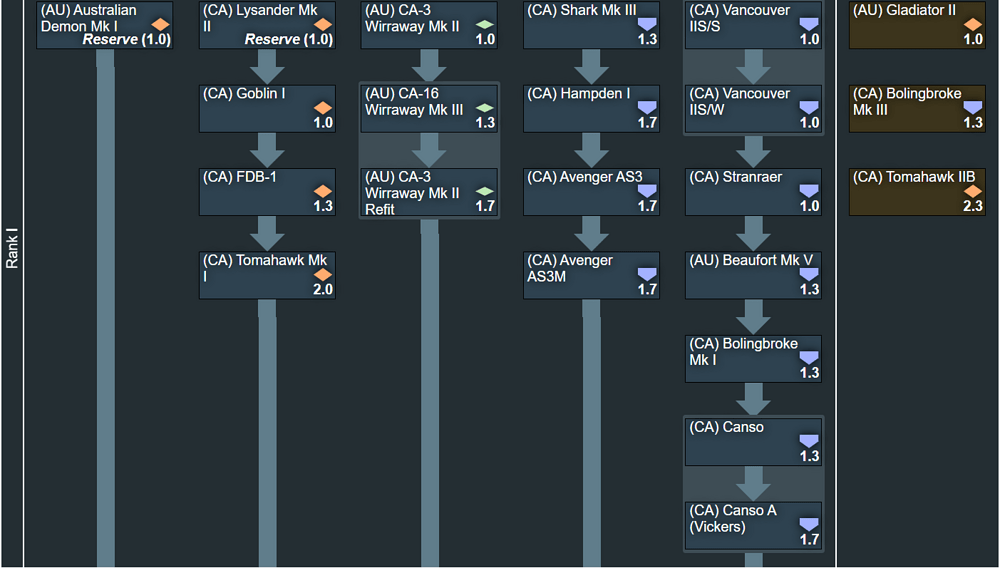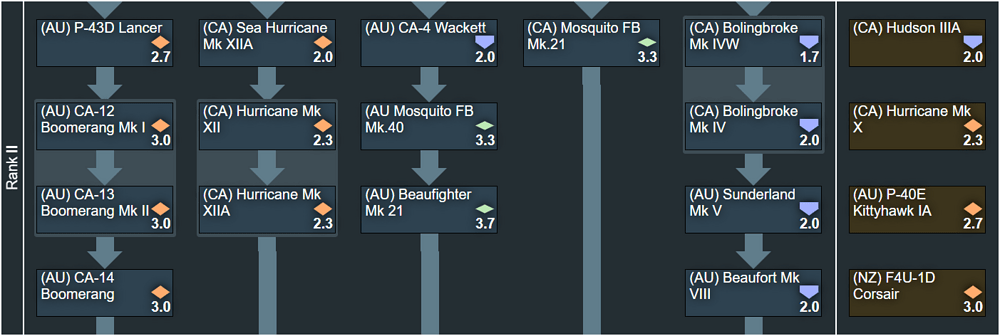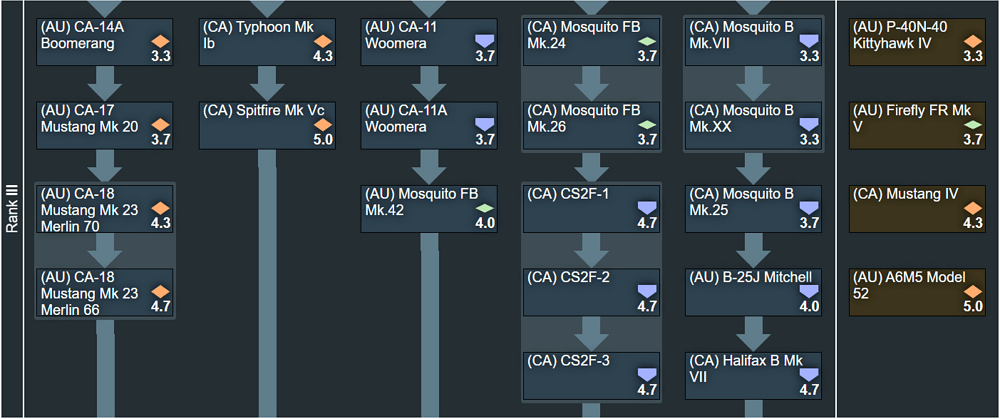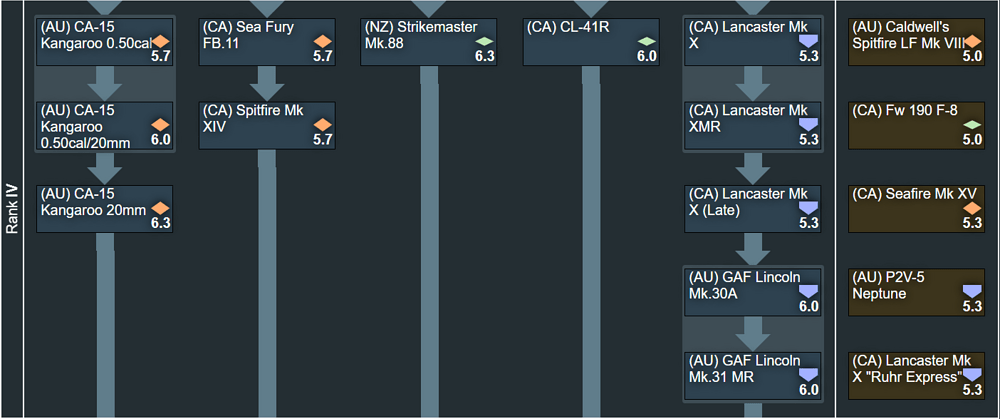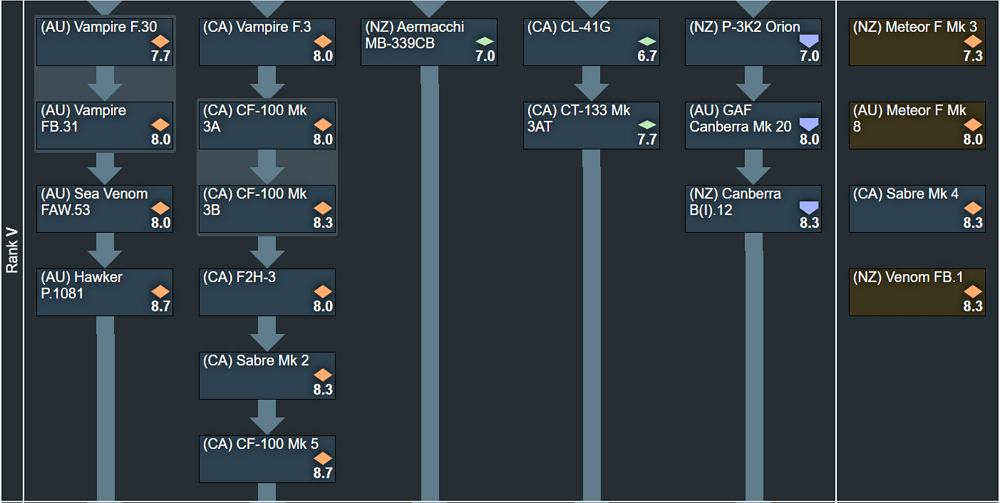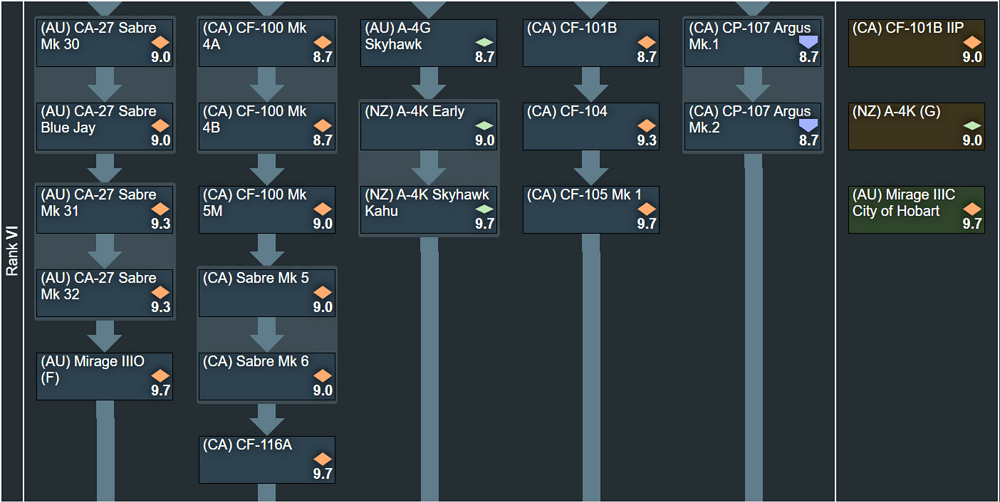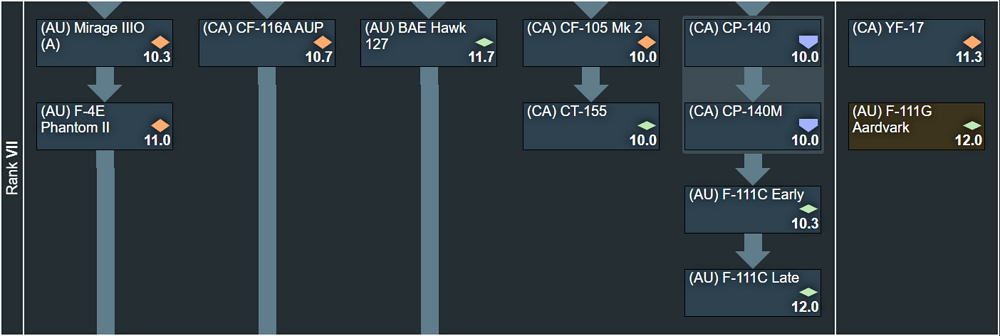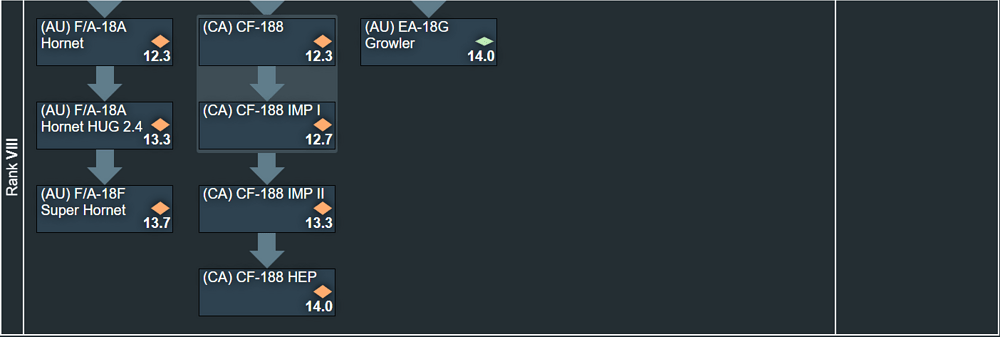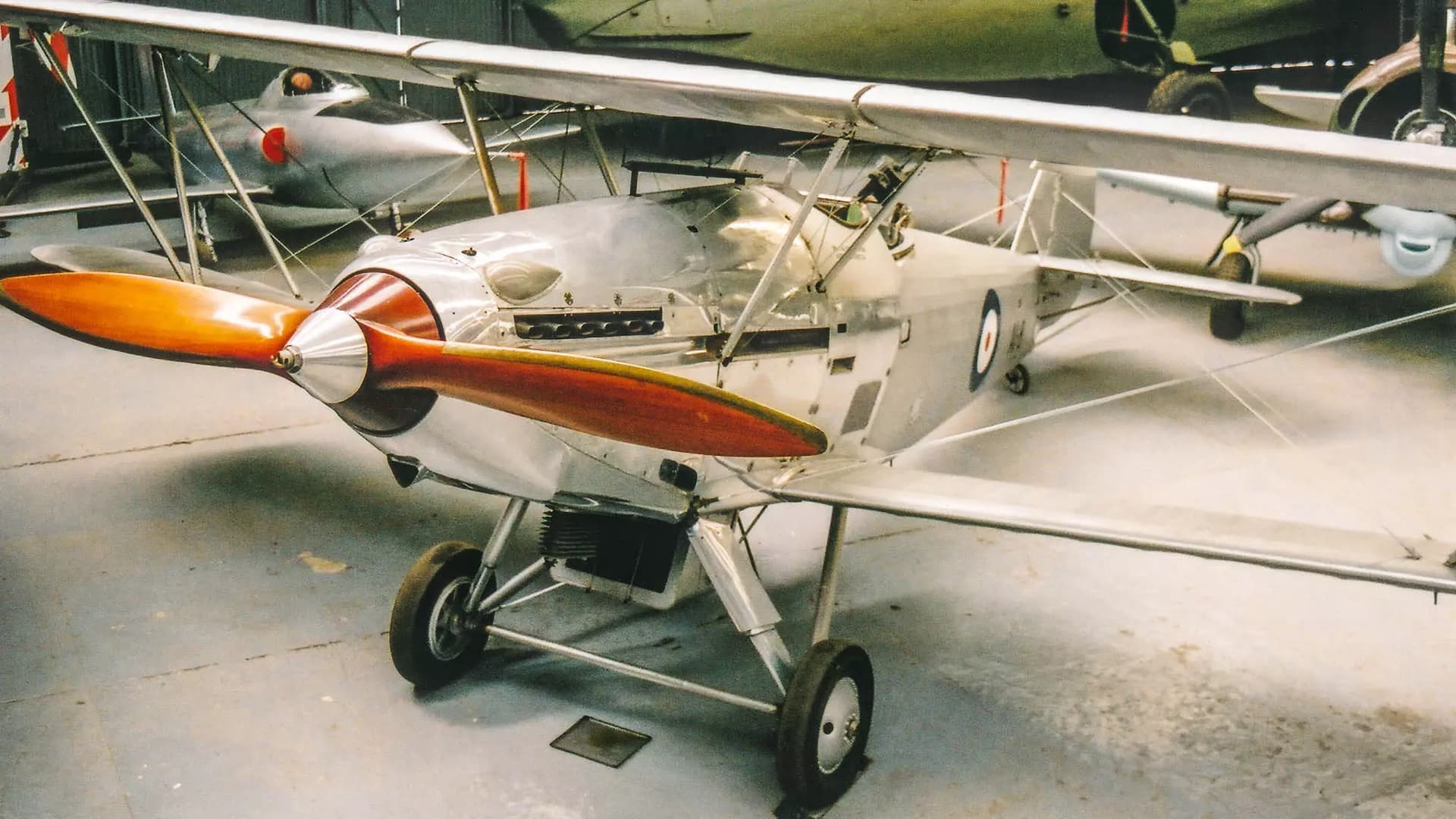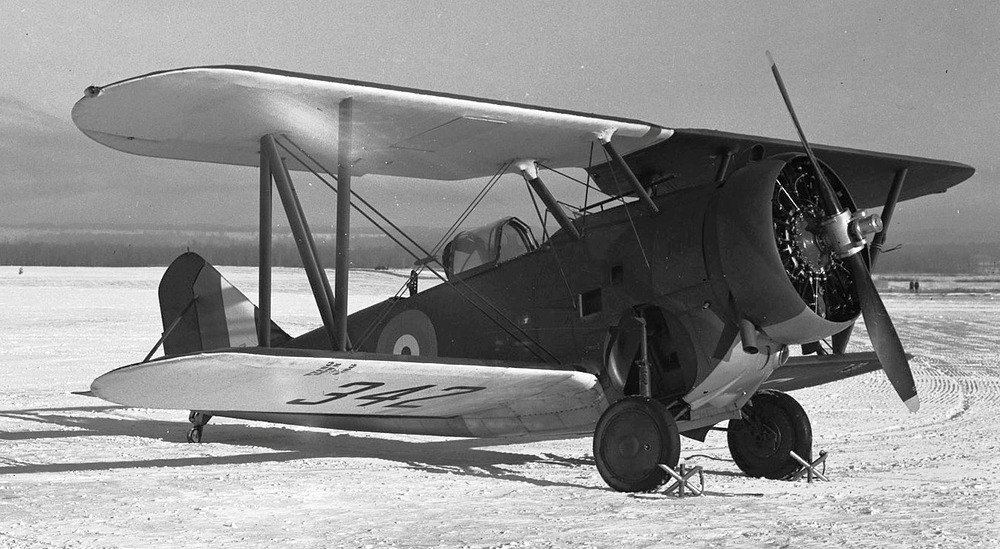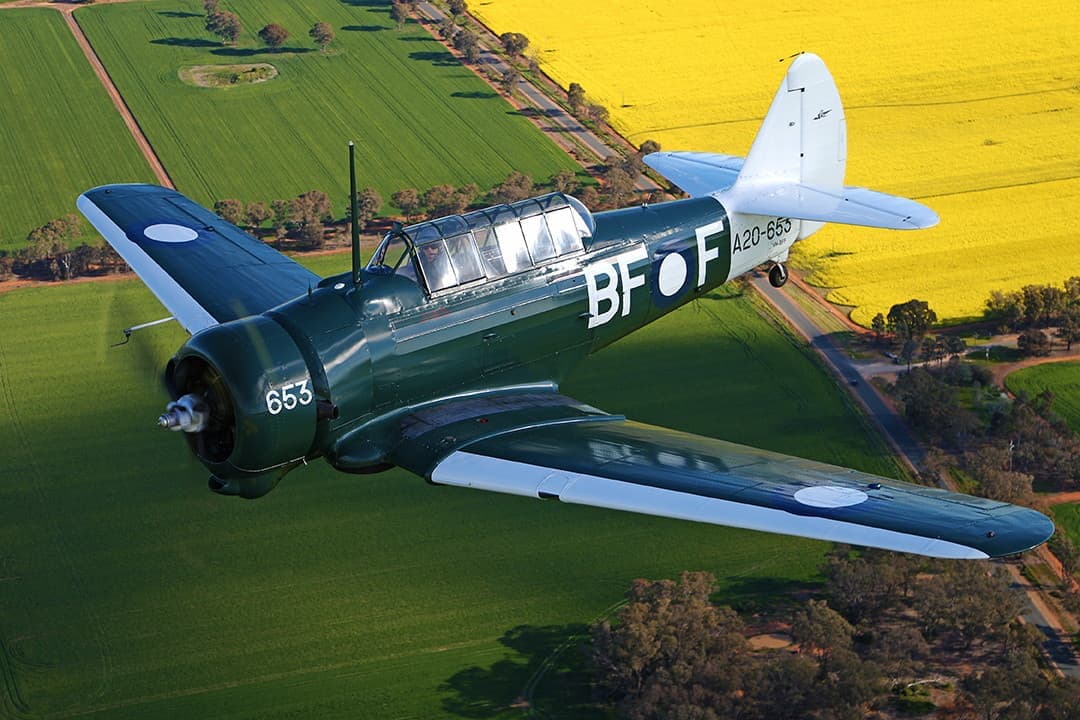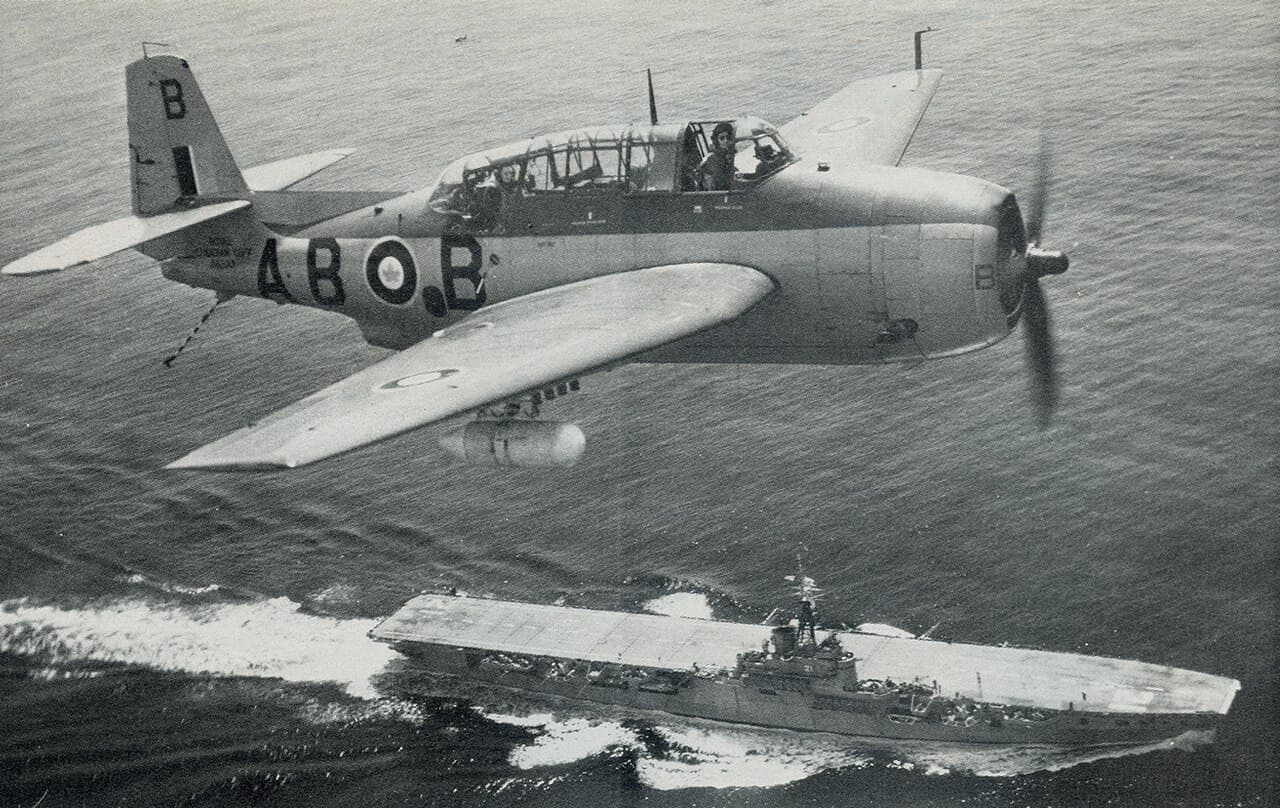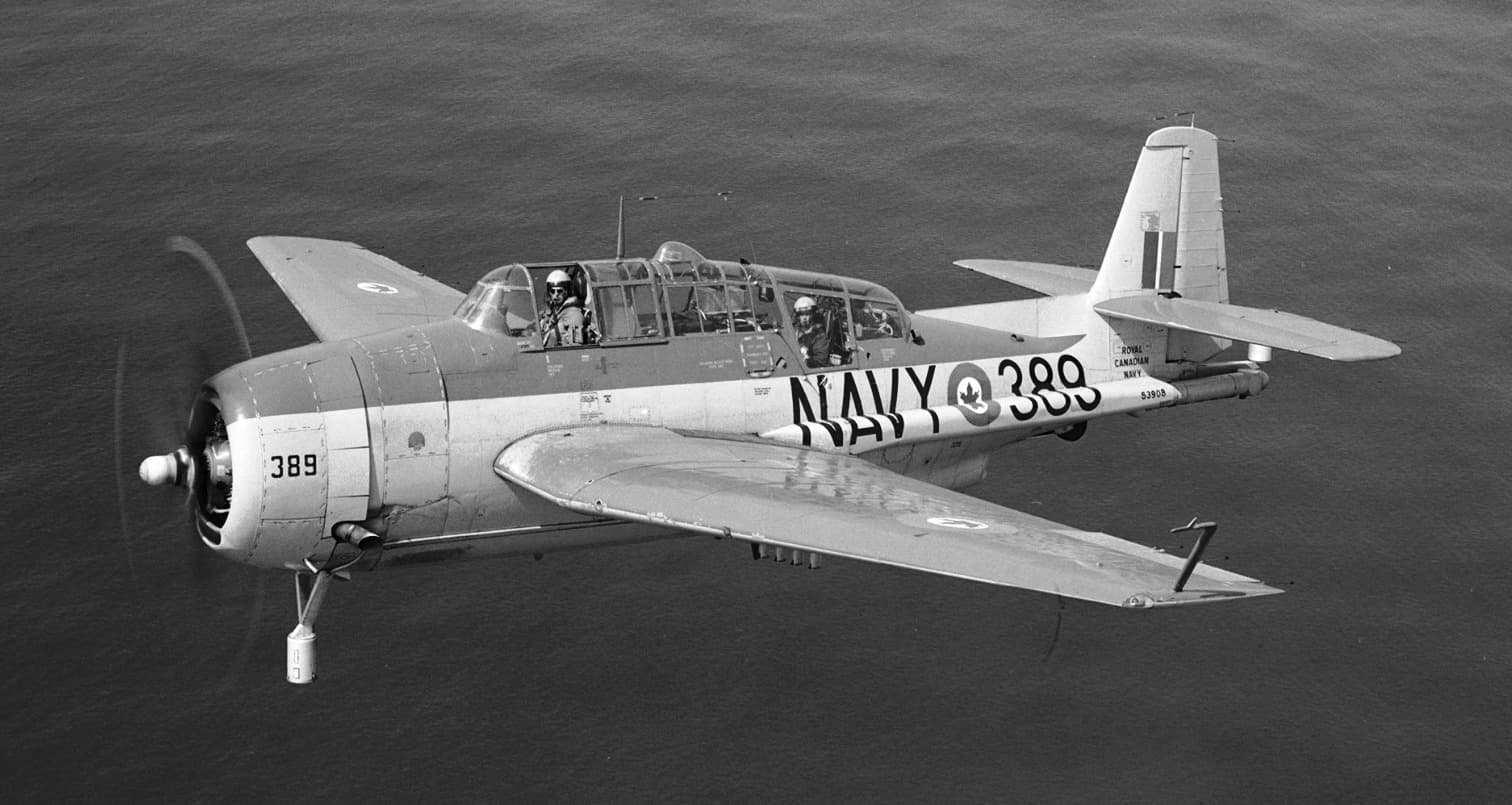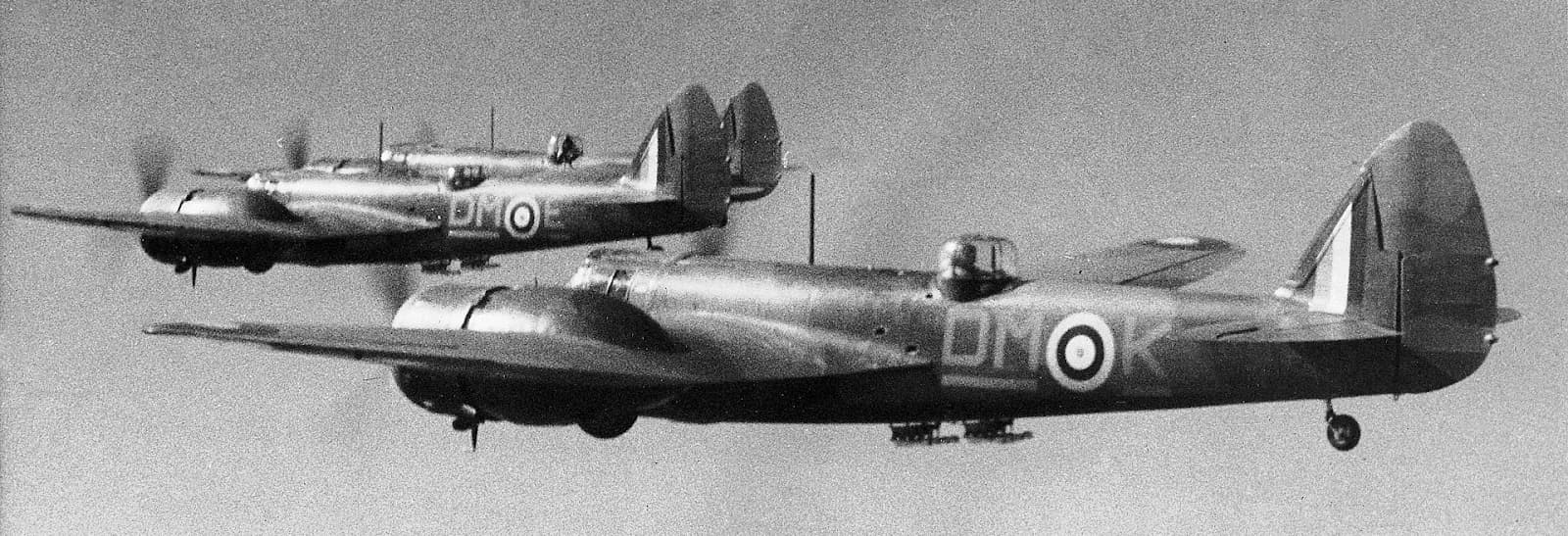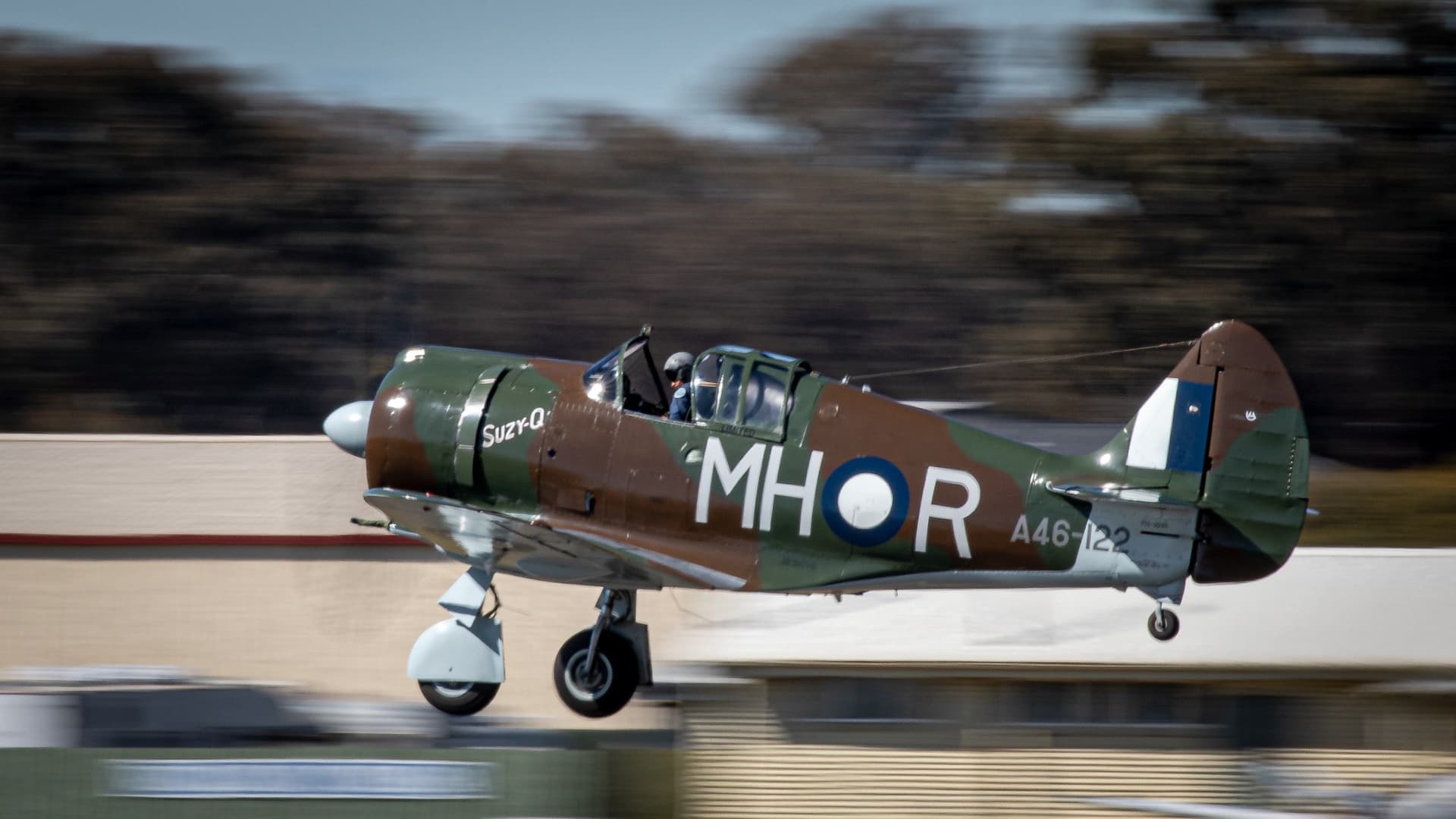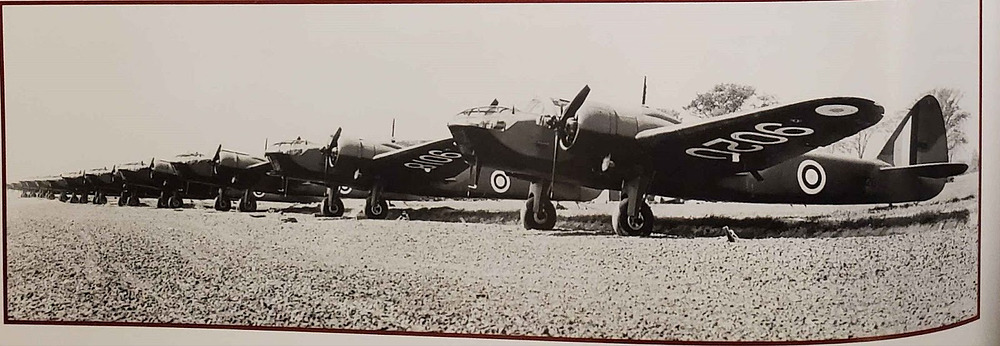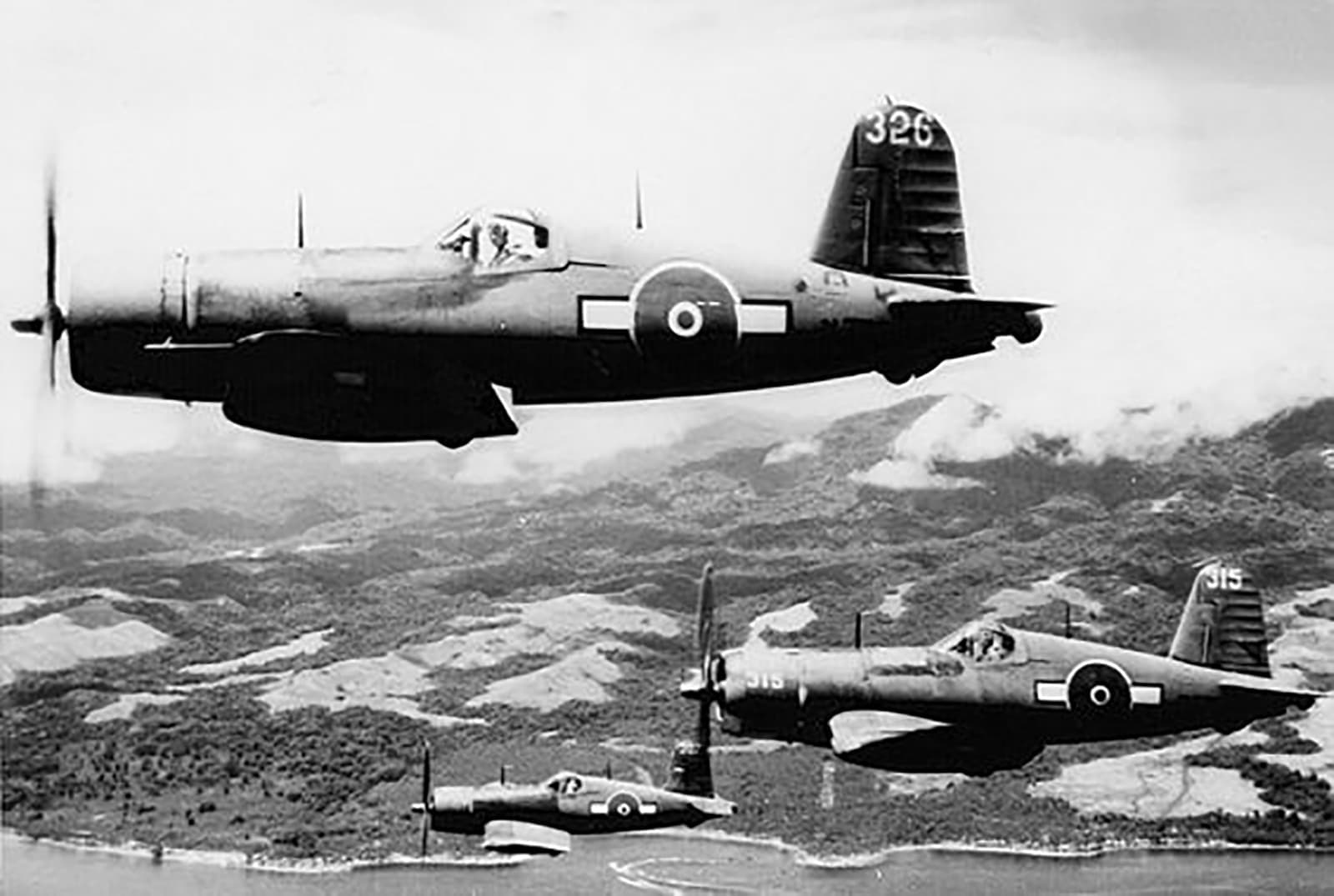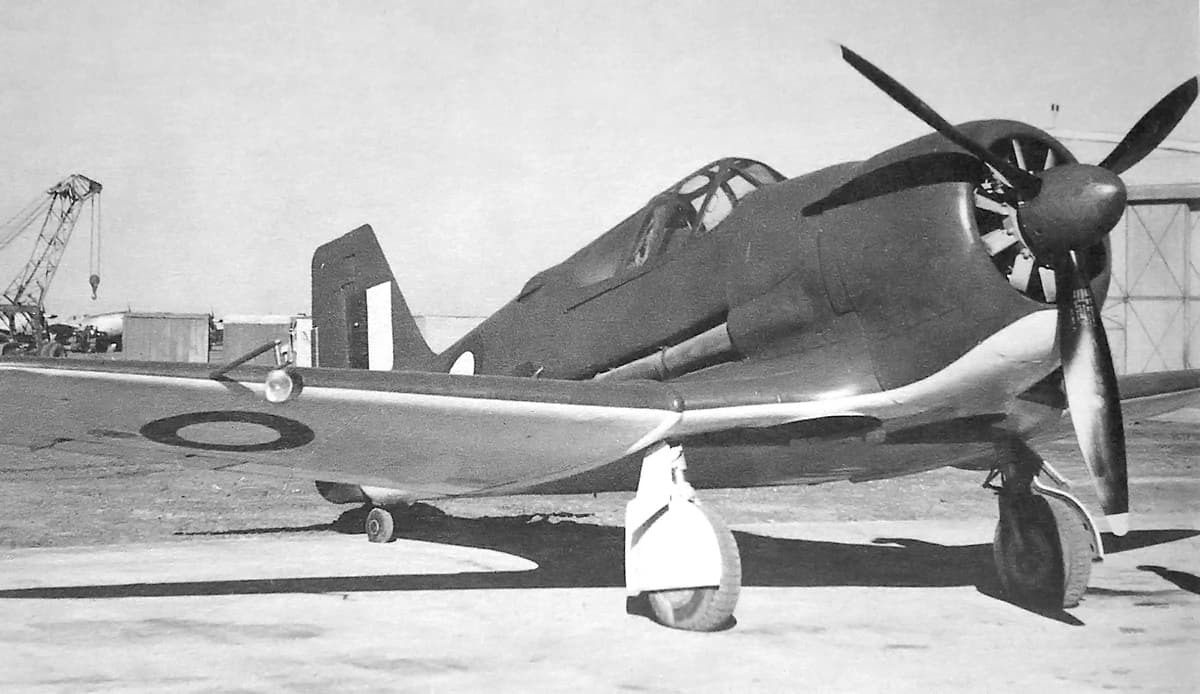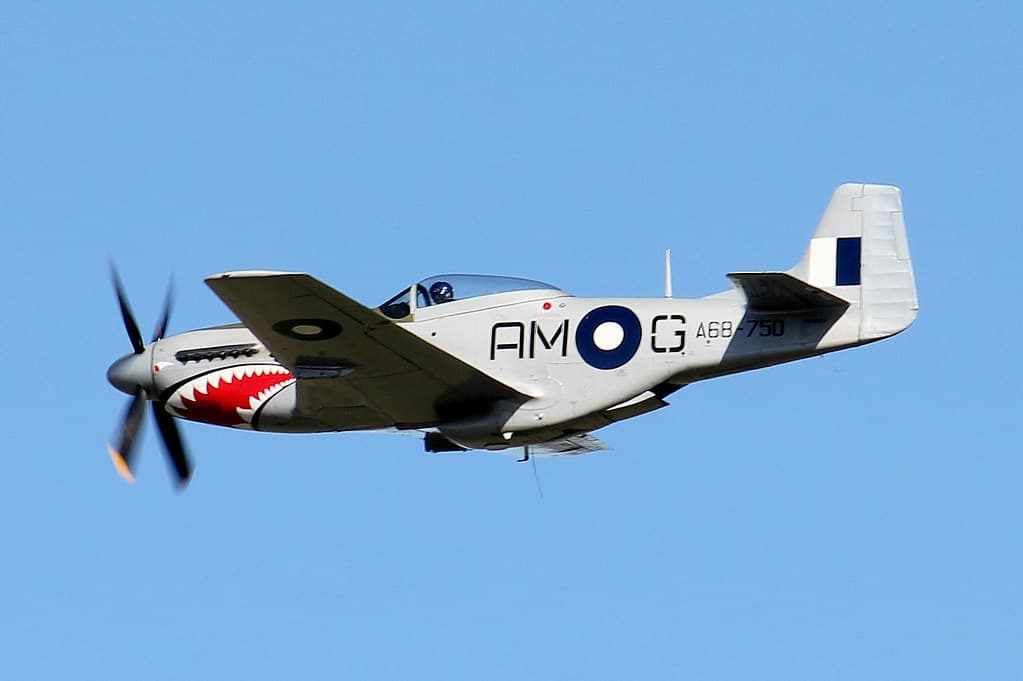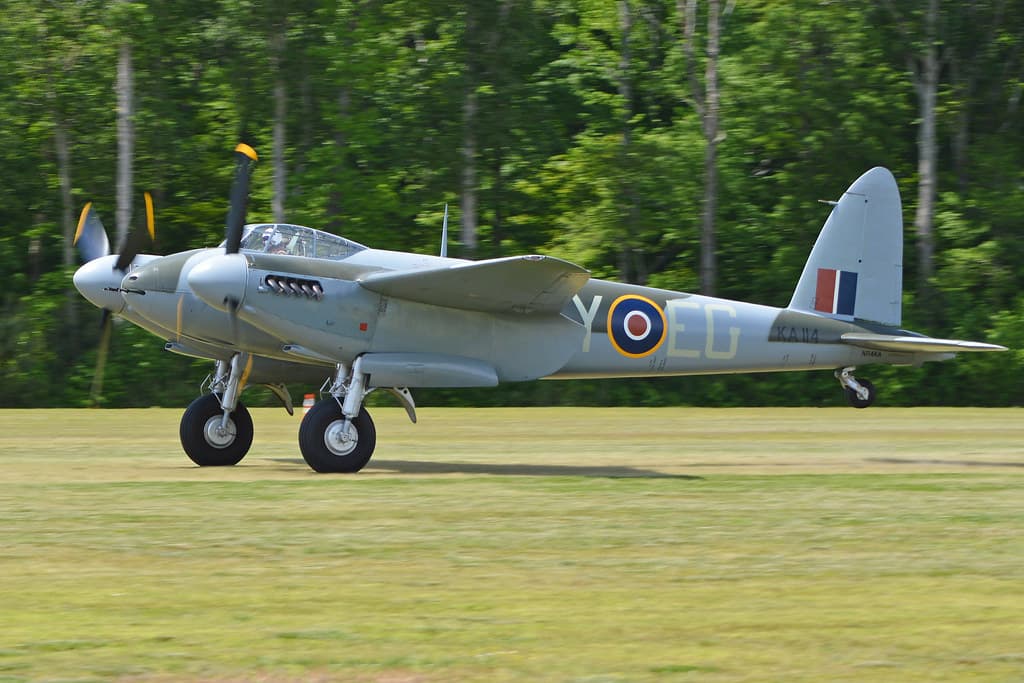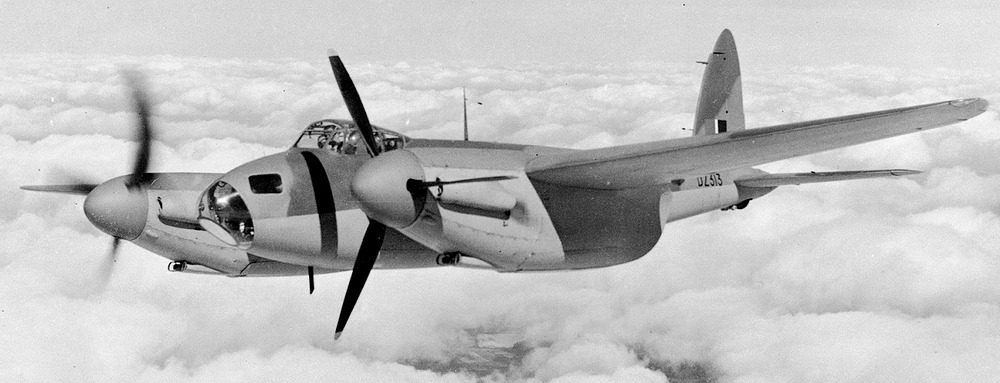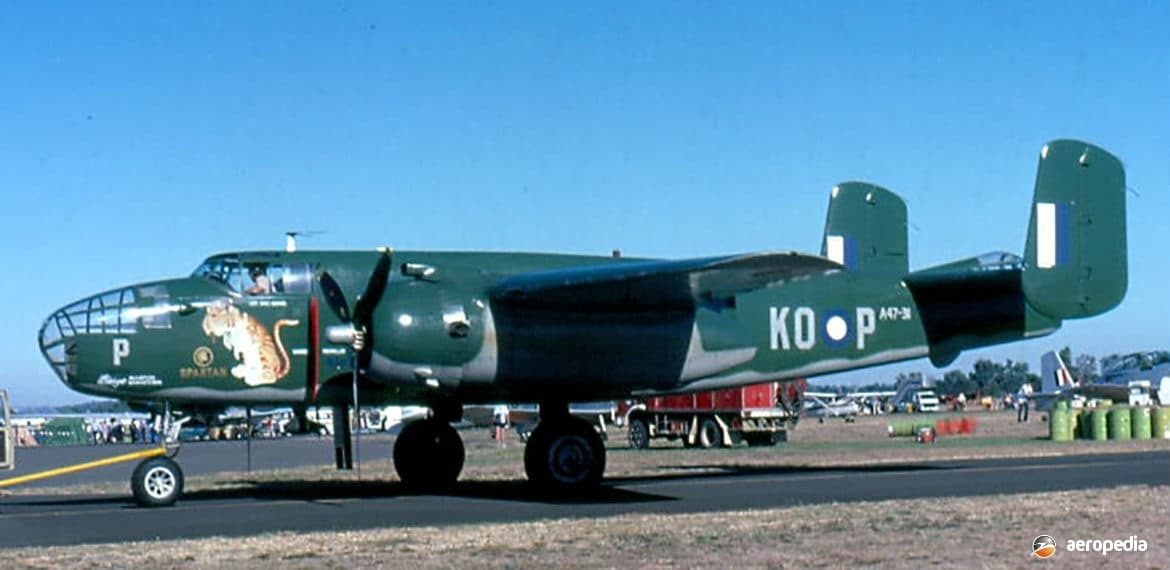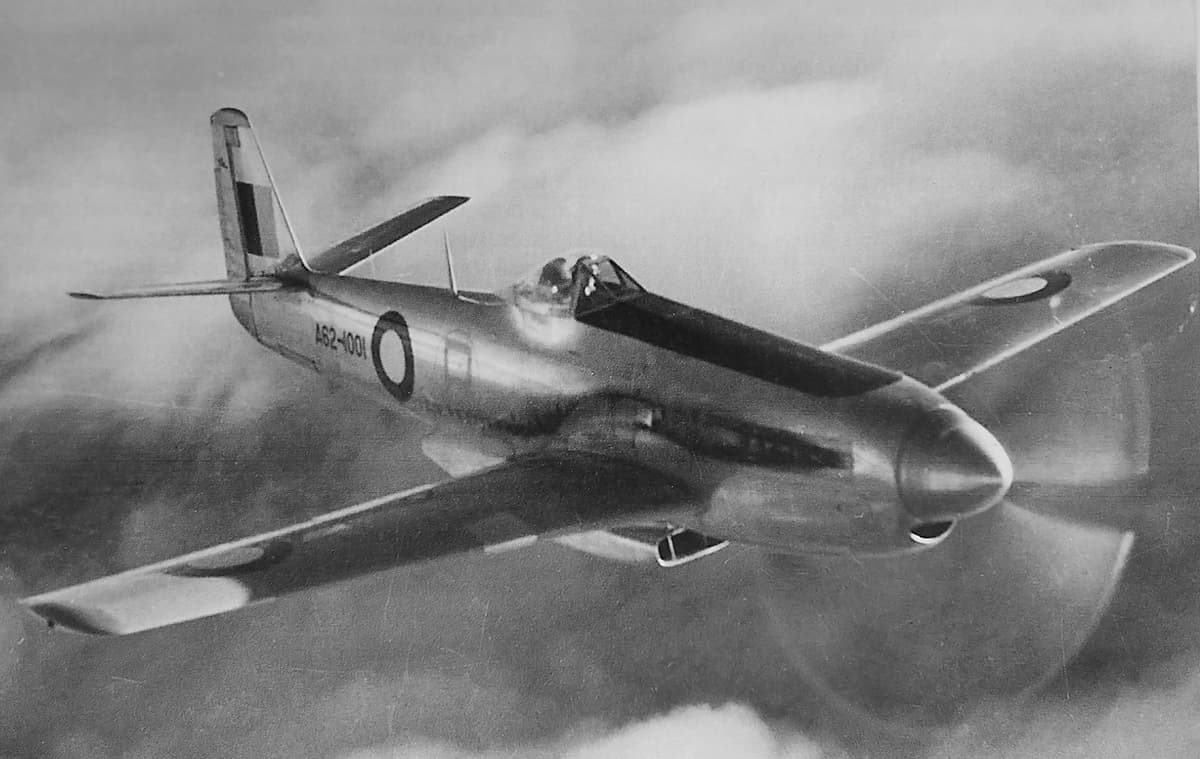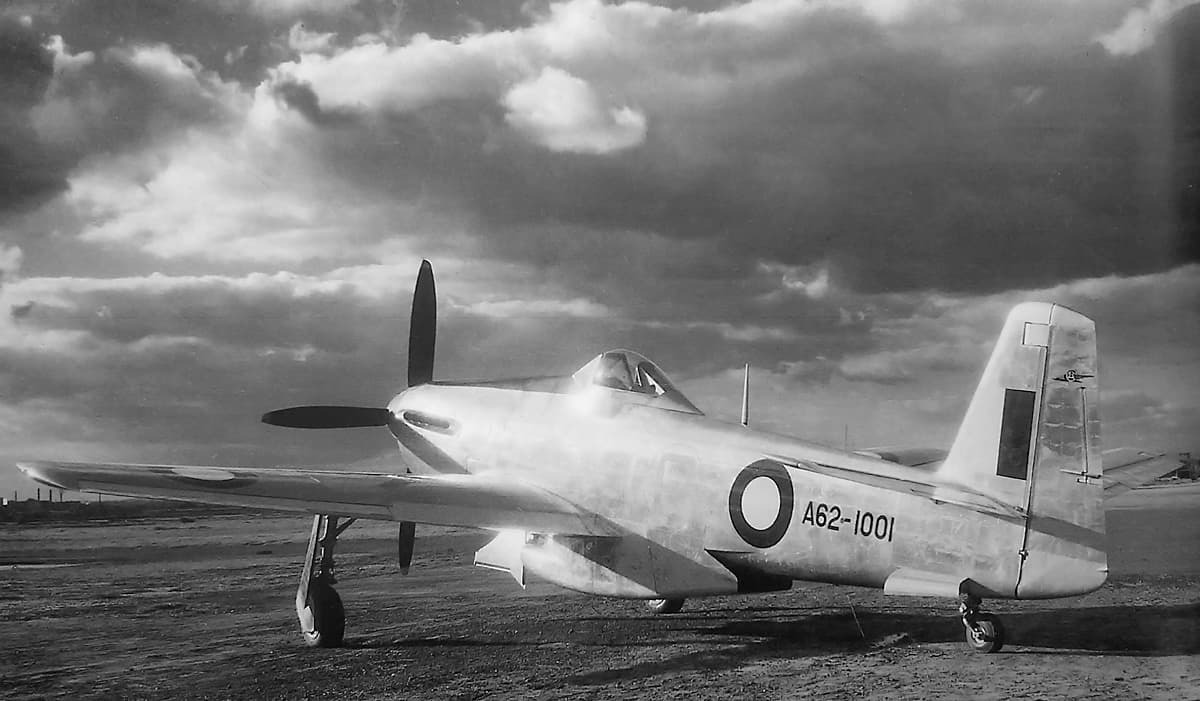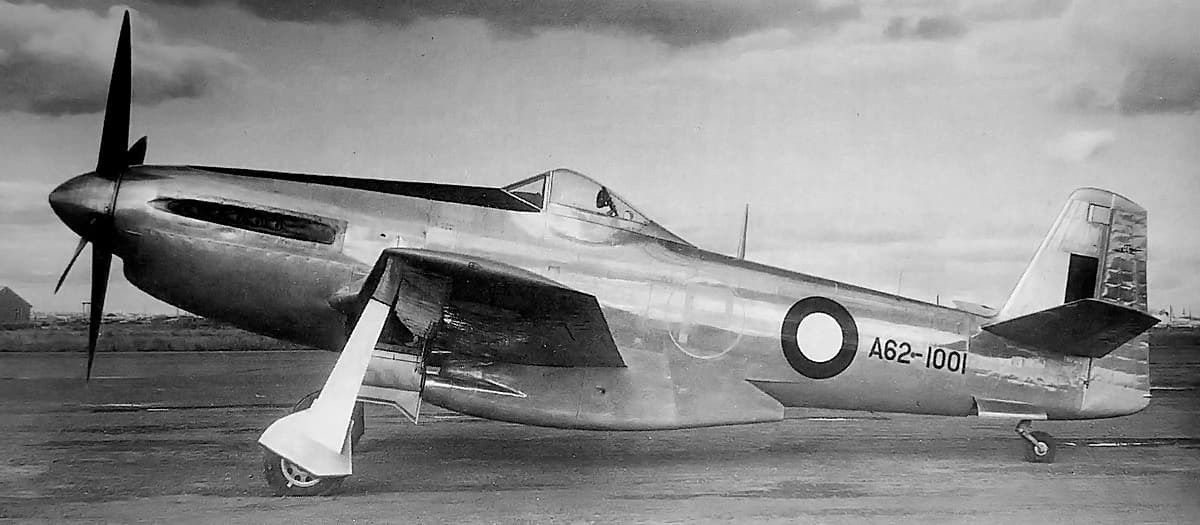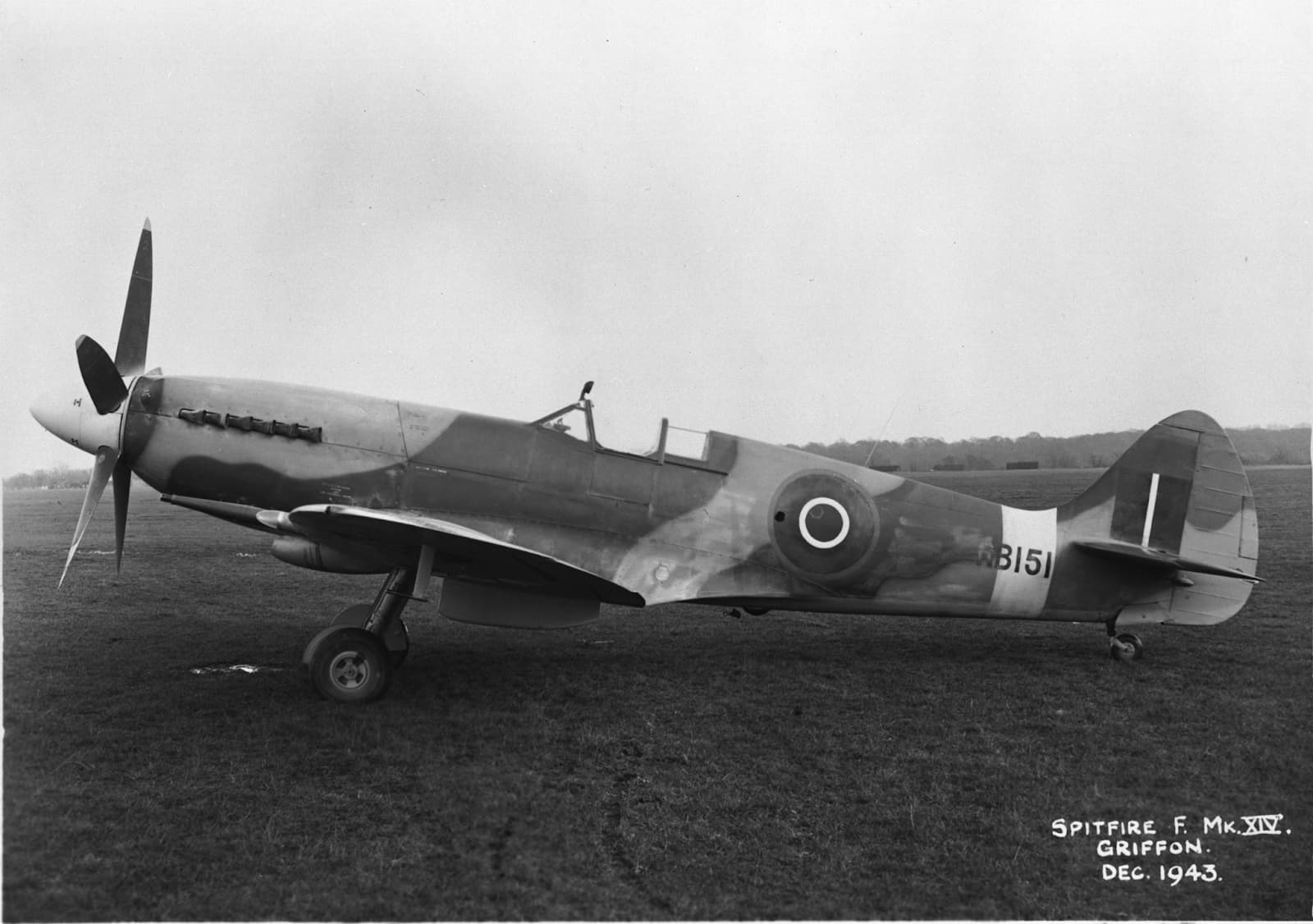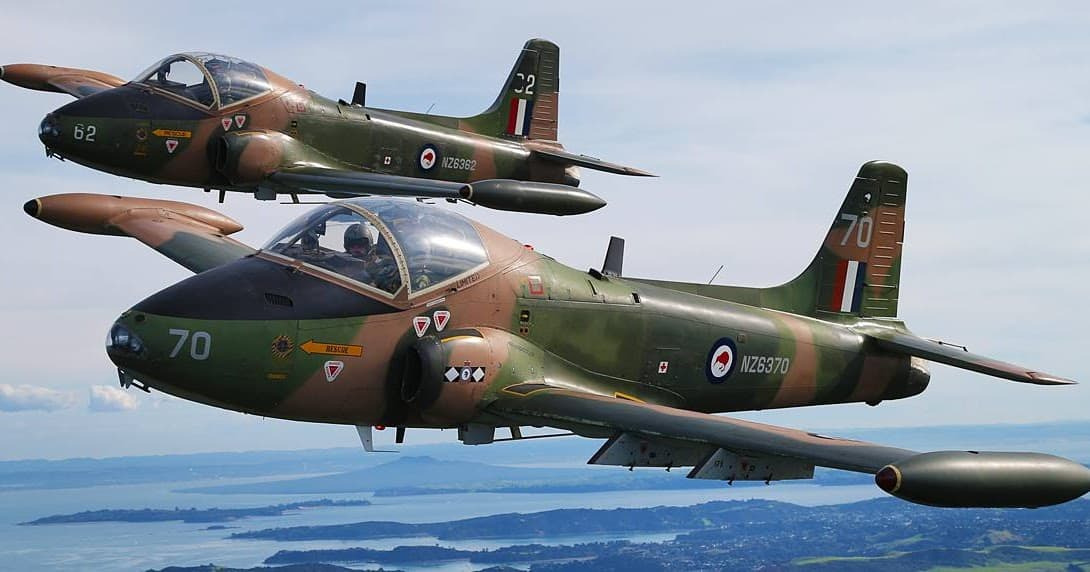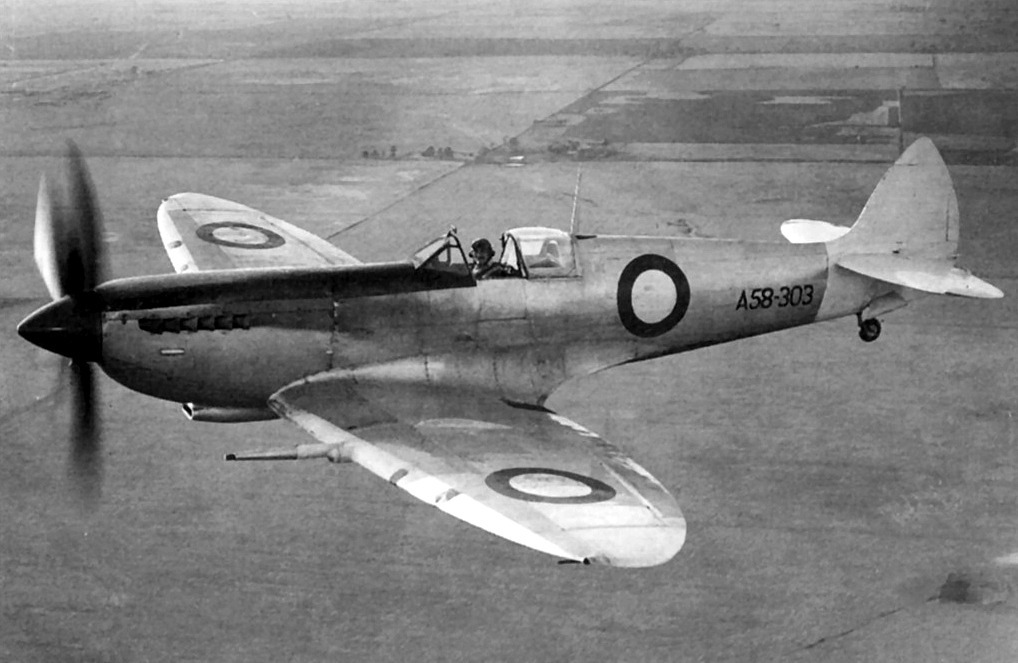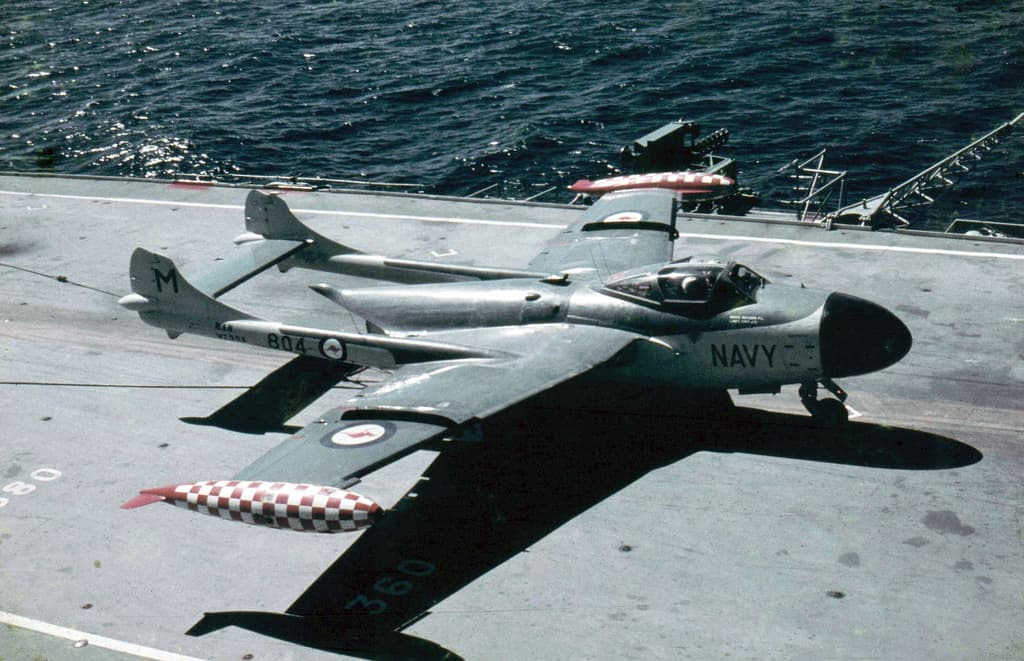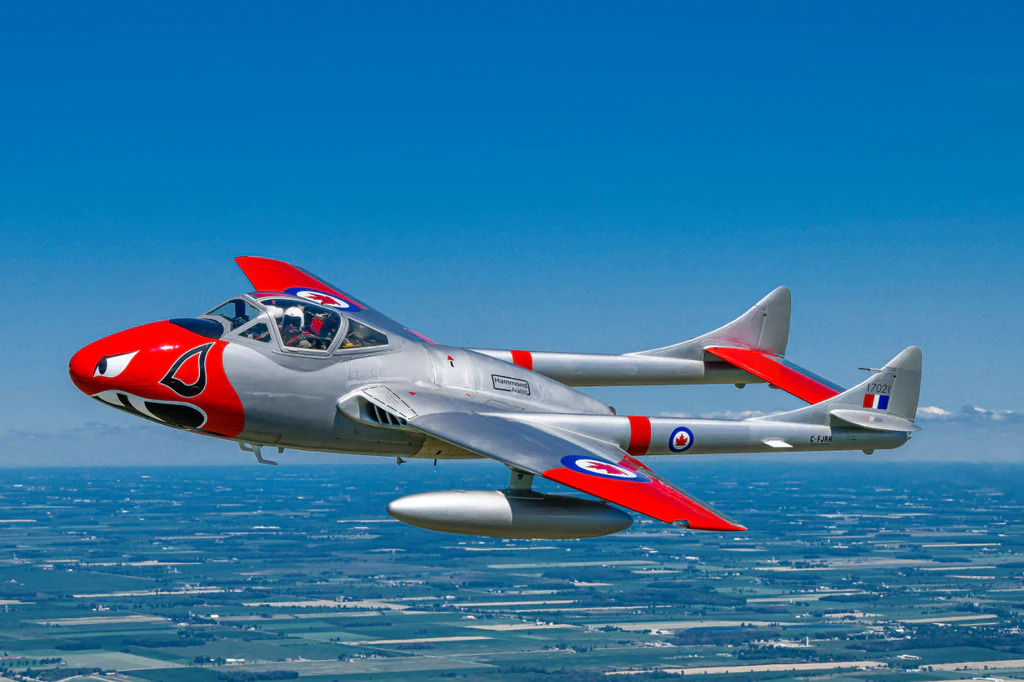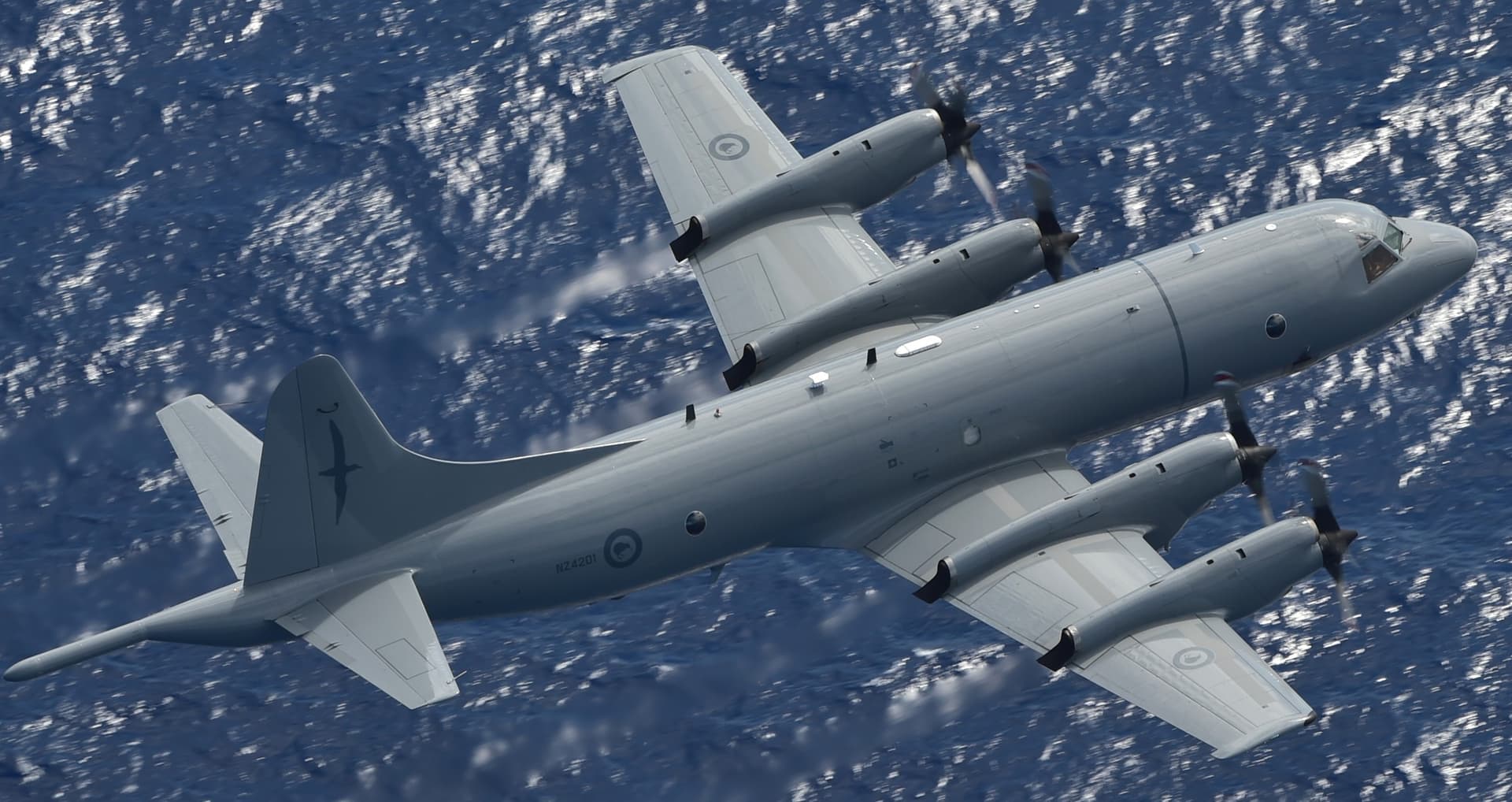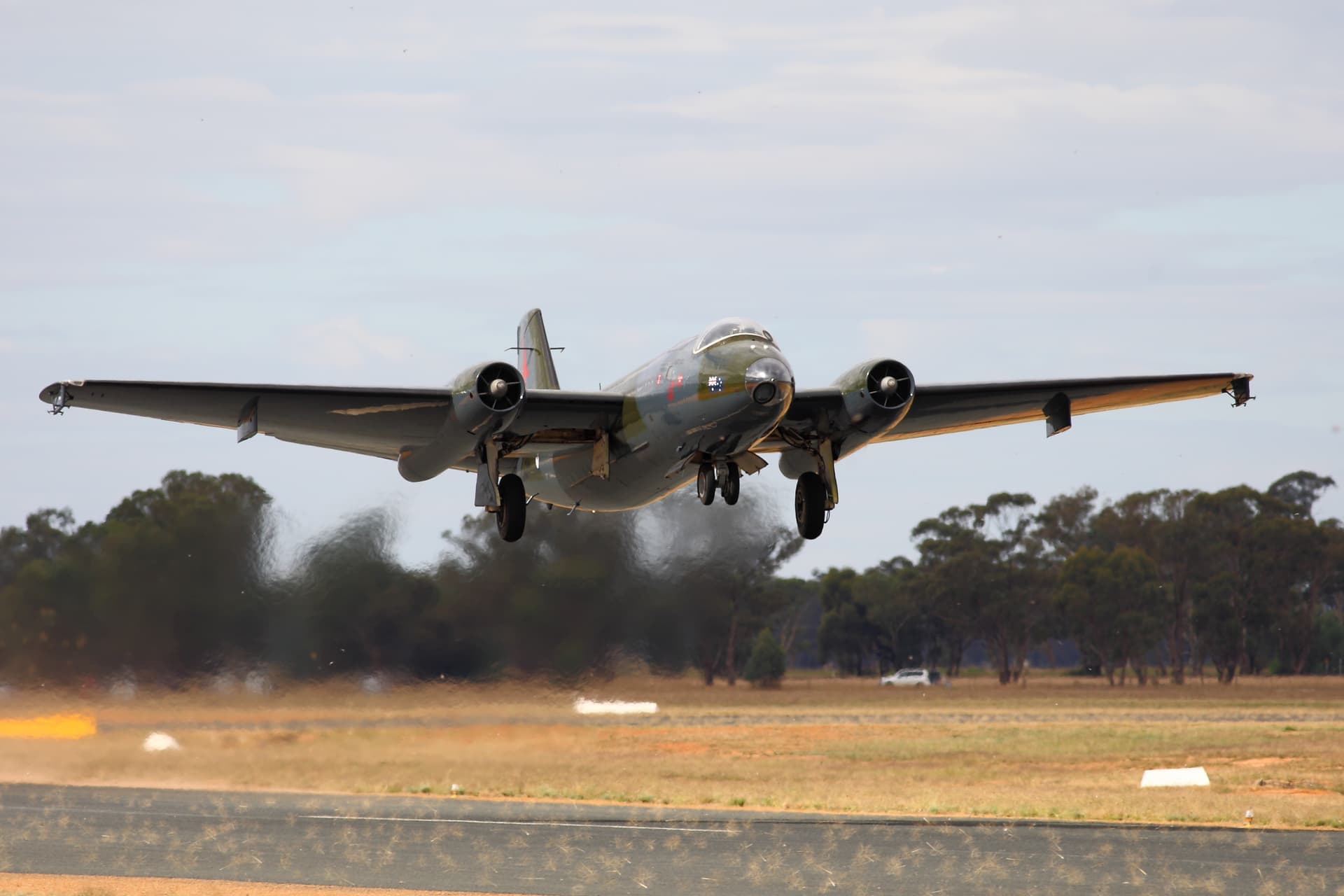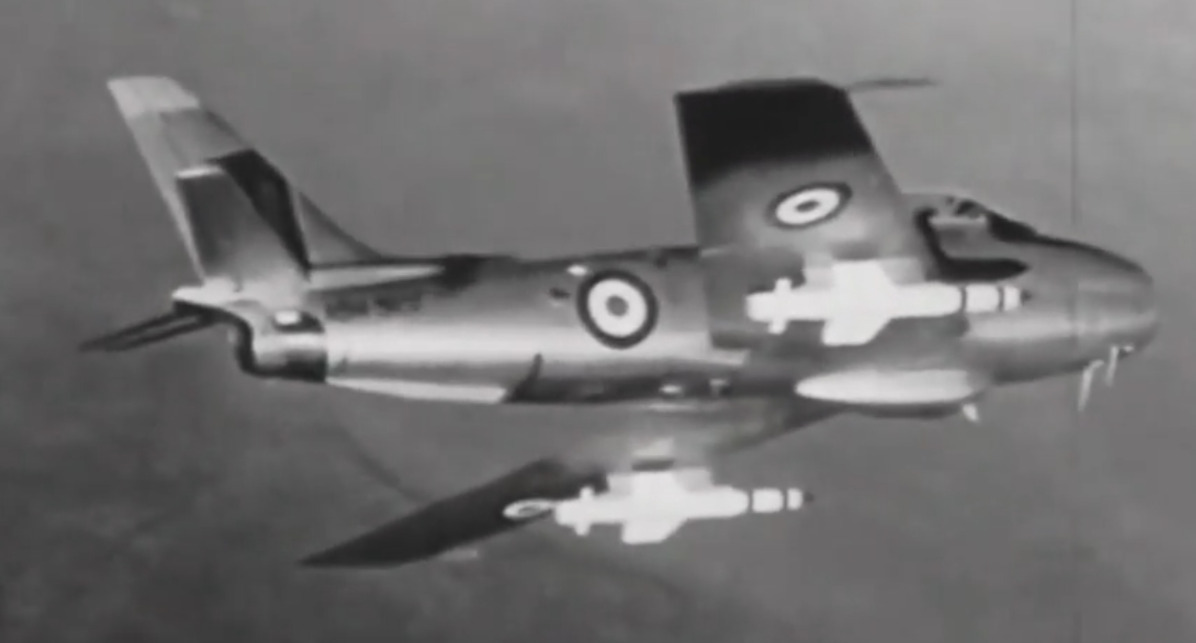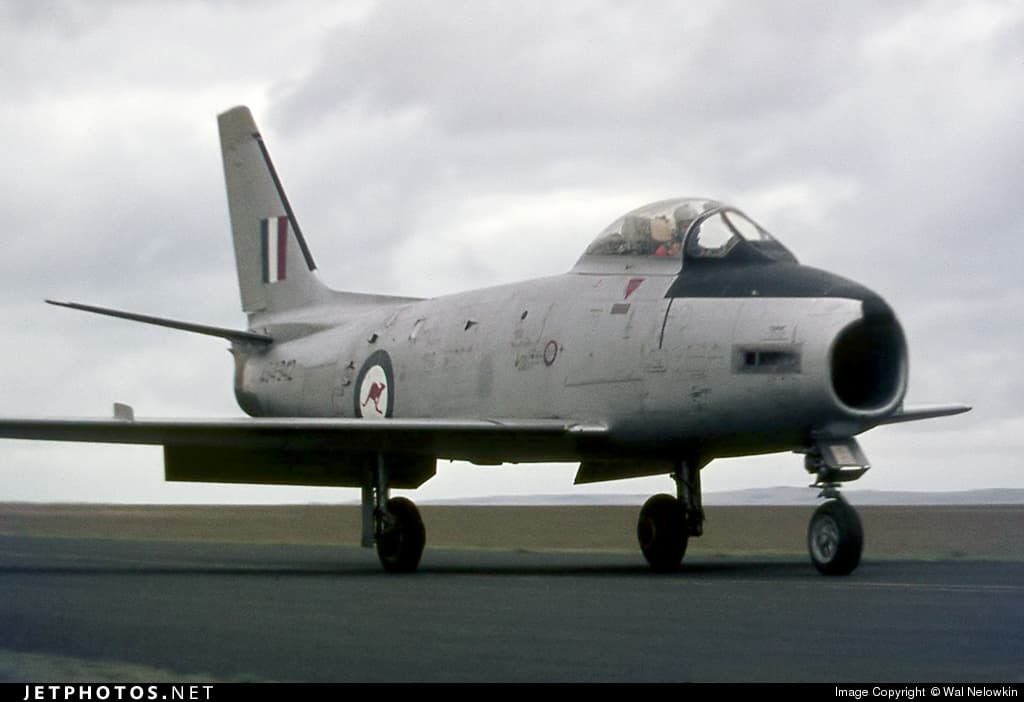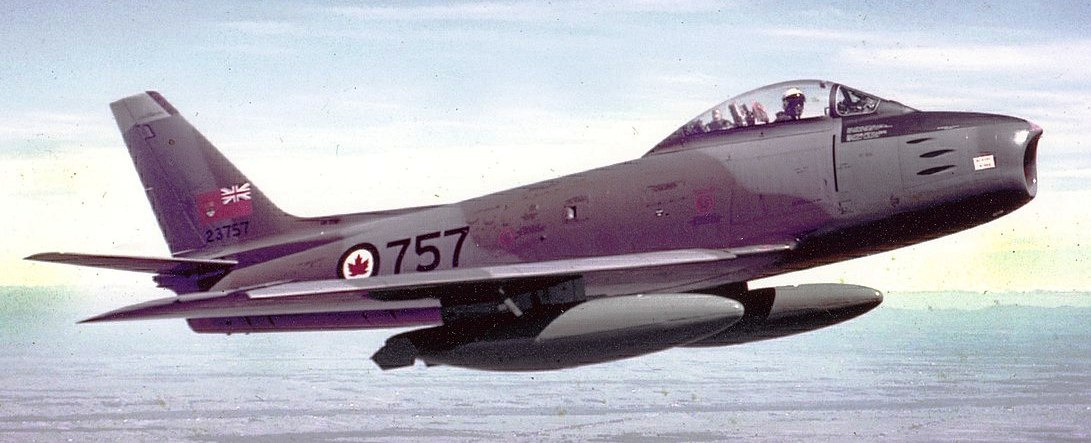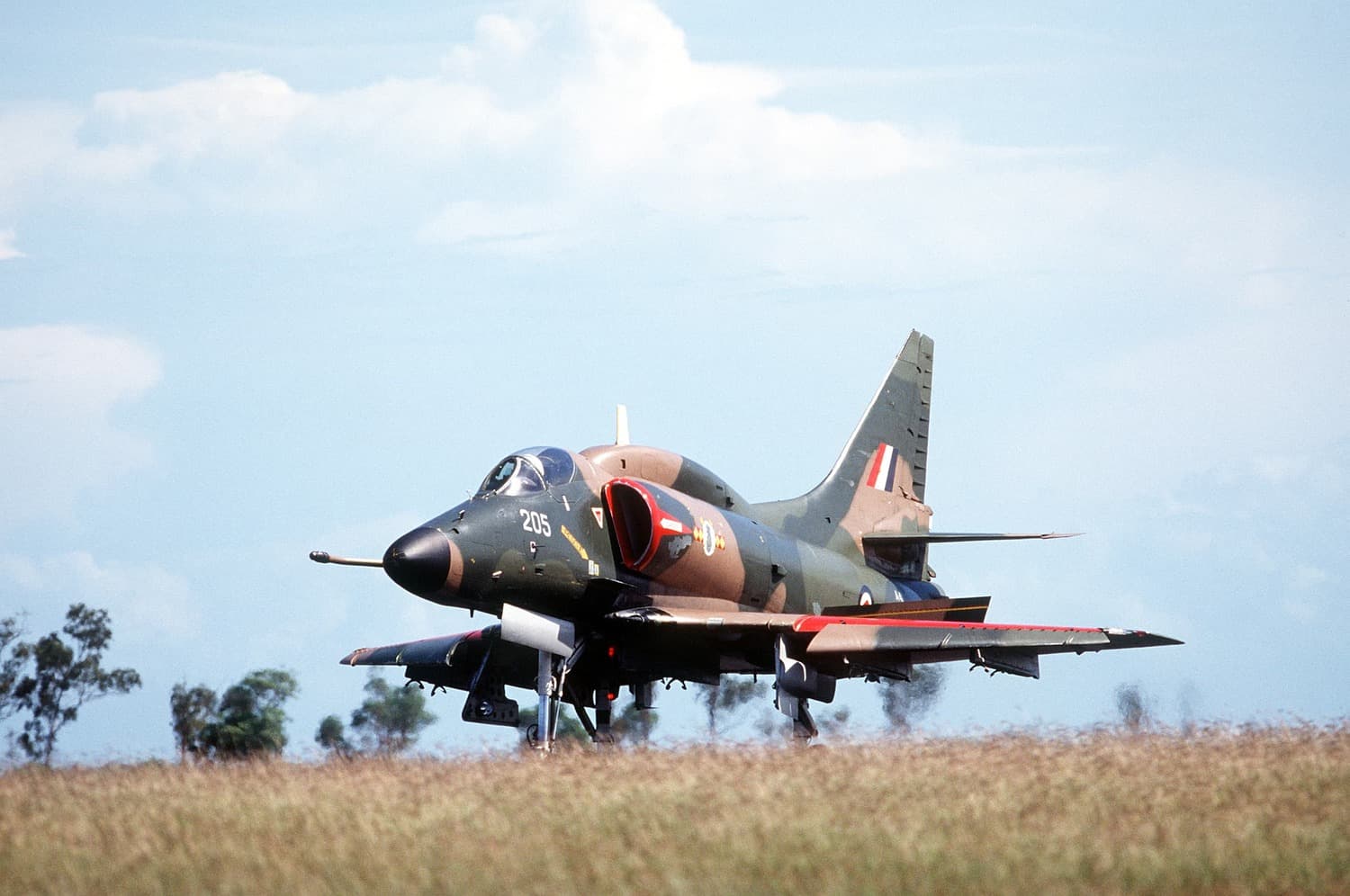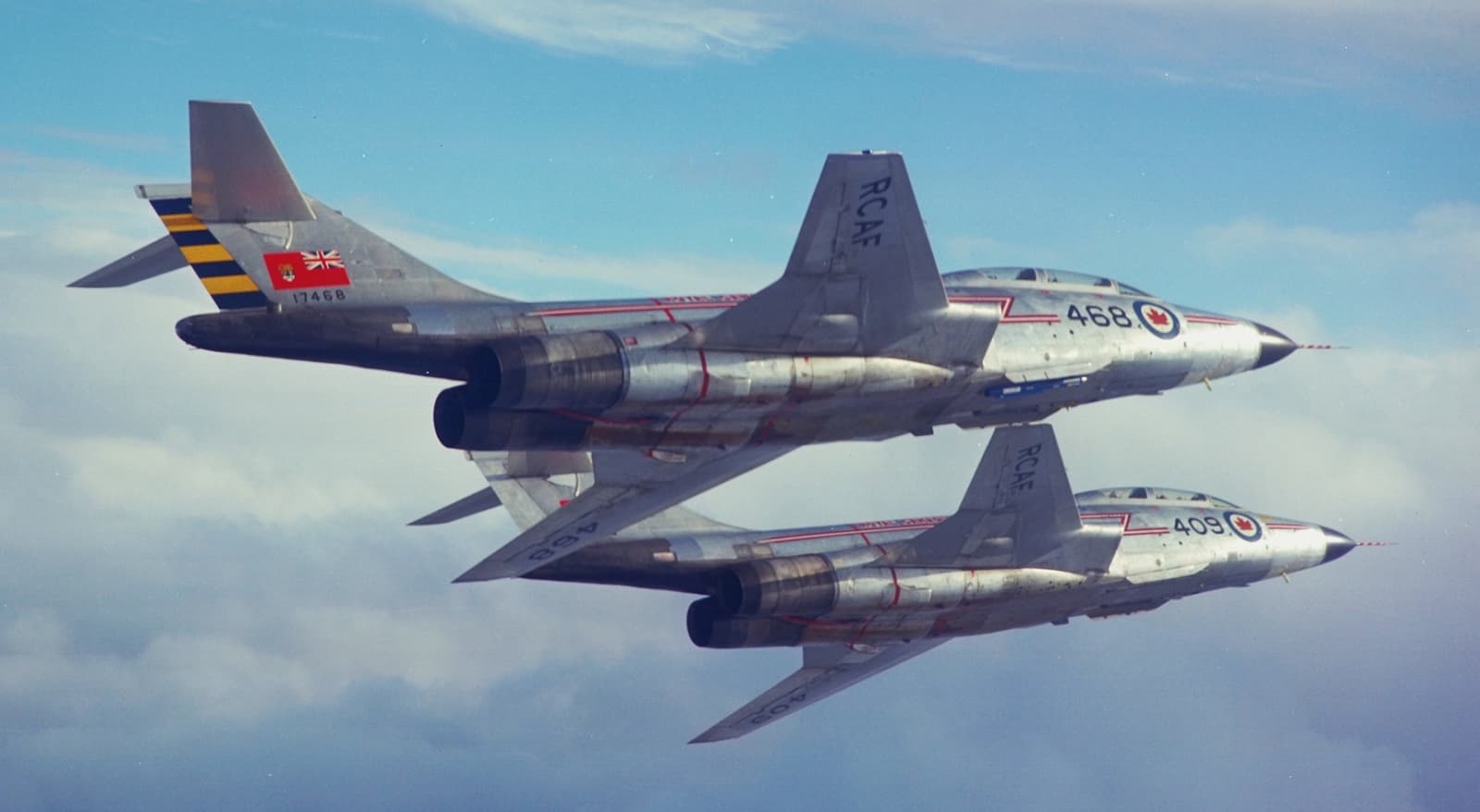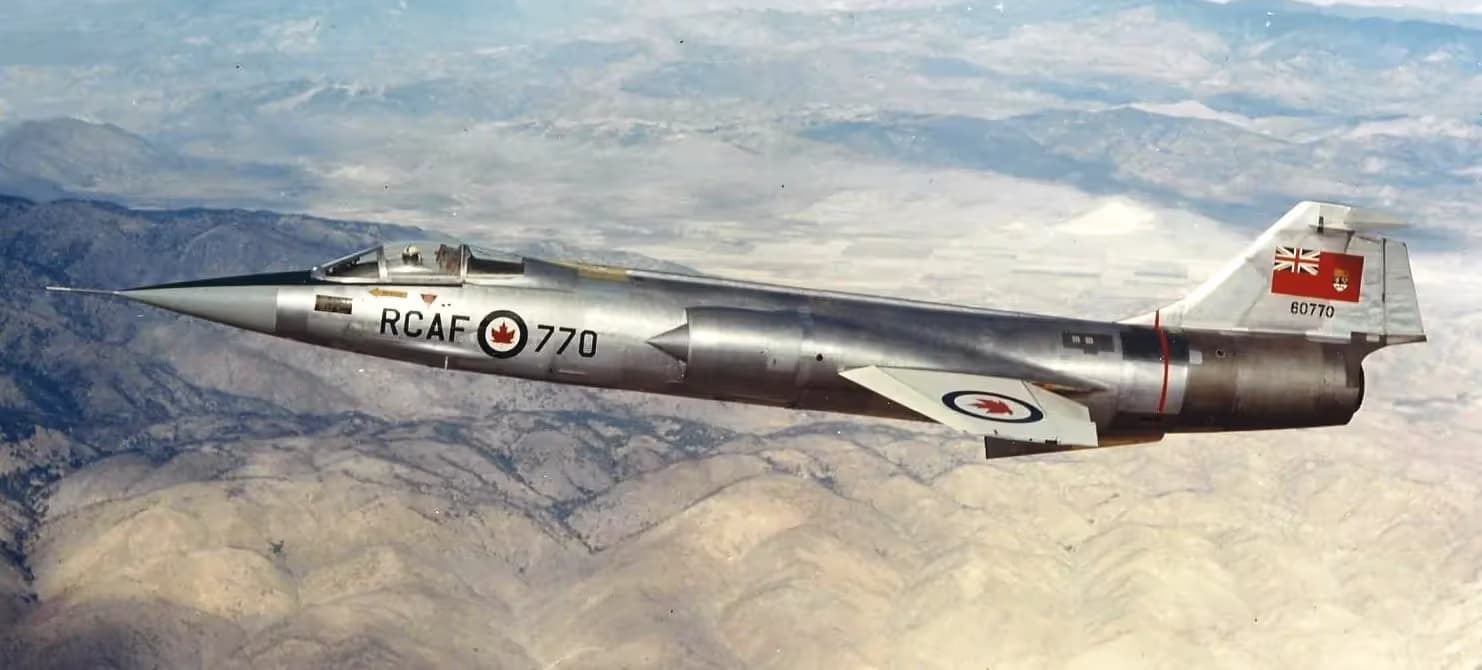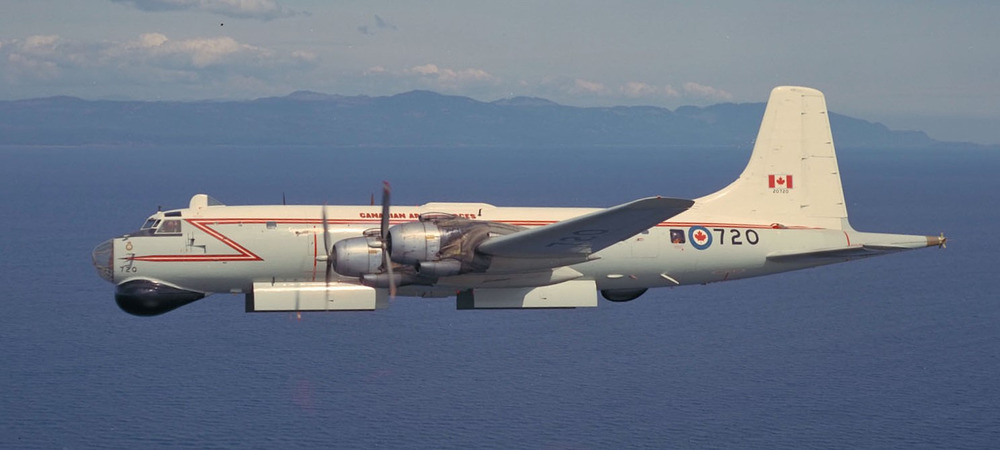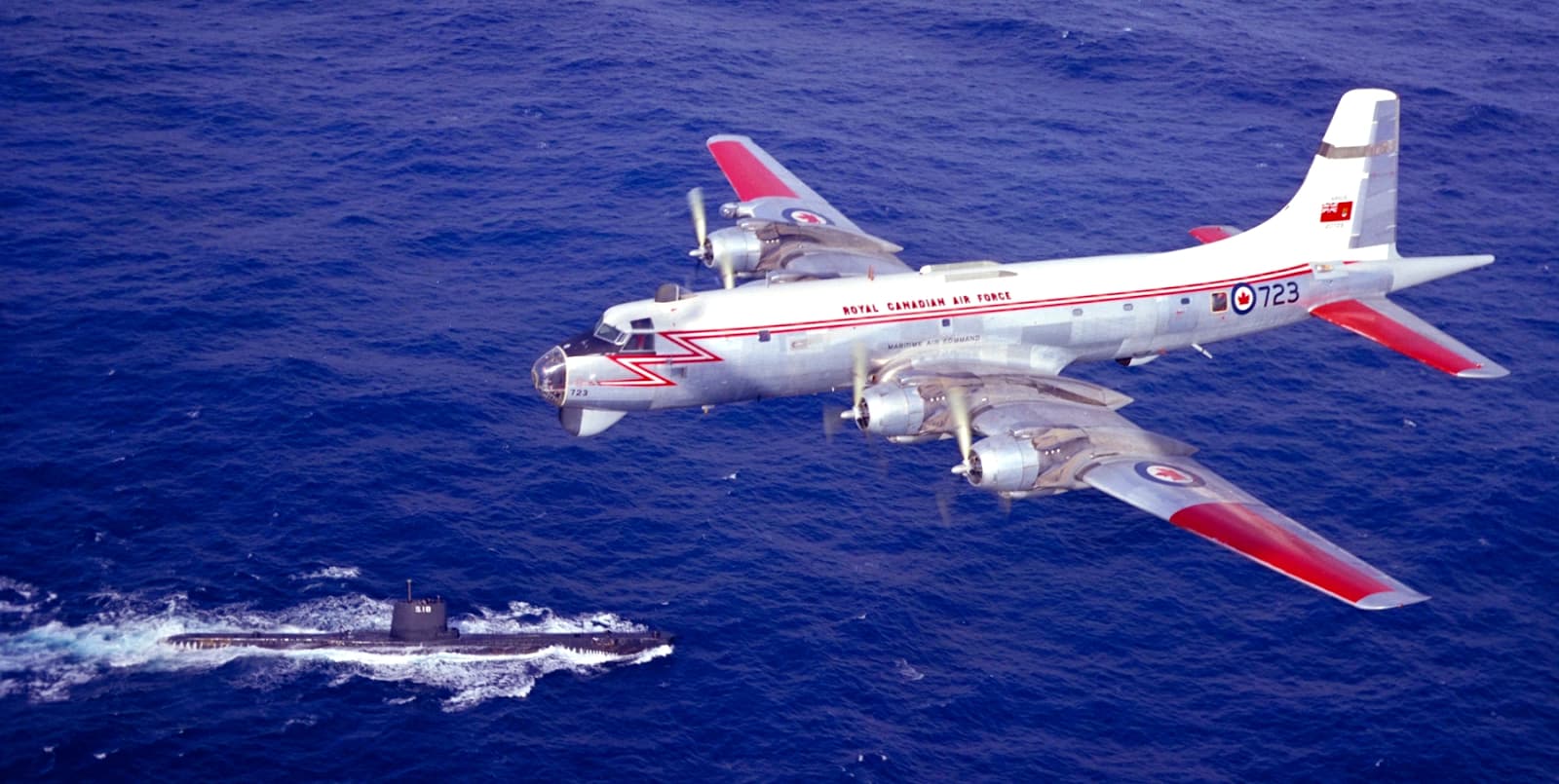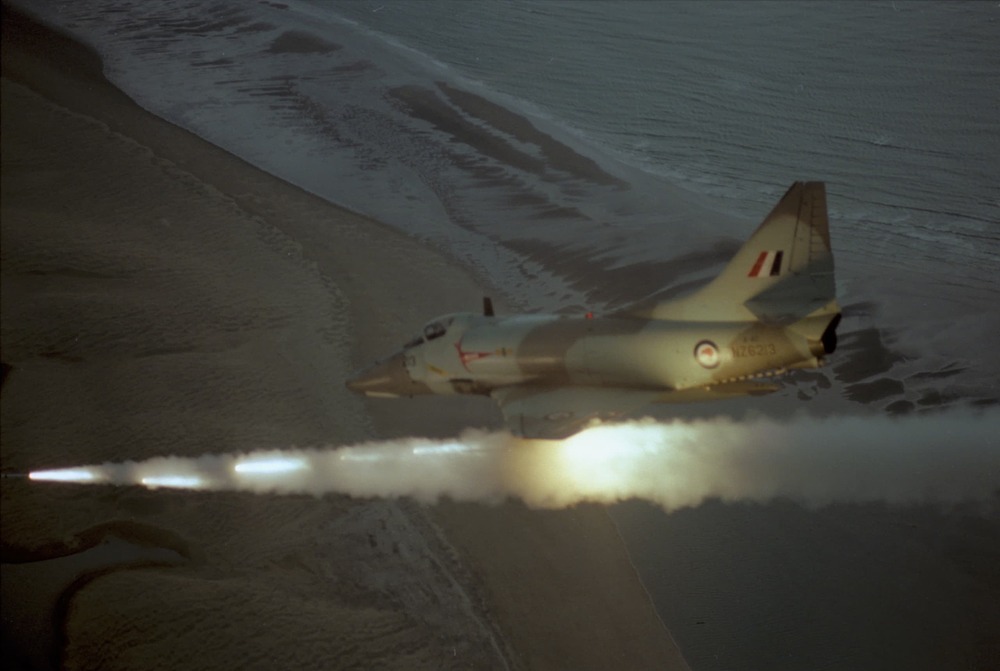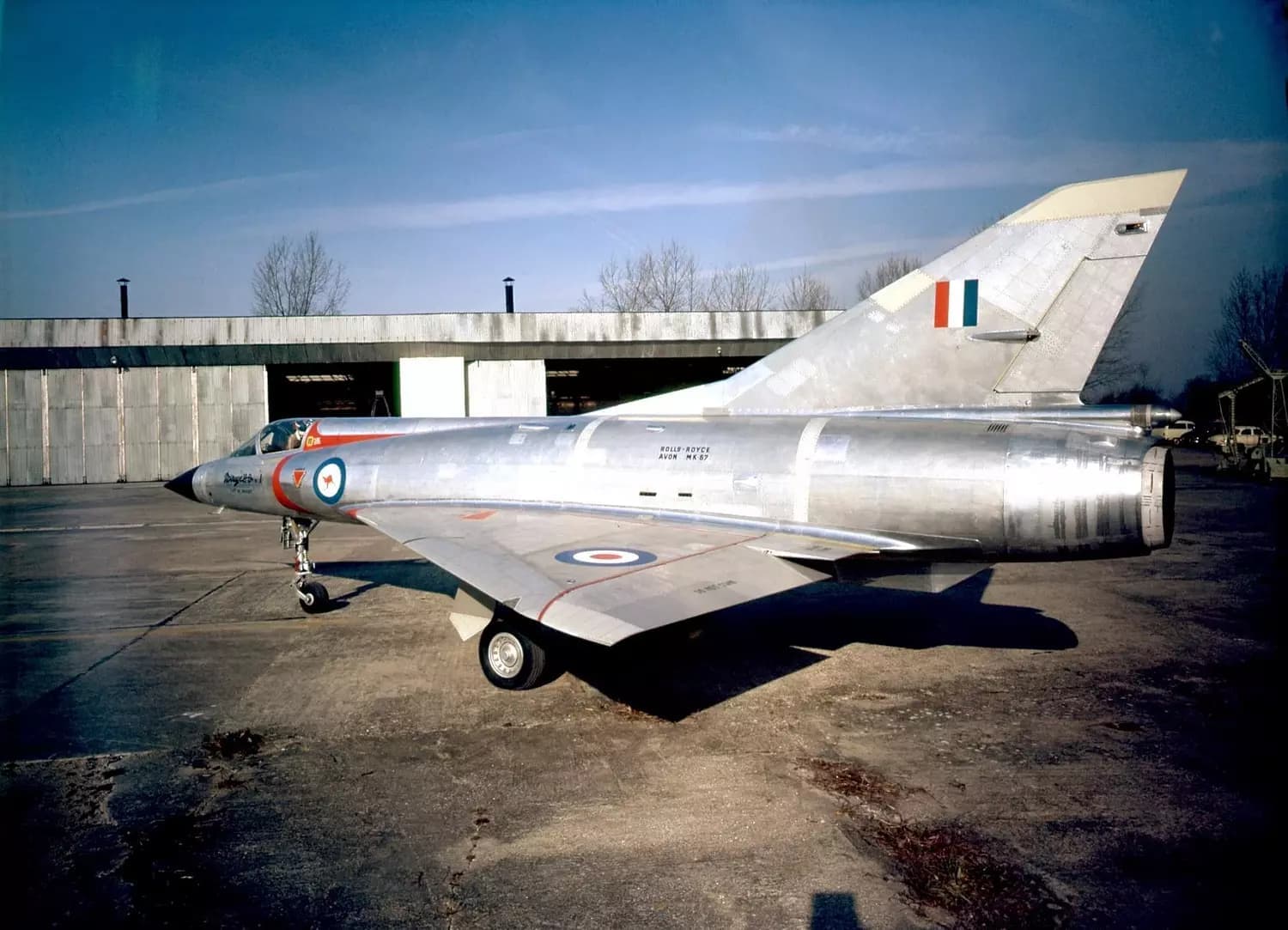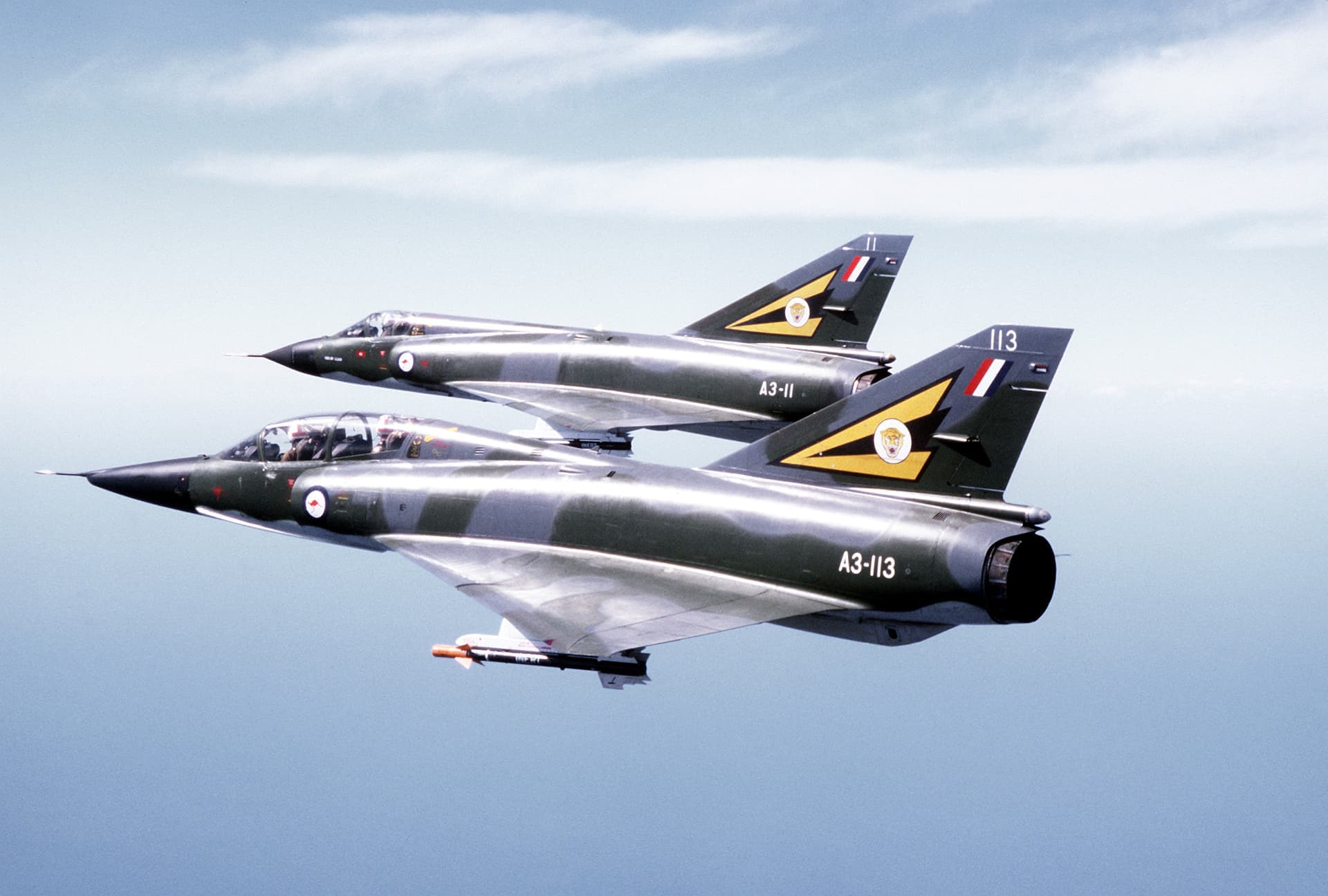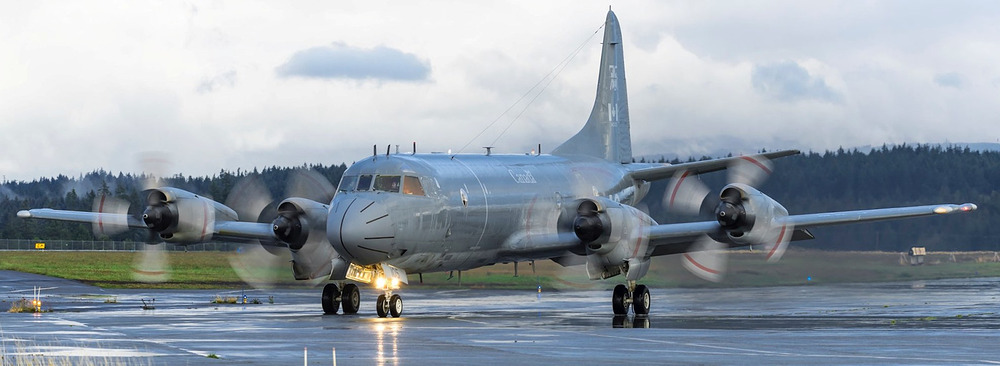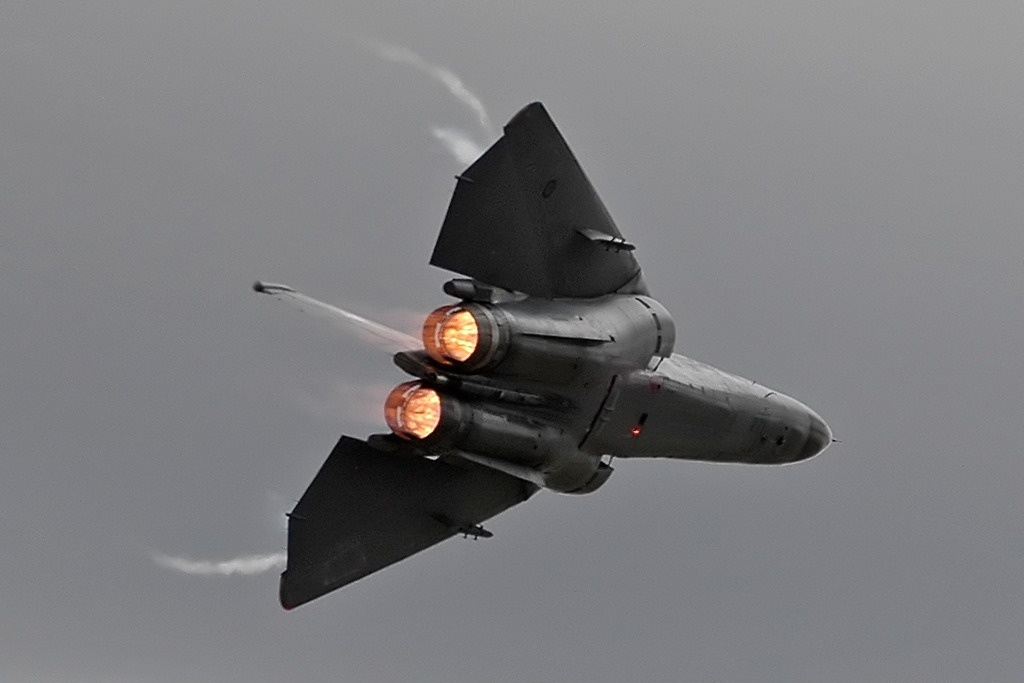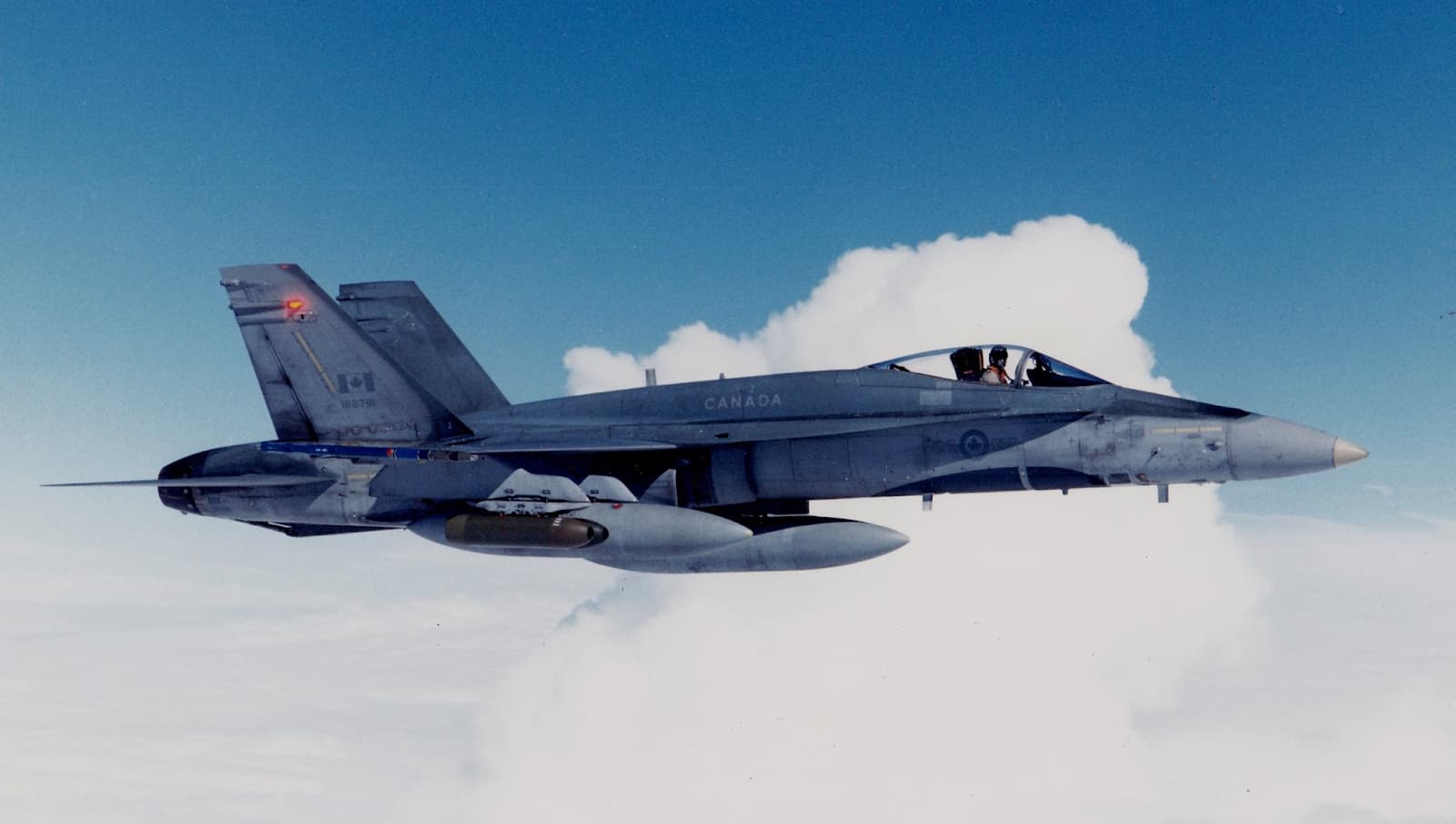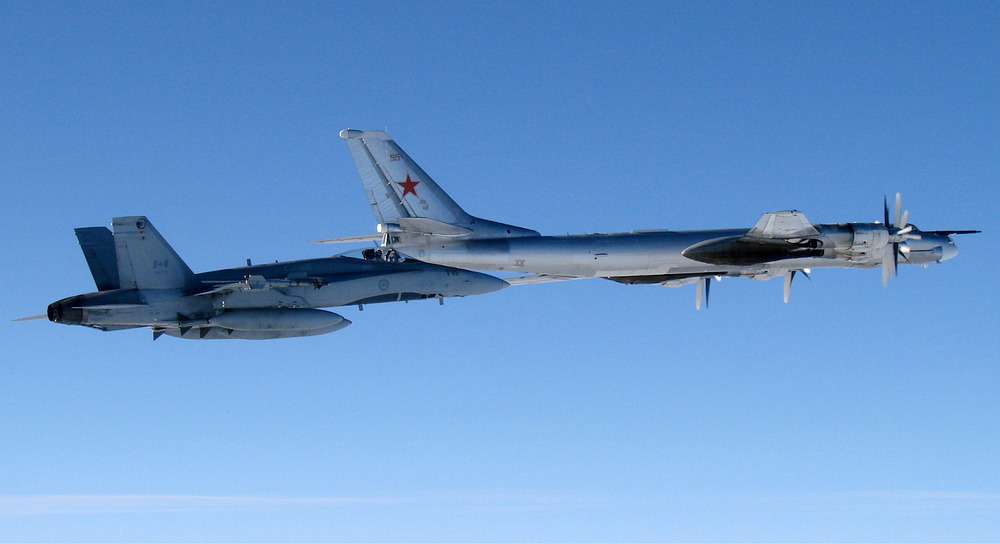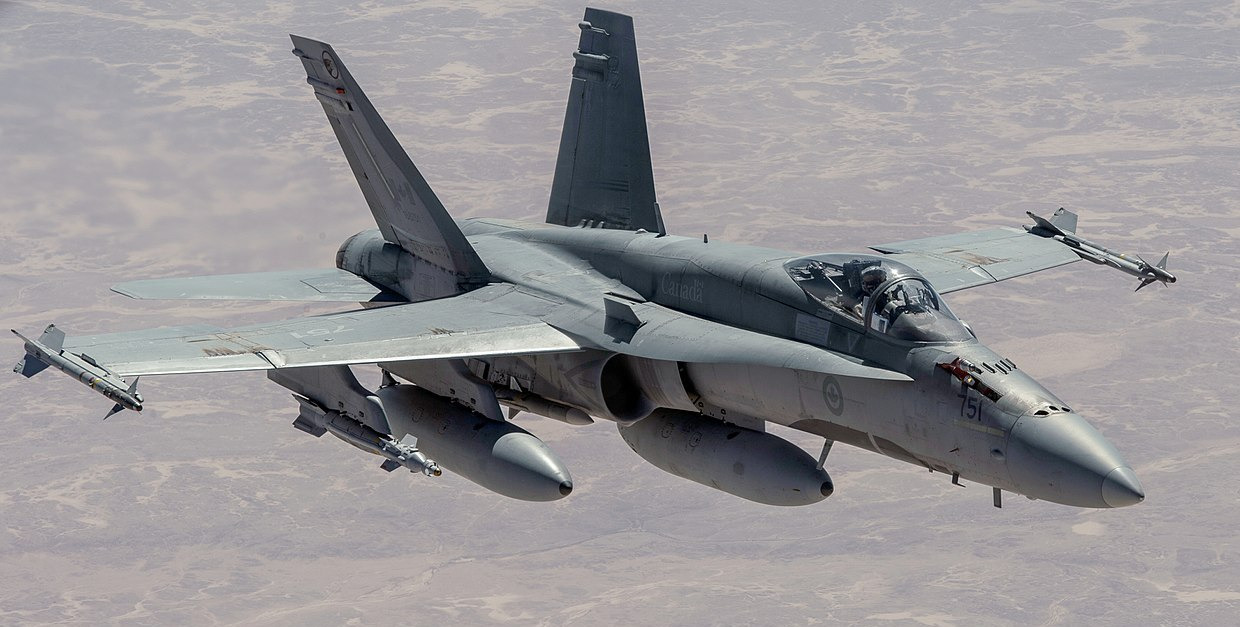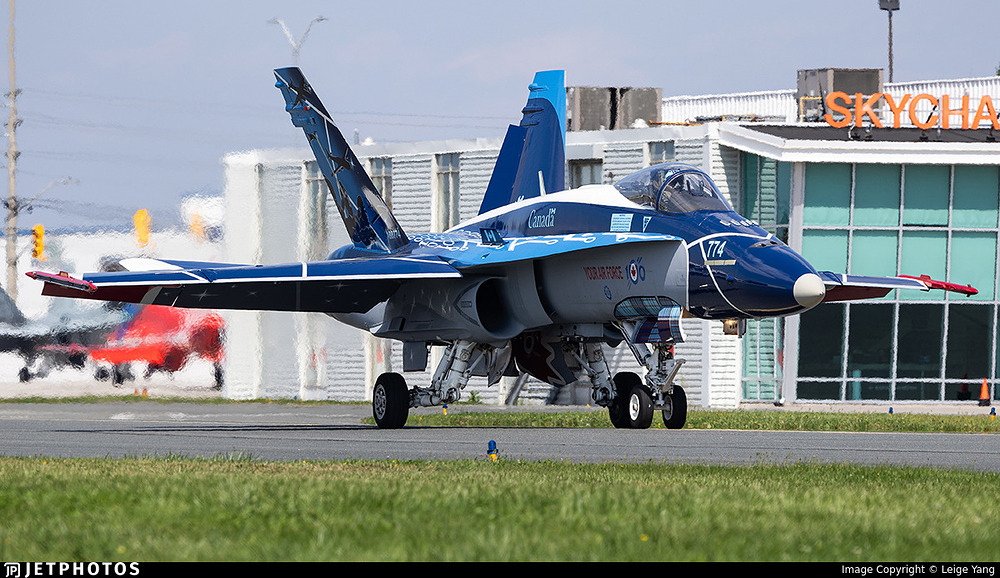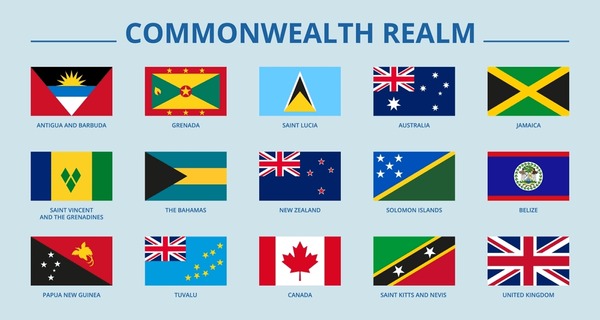- Yes, this is a good plan if sub tree folders are not an option
- No, these nations don’t need to be combined
- No, I don’t want to see Australia, Canada or New Zealand get trees, they should be split in to different tech trees as is currently done
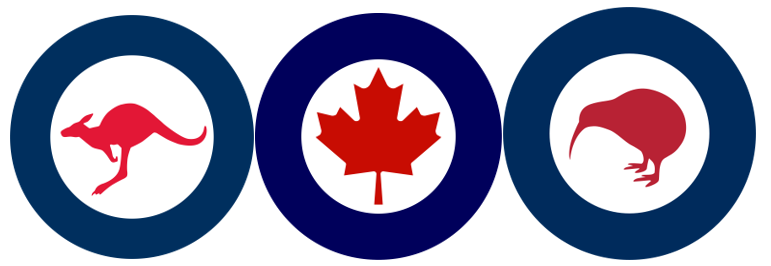
Let me start this post by stating this: In the researchable tree of this suggestion we have 28 domestically designed aircraft, 79 domestically modified and/or built and/or unique to the operator nation aircraft, and 11 of the so-called “copy paste” aircraft. The events/premiums section adds a further 6 unique aircraft. So with that in mind, what is the suggestion about? There are a great many people on this game that aren’t happy with the current treatment of Canada and Australia in game, being split up in to multiple tech trees forcing us to not only grind multiple tech trees to get our vehicles, but more importantly preventing us from building lineups with them. This tree will aim to help visualize that together these nations can bring enough content to the game to be worth adding.
Now this may not be the perfect solution, the best way to add new nations to the game would almost certainly be Nation Folders, where we’d likely see trees for these nations that look more like the existing suggestions for Canada and Australia/New Zealand attached to existing tech trees in the game. But given that is not a currently existing mechanic, this suggestion is intended to serve as something of a backup plan.
Aside from the aforementioned poor treatment of Canada and Australia, and both needing a true, single-tree home in the game for the sake of lineups? Canada, New Zealand and Australia are basically siblings, all being part of the English Empire/Commonwealth of Nations. They all still hold the British monarch as their own. And as a result, all 3 have shared not just military technology with each other, but have often fought alongside each other in many major conflicts, uncludiing all those in the timeline of War Thunder. On many occasions Australia and New Zealand have actually operated as a singular military force even (see: ANZAC). And even now, these three nations are the core group of a proposed alliance known as CANZUK, with the only other member there being UK which of course already has a tech tree in War Thunder.
We also feel that without nation folders, a full Commonwealth tech tree would be overcrowded and very unnecessary. These 3 are much closer with each other than most nations of the Commonwealth as it stands anyway.
Rank 1
Spoiler
Australian Demon Mk I
Spoiler
Brief: The Hawker Demon was a 1930s fighter derivative of the Hawker Hart bomber. The RAAF Demons were specific versions for Australia with a more powerful engine and some light ground attack capability. The flight performance is not up to par with other reserve biplanes in the game but there are also worse planes in the game. Compared to other reserve biplane fighters as well, this has a rear turret and 6 underwing hardpoints for bombs, giving it other options in a fight and some versatility.
Top Speed: 293km/hr at 5000m
Engine: 600hp Rolls Royce Kestrel V(DR)
Max Weight: 4716lb/2139kg
Crew: 2
Main Armament: 2x 0.303 forward firing Vickers machine guns, 1x 0.303 Lewis machine gun in the rear
Secondary Armament: 6 underwing bombs, I have struggled to find what size bombs were possible, any help would be appreciated. They will of course be small bombs.
Useful Links: https://www.baesystems.com/en/heritage/hawker-demon
Lysander Mk II
Spoiler

Brief: A Canadian production Lysander Mk II that served Canada in numerous roles, including briefly as a fighter.
Top Speed: 370 km/h @ 1,524 m
Rate of Climb: 6.35m/s
Engine: 905hp Bristol Perseus XII
Crew: 2
Main Armament: 2x fixed .303 cal (7.7 mm) Browning machine guns in wheel fairings, 2x rear .303cal (7.7 mm) Browning machine guns for the observer
Secondary Armament: 4× 20 lb (9 kg) HE bombs in wings
Useful Links: National Steel Car Lysander Mk II: a ground pounding modernization
Goblin I
Spoiler
Brief: The Goblin is a Canadian licensed production of the Grummann FF G-23 model.
Top Speed: 359km/hr
Rate of Climb: 8.5m/s
Engine: 745 hp Wright R-1820-F53 Cyclone
Crew: 2
Main Armament: 2x .30 cal (7.62 mm) Browning M1919 in fuselage, 1 x .30 cal Browning M1919 machine gun in rear cockpit turret
Secondary Armament: 1x 100lb bomb
Useful Links: Canadian Car & Foundry Goblin I
FDB-1
Spoiler

Brief: A domestically designed biplane from Canada, the FDB-1 will be right up there with the best biplanes in the game.
Top Speed: 420km/hr @ 4000m
Rate of Climb: 14m/s
Engine: 700hp Pratt & Whitney R-1535-72
Crew: 1
Main Armament: 2x .50cal (12.7 mm) M2 Browning
Secondary Armament: 2x 116lb bombs under wings
Useful Links: FDB-1 | The new obsolete Fighter
Tomahawk Mk I
Spoiler
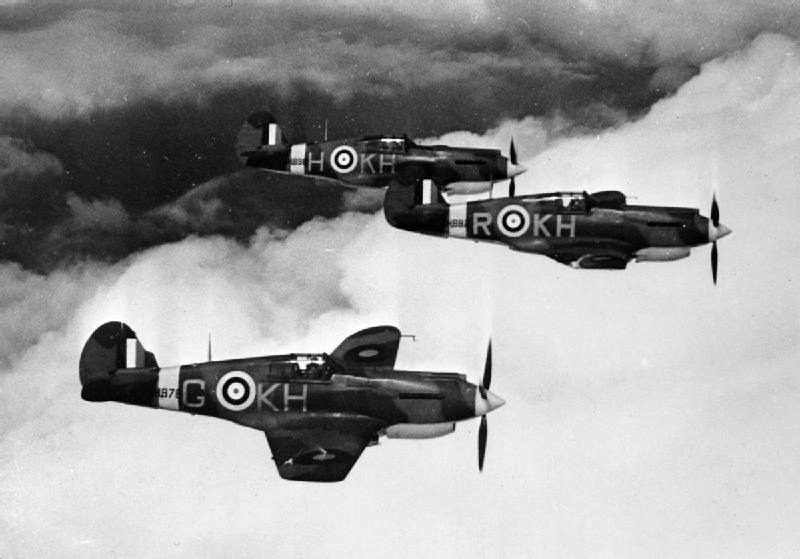
Brief: Our first copy paste aircraft in the tree, the Tomahawk was used by the RCAF in numerous variants, we chose this one just to shore up rank 1 a bit.
Top Speed: 566km/hr @ 4572m
Rate of Climb:
Engine: 1040hp Allison V-1710-33
Crew: 1
Main Armament: 2x .50cal (12.7 mm) Browning M2 Machine guns in engine cowling, 4x .303cal (7.7 mm) Browning Machine guns in the wings
Secondary Armament: 2x 250lb or 500lb bombs
Useful Links: Identical British version suggestion
CA-3 Wirraway Mk II
Spoiler
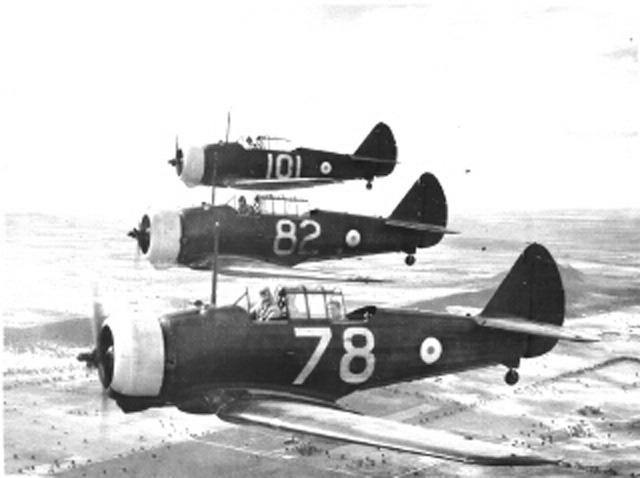
Brief: The model Wirraway we have in game currently is actually incorrect, it’s a hybrid of the earlier Mk II model and the later Mk III model. The Mk II model had weaker wings, it could only carry 3x100lb bombs.
Top Speed: 354km/hr at 1500m
Initial Rate Of Climb: 9.9m/s
Max Weight: 6595lb/2991kg
Engine: 600hp Australian made Pratt & Whitney R-1340 Wasp
Main Armament: 2x cowl mounted 0.303 Vickers Mk V machine guns, 1x 0.303 Vickers GO machine gun in the rear
Secondary Armament: 3x100lb bombs
Useful Links: https://seapower.navy.gov.au/history/units/cac-ca-16-wirraway
https://www.airforce.gov.au/community/event-participation/air-force-heritage-aircraft-fleet/ca-16-wirraway
CAC Wirraway - Wikipedia
CA-16 Wirraway Mk III
Spoiler
Brief: The Mk III Wirraway received numerous improvements, most notably in game are the stronger wings that now have not only dive brakes installed, but are stressed to carry the 2x500lb and 2x250lb bomb loadout the hybrid Wirraway already in game has. But that’s not all, in the interest of weight savings and streamlining aerodynamics the cowl mounted machine guns were often not fitted, and the tail gunner was removed. But it didn’t lose its teeth, it actually gained some! There is now a provision to fit 2x 0.030 Browning Mk II machine guns mounted under each wing, for a total of 4. For ground battles, it has a heavier bomb load at the expense of no machine guns. For air battles, this may be the best Wirraway, as it’s ever so marginally lighter while having better machine guns than its predecessor.
Top Speed: 354km/hr at 1500m
Initial Rate Of Climb: 9.9m/s
Max Weight: 6595lb/2991kg
Engine: 600hp Australian made Pratt & Whitney R-1340 Wasp
Main Armament: 4x under wing mounted 0.303 Browning Mk II machine guns (optional)
Secondary Armament: 2x500lb bombs and 2x 250lb bombs
Useful Links: Ca-16 Wirraway Mk III - The Australian divebomber
CA-3 Wirraway Mk II Refit
Spoiler
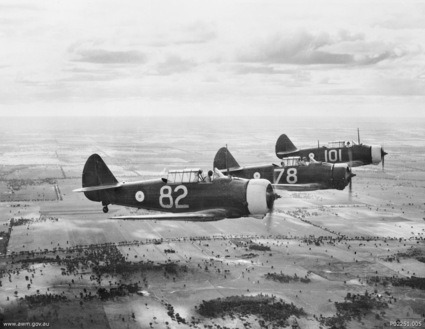
Brief: A number of earlier Mk II Wirraways had refits done for the stronger wings with dive brakes from the Mk III. As these were still earlier models, just with the newer wings, they often retained their cowl mounted and tail gunner Vickers machine guns. What does this mean? It means it could have 6 forward firing machine guns in total including the 4 under wing Brownings, and still have the tiny amount of protection offered by the tail gunner. Whilst we are talking percentages, it would also be the heaviest Wirraway though.
Top Speed: 354km/hr at 1500m
Initial Rate Of Climb: 9.9m/s
Max Weight: 6595lb/2991kg
Engine: 600hp Australian made Pratt & Whitney R-1340 Wasp
Main Armament: 2x cowl mounted 0.303 Vickers Mk V machine guns, 4x under wing mounted 0.303 Browning Mk II machine guns (optional), 1x 0.303 Vickers GO machine gun in the rear
Secondary Armament: 2x 500lb bombs and 2x 250lb bombs
Useful Links: Ca-16 Wirraway Mk III - The Australian divebomber
Shark Mk III
Spoiler

Brief: A Canadian licensed production of the Shark Mk III, an early biplane torpedo bomber.
Top Speed: 261km/hr
Rate Of Climb: 4.55m/s
Engine: 840hp Pegasus IX
Main Armament: 1× fixed forward firing .303 in (7.7 mm) Vickers machine gun, 1x flexible 0.303 in (7.7 mm) Vickers K machine gun
Secondary Armament: 1× 18-inch (460 mm) Mark VIII torpedo or 1× 18-inch (460 mm) Mark X torpedo or 1600lb of bombs
Useful Links: Blackburn Shark - Wikipedia
Hampden Mk I
Spoiler
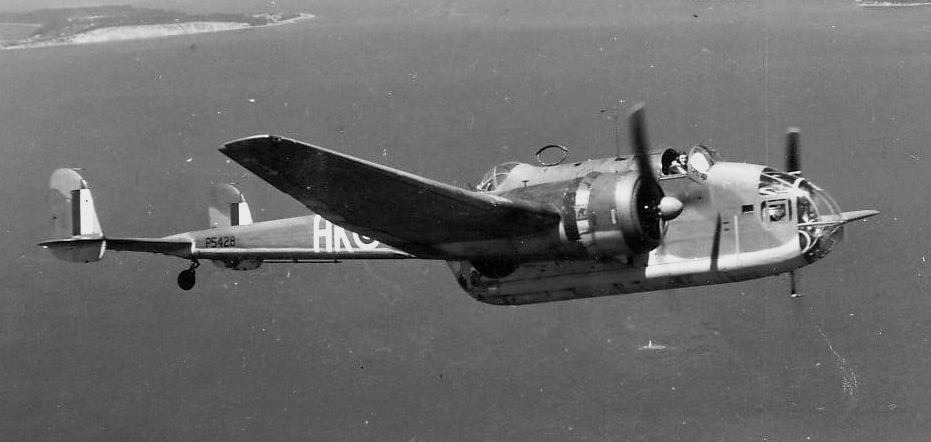
Brief: A Canadian licensed production of the Hampden Mk I, the Hampden was also used by all 3 operator nations in the tree.
Top Speed: 398km/hr @ 4200m
Rate Of Climb: 7.6m/s
Engine: 2x 1000hp Bristol Pegasus XVIII
Main Armament: 1x fixed .303 cal (7.7 mm) M1919 Browning machine gun
1x .303 cal Vickers K machine gun in nose position
2x .303 cal Vickers K machine guns in dorsal turret
2x .303 cal Vickers K machine guns in ventral position
Secondary Armament: 1x 18" torpedo or up to 4000lb of bombs (4x 1000lb)
Useful Links: Handley Page Hampden - Wikipedia
Avenger AS3
Spoiler
Brief: The Avenger AS3 is an ex TBM-3E that has been modified by Canada for use as an ASW aircraft.
Top Speed: 430km/hr
Rate Of Climb:
Engine: 1900hp Wright R-2600-20 Cyclone
Main Armament: 2x .50cal (12.7 mm) M2 Browning
Secondary Armament: 6x 250lb Mk.XI depth charges, 8x AP Mk.I rockets, bombs, homing torpedoes
Useful Links: Aircraft Details | Canadian Warplane Heritage Museum
Avenger AS3M
Spoiler
Brief: The Avenger AS3M is a further Canadian modification of the AS3 with a magnetic anomaly detector boom added to the rear fuselage. Whilst currently functionally the same in game, it may become an effective tool when submarines are added.
Top Speed: 430km/hr
Rate Of Climb:
Engine: 1900hp Wright R-2600-20 Cyclone
Main Armament: 2x .50cal (12.7 mm) M2 Browning
Secondary Armament: 6x 250lb Mk,XI depth charges, 8x AP Mk.I rockets, bombs, homing torpedoes
Useful Links: Grumman TBF Avenger - Wikipedia
Vancouver IIS/S
Spoiler
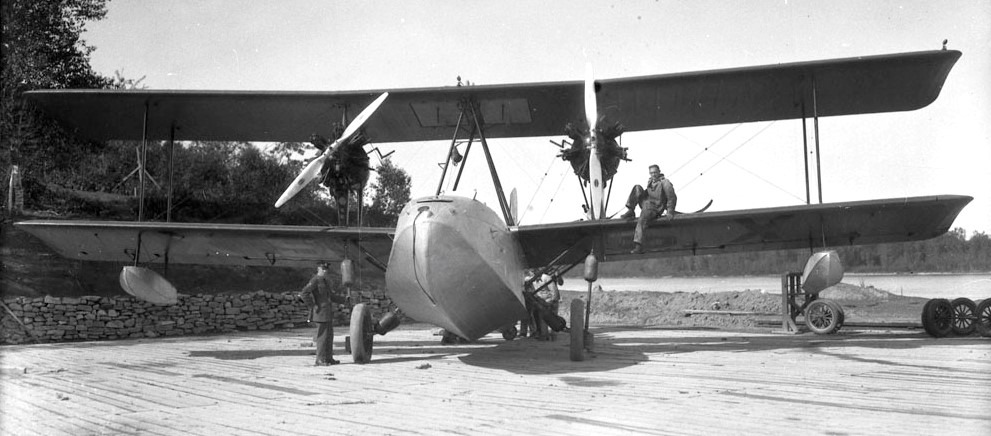
Brief: A Canadian designed biplane seaplane with a military version that saw some service at the start of WW2.
Top Speed: 151km/hr
Rate Of Climb: 2.87m/s
Engine: 2x 310hp Armstrong Siddeley Serval IV
Main Armament: 3x Lewis .303 mg on flexible mounts (one in the nose and two in separate cockpits at the rear)
Secondary Armament: 4x 250lb bombs
Useful Links: Canadian Vickers Vancouver - Wikipedia
Vancouver IIS/W
Spoiler
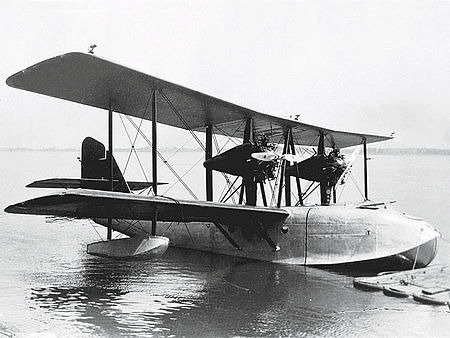
Brief: A Canadian designed biplane seaplane with a military version that saw some service at the start of WW2.
Top Speed: 151km/hr
Rate Of Climb: 2.87m/s
Engine: 2x 300hp Wright J-6 Whirlwind
Main Armament: 3x Lewis .303 mg on flexible mounts (one in the nose and two in separate cockpits at the rear)
Secondary Armament: 4x 250lb bombs
Useful Links: Canadian Vickers Vancouver - Wikipedia
Stranraer
Spoiler
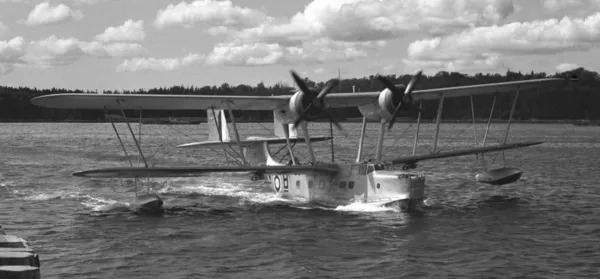
Brief: A Canadian licensed production of the Supermarine Stranraer.
Top Speed: 266km/hr @ 1800m
Rate Of Climb: 6.9m/s
Engine: 2x 920hp Bristol Pegasus X
Main Armament: 3x 0.303 in (7.70 mm) Lewis guns
Secondary Armament: 1,000lb (454kg) of bombs or depth charges on external racks under the mainplanes, 8x 20lb (9kg) bombs housed in internal bays in the lower mainplanes
Useful Links: Supermarine Stranraer - Wikipedia
Beaufort Mk V
Spoiler
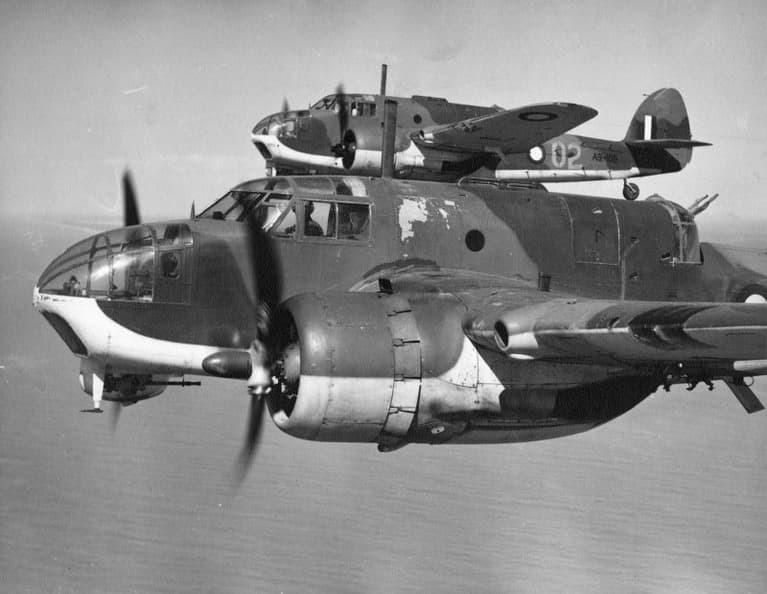
Brief: Australian production of Beauforts had a number of changes, including the use of Pratt & Whitney R-1830 Twin Wasps instead of the original Bristol Taurus, a larger rudder, and different turrets. The Mk V suggested for the tree could also be an early Mk VIII, it wouldn’t matter as the main purpose of this initial model would be to have the earlier 0.303 machine gun armaments (where the later VIIIs had 0.50 M2 Brownings). The Mk VIII we have in game currently is missing armaments, there should be wing mounted machine guns and larger bomb options, as well as under wing bombs. These options are all officially documented and photographed.
Top Speed: 437km/hr at 1981m
Engine: 2x Pratt & Whitney SC34-G, 1200hp each
Armament: 2x 0.303 Browning forward firing machine guns, one in each wing. 2x 0.303 Vickers GO machine guns in dorsal turret, 1x 0.303 Vickers GO machine in beam position, 1x 0.303 Browning machine gun in rear firing chin blister
Secondary Armament: 1x 18in Mk XII torpedo or
4x 250lb GP Mk IV bombs or
2x 500lb GP Mk IV bombs or
2x 500lb SAP Mk II bombs or
1x 2000lb bomb and/or
1x 250lb bomb under each wing
Useful Links: http://www.adf-serials.com.au/research/Beaufort_Matters.pdf
Bolingbroke Mk I
Spoiler
Brief: A Canadian licensed production of the Blenheim IV, the Mk I is built to the British specification.
Top Speed: ~450km/hr
Rate Of Climb: ~7m/s
Engine: 2x 825hp Bristol Mercury Mk VIII
Main Armament: 1x .303cal (7.7 mm) Browning machine gun in port wing, 1x .303cal Vickers K mg in Bristol B.1 Mk.III dorsal turret
Secondary Armament: 2x 500lb or 4x 250lb bombs
Useful Links: Bristol Bolingbroke - Wikipedia
Canso
Spoiler
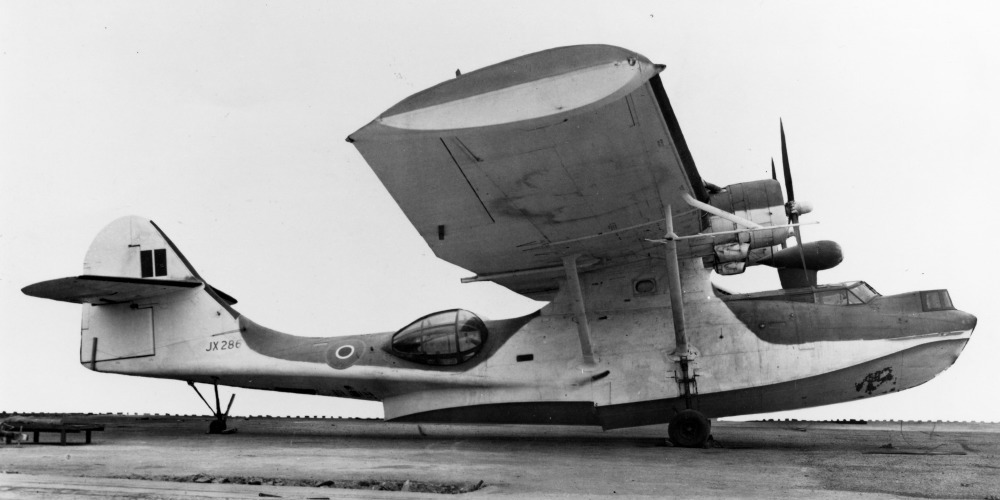
Brief: A Canadian licensed production of the PBY-5 Catalina.
Top Speed: 315km/hr
Rate Of Climb: 5.1m/s
Engine: 2x 1200hp Pratt & Whitney R-1830-92
Main Armament: 2x .50cal (12.7mm) M2 Browning waist gunners, 2x .30cal (7.62mm) Browning machine guns in nose, 1x .30cal in tail
Secondary Armament: 14x 100lb bombs or 4x 500lb/1000lb bombs or 2x Mk.13 torpedoes or 4x Type A Mark I mines
Useful Links: PBY-5 Catalina | War Thunder Wiki
Canso A
Spoiler
Brief: A Canadian licensed production of the PBY-5A Catalina.
Top Speed: 315km/hr
Rate Of Climb: 5.1m/s
Engine: 2x 1200hp Pratt & Whitney R-1830-92
Main Armament: 2x .50cal (12.7mm) M2 Browning waist gunners, 2x .30cal (7.62mm) Browning machine guns in nose, 1x .30cal in tail
Secondary Armament: 14x 100lb bombs or 4x 500lb/1000lb bombs or 2x Mk.13 torpedoes or 4x Type A Mark I mines
Useful Links: Catalina Mk IIIa (Great Britain) | War Thunder Wiki
Gladiator II
Spoiler
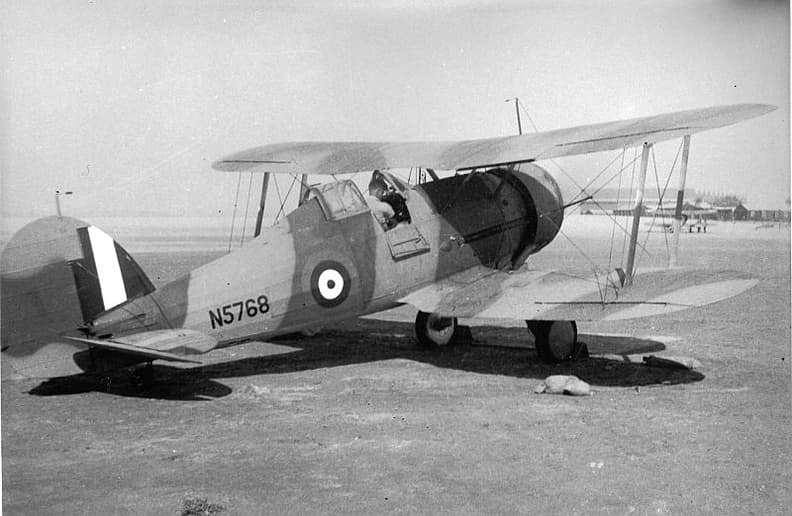
Brief: This is an Article XV Squadron aircraft operated by RAAF and RCAF pilots. I have included it as the reserve planes may not be to everyone’s liking, this is a premium option to bi-pass them if desired.
Top Speed: 414km/hr @ 4420m
Rate of Climb: 15.7m/s
Engine: 825hp Bristol Mercury VIIIA/AS
Armament: 4x 0.303 Browning
Useful Links: Gladiator Mk II | War Thunder Wiki
Bolingbroke Mk III
Spoiler

Brief: A Canadian licensed production of the Blenheim IV, the Mk III is a Canadian conversion to a float plane.
Top Speed: 421km/hr
Rate Of Climb:
Engine: 2x 920hp Bristol Mercury XV
Main Armament: 1x .303cal (7.7 mm) Browning machine gun in port wing, 1x .303cal Vickers K mg in Bristol B.1 Mk.III dorsal turret
Secondary Armament: 2x 500lb or 4x 250lb bombs
Useful Links: Fairchild-Canada Bolingbroke Mk III
Tomahawk IIB
Spoiler
Brief: The Tomahawk was used by the RCAF and RAAF in numerous variants, we have offered the IIB here as a premium. The IIB has increased protection over the I at the expense of weight.
Top Speed: 555km/hr @ 4572m
Rate of Climb:
Engine: 1090hp Allison V-1710-33
Crew: 1
Main Armament: 2x .50cal (12.7 mm) Browning M2 Machine guns in engine cowling, 4x .303cal (7.7 mm) Browning Machine guns in the wings
Secondary Armament: 2x 250lb or 500lb bombs
Useful Links: Curtiss Tomahawk Mk.IIB: Perfecting the Imperfect
Rank 2
Spoiler
P-43D Lancer
Spoiler

Brief: Australia had only a handful of P-43s, however 4 P-43Ds were modified by Australia for the use of under wing drop tanks or 2x 250lb bombs (one under each wing). So not only is Australia the only operator of a P-43 not already in the game, but it brings a unique version to the table as well. Albeit very slightly unique as the engine and flight performance will remain the same.
Top Speed: 566km/hr at 7600m (according to the WT wiki)
Rate of Climb: 13.6m/s
Engine: Pratty & Whitney R-1830-49, 1200hp
Armament: 4x 0.50 M2 Browning machine guns
Secondary Armament: 2x 250lb bombs (one under each wing) or 2x 30 gallon drop tanks
Useful Links: http://www.adf-serials.com.au/2a56.htm
CA-12 Boomerang Mk I
Spoiler

Brief: The famous emergency fighter of Australia, the mighty Boomerang! There’s not much more that can be said about it, we already have it in game. As has been the case in the past, I imagine anyone who owns the UK tree premium already would get to keep it, but at the release of this new tree the premium would be removed from sale forever.
Top Speed: 491km/hr @ 5100m
Rate of Climb: 14.9m/s
Armament: 2x 20mm Hispano, 4x 0.303 Browning
Useful Links: Boomerang Mk I (Great Britain) | War Thunder Wiki
CA-13 Boomerang Mk II
Spoiler
Brief: The improved Mk II variant of the Boomerang, with the only main notable change in terms of gameplay being the addition of under wing 250lb bombs. Also already in game. As has been the case in the past, I imagine anyone who owns the UK tree premium already would get to keep it, but at the release of this new tree the premium would be removed from sale forever.
Top Speed: 491km/hr @ 5100m
Rate of Climb: 14.9m/s
Armament: 2x 20mm Hispano, 4x 0.303 Browning
Secondary Armament: 2x 250lb bombs
Useful Links: https://www.airforce.gov.au/community/event-participation/air-force-heritage-aircraft-fleet/ca-13-boomerang
CA-14 Boomerang
Spoiler
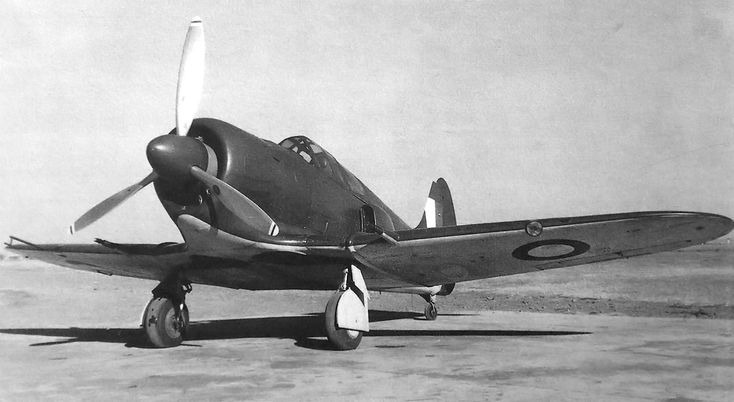
Brief: The CA-14 was an improved Boomerang prototype, with a turbocharged engine giving it greater speeds at higher altitudes. It was ultimately not required as other aircraft became available and the CA-15 project kicked off. The initial design here was also found to have some areas in need of improvement which lead to the CA-14A. As a result I chose to make the CA-14 a premium while the better CA-14A gets the tech tree.
Top Speed: 570km/hr at 8534m
Rate of Climb: Same as CA-13 Boomerang below 10,000 feet, 7.1m/s at 8500m
Engine: Turbocharged Pratt & Whitney R-1830
Armament: 2x 20mm Hispano and 4x 0.303 Brownings
Secondary Armament: Likely none, the increased weight may have prevented fitting bombs, the prototype at any rate did not have them
Useful Links: CAC Ca-14 - The ultimate Boomerang
Sea Hurricane Mk XIIA
Spoiler

Brief: A Canadian licensed production Sea Hurricane.
Top Speed: 548km/hr
Rate of Climb: ~9m/s
Engine: 1300hp Rolls Royce Merlin 29
Armament: 8x .303cal (7.7mm) Browning mg
Useful Links: Hawker Hurricane - Wikipedia
Hurricane Mk XII
Spoiler
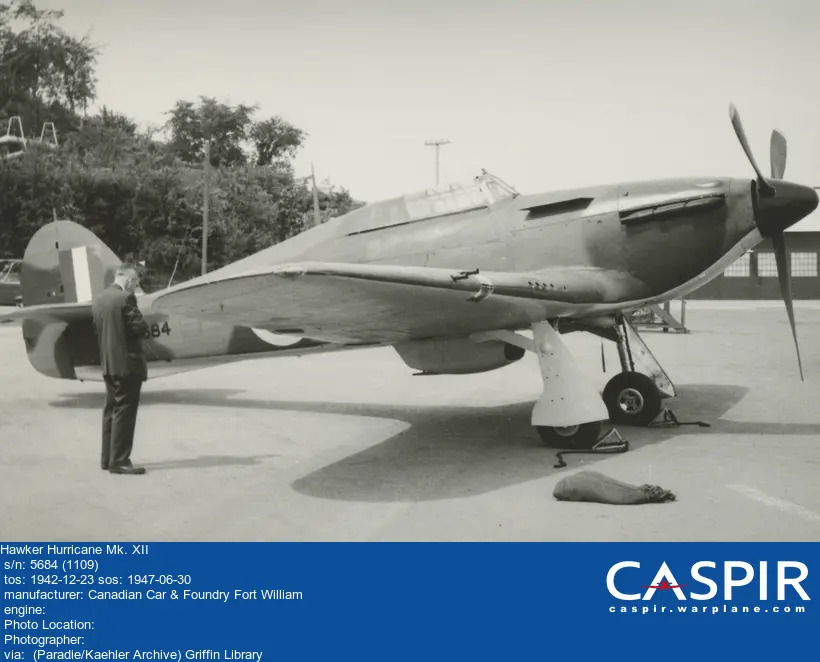
Brief: A Canadian licensed production Hurricane.
Top Speed: 531km/hr
Rate of Climb: ~11m/s
Engine: 1300hp Rolls Royce Merlin 29
Armament: 12x .303cal (7.7mm) Browning mg
Secondary Armament: 2x 250lb depth charges or 2x 250lb anti submarine bombs
Useful Links: Canadian Car & Foundry Hurricane Mk XII: A Woman's pride
Hurricane Mk XIIA
Spoiler
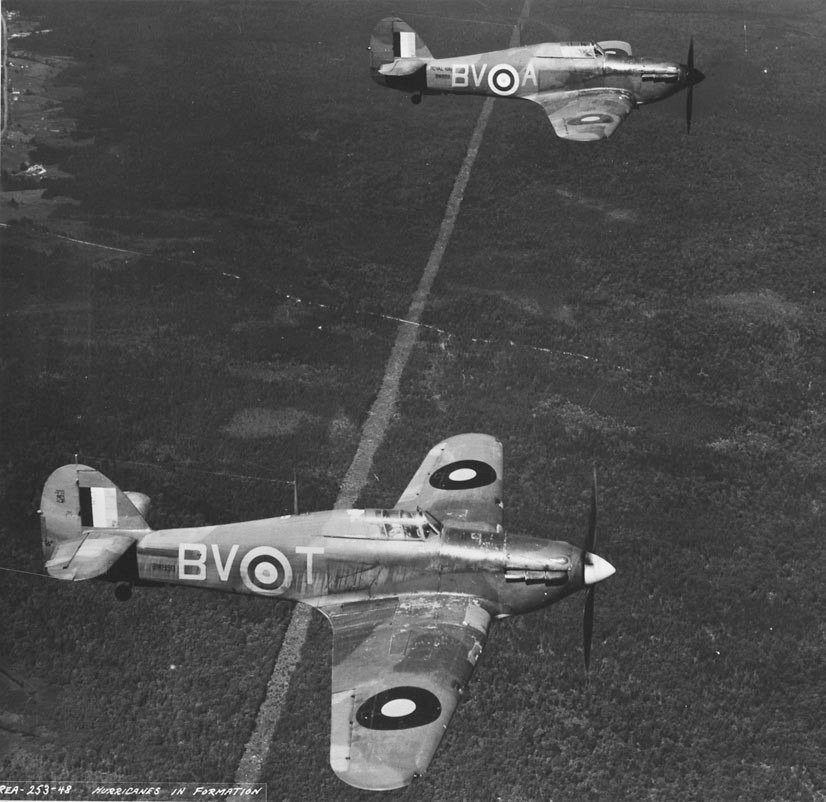
Brief: A Canadian licensed production Hurricane.
Top Speed: 548km/hr
Rate of Climb: ~11m/s
Engine: 1300hp Rolls Royce Merlin 29
Armament: 8x .303cal (7.7mm) Browning mg
Useful Links: Hawker Hurricane - Wikipedia
CA-4 Wackett
Spoiler
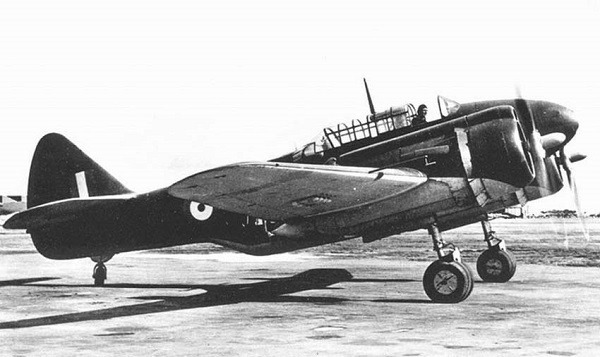
Brief: Australia’s prototype dive bomber is an interesting one for sure, some unique design features make it quite different to other similar types. The CA-4 has bomb bays housed WITHIN the engine nacelles, remote controlled barbette machine gun turrets on top of the nacelles, and…the wings themselves are the fuel tanks! In addition to this, it could carry two torpedoes instead of the usual one found on most similar types, and it was designed to be able to use either UK or US torpedoes. This initial prototype has a fairly weak armament of just four 0.303 Browning machine guns in the nose. In addition to the weak armament, the wing fuel tanks would be very vulnerable to fires and fuel explosions, as this is indeed the manner in which the prototype was lost. Lessons learned with the CA-4 lead to the improved CA-11.
I feel this combination of factors will give it an interesting play style for such a low BR. You have pretty good secondary armament options for such a low tier to go after ground and naval targets, not terrible flight performance, and even the defensive armament of 5x 0.303 machine guns will help ward off some fighters. But the offensive armament makes it fairly ineffective for going after fighters, and being shot at is a high probability death sentence with those fuel tanks.
Top Speed: 454km/hr at 4700m
Rate of Climb: 10.6m/s
Engines: 2x Pratty & Whitney R-1830 Twin Wasps, 1200hp each
Max Weight: 22,885lb/10,380kg
Main Armament: 4x 0.303 Browning machine guns in the nose, 4x 0.303 Browning machine guns in remote controlled barbettes (two on each engine nacelle), 1x 0.303 Vickers K machine gun in the ventral position
Secondary Armament: 4x 250lb bombs house internally in engine nacelles and
8x 25lb bombs mounted under the outer wings and
4x 500lb bombs under the fuselage or
2x Mk XII, Mk XV or Mk 13 aerial torpedoes under the fuselage or
1x torpedo and 1x 1330L fuel tank under the fuselage
Useful Links: https://youtu.be/oFsovxv-ZEY?si=7YiL5fYjnpDqKoAa
Mosquito FB Mk.40
Spoiler

Brief: Australia built a few hundred Mosquito aircraft locally. The Fighter Bomber version was designated the FB 40, or FB Mk.40. Initially using Merlin 31s, many were upgraded to Merlin 33s. I still need to do more research on Australian production. One thing is for certain, the Merlin 33 is slightly less powerful than the Mosquito Mk VI’s engines as found in game currently, so a slight BR drop was expected.
Engines: Rolls Royce Merlin 33, 1400hp
Top Speed: 611km/hr
Rate of Climb: 12.7m/s
Armament: 4x 20mm Hispano Mk II, 4x 0.303 Browning
Secondary Armament: 2x 250lb bombs or 2x 500lb bombs or 8x RP-3 rockets
Useful Links: https://recordsearch.naa.gov.au/SearchNRetrieve/Interface/ViewImage.aspx?B=164628
http://www.adf-serials.com.au/2a52.htm
https://recordsearch.naa.gov.au/SearchNRetrieve/Interface/ViewImage.aspx?B=25871363
Beaufighter Mk 21
Spoiler
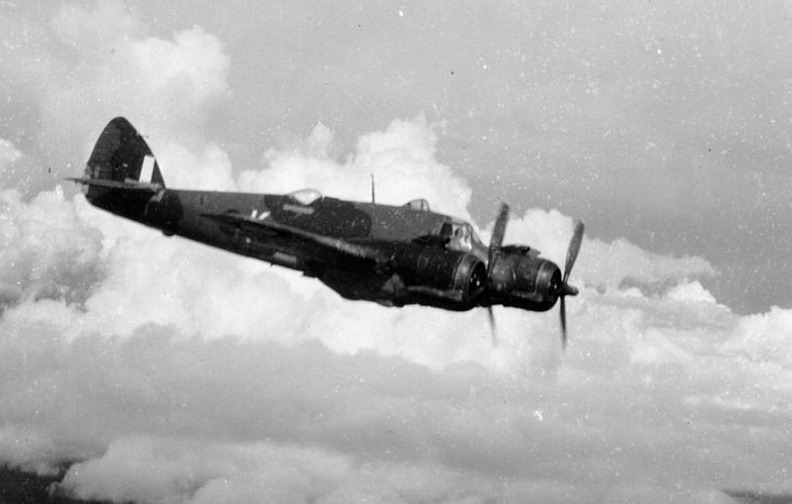
Brief: Australia produced 365 of their local Mk 21 variant of the Beaufighter. There’s not much else to say as we have already had it in game a long time. Probably my favourite plane to fly in ground rb.
Top Speed: 520km/hr @ 5000m
Rate of Climb: 10.1m/s
Armament: 4x 20mm Hispano Mk II, 4x 0.50 M2 Browning, 1x 0.303 dorsal turret
Secondary Armament: 1x Mk XII torpedo or 2x 1000lb bombs or 4x 500lb bombs or 4x 250lb bombs or 8x RP-3 rockets
Useful Links: Beaufighter Mk 21 | War Thunder Wiki
Mosquito FB Mk.21
Spoiler
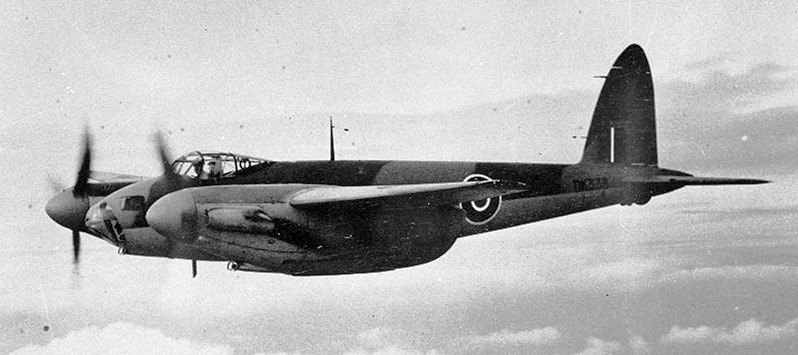
Brief: A Canadian licensed production Mosquito variant that will perform very similarly to the Australian one, having the same engines, albeit with more secondary options.
Engines: Rolls Royce Merlin 33, 1400hp
Top Speed: 611km/hr
Rate of Climb: 12.7m/s
Armament: 4x 20mm Hispano Mk II, 4x 0.303 Browning
Secondary Armament: 2x 250lb bombs or 2x 500lb bombs or 8x RP-3 rockets under the wings, 2x 250lb or 500lb bombs internally
Useful Links: De Havilland Mosquito - Wikipedia
Bolingbroke Mk IVW
Spoiler
Brief: A Canadian licensed production of the Blenheim IV, the Mk IVW is a sub type of the Bolingbroke Mk IV using Pratt & Whitney engines in case the Bristol engines became unavailable.
Top Speed: ~450km/hr
Rate Of Climb: ~7m/s
Engine: 2x 825hp Pratt & Whitney SB4G Twin Wasp Junior
Main Armament: 1x .303cal (7.7 mm) Browning machine gun in port wing, 1x .303cal Browning mg in dorsal turret
Secondary Armament: 2x 500lb or 4x 250lb bombs
Useful Links: Bristol Bolingbroke - Wikipedia
Bolingbroke Mk IV
Spoiler
Brief: A Canadian licensed production of the Blenheim IV, the Bolingbroke Mk IV is an improved version using more powerful engines and an increase in locally sourced equipment.
Top Speed: 463km/hr
Rate Of Climb: 7.5m/s
Engine: 2x 920hp Bristol Mercury XV
Main Armament: 1x .303cal (7.7 mm) Browning machine gun in port wing, 1x .303cal Browning mg in dorsal turret
Secondary Armament: 2x 500lb or 4x 250lb bombs
Useful Links: Bristol Bolingbroke - Wikipedia
Sunderland Mk V
Spoiler
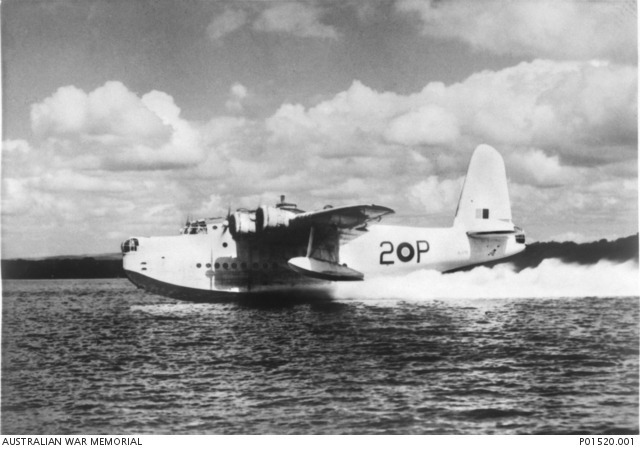
Brief: This is an Article XV squadron aircraft. No. 10 and 461 Squadrons RAAF operated Sunderlands, and the Mk V had improvements by way of direct input from the Australians, including more powerful engines and increased firepower. There are plenty of incredible stories to read about Sunderland and the RAAF crews.
Top Speed: 401km/hr @ 4267m
Rate of Climb: 7.8m/s
Armament: 4x 0.303 Browning fixed in nose, 2x 0.50 M2 Browning in beam positions, 10x 0.303 machine guns in nose, tail, dorsal and additional beam turrets
Secondary Armament: 8x 250lb bombs or 4x 500lb bombs
Useful Links: Sunderland Mk V | War Thunder Wiki
Beaufort Mk VIII
Spoiler

Brief: Australian production of Beauforts had a number of changes, including the use of Pratt & Whitney R-1830 Twin Wasps instead of the original Bristol Taurus, a larger rudder, and different turrets. Later Mk VIIIs upgraded earlier armaments from 0.303s to 0.50 M2 Browning machine guns (one in each wing) and in the dorsal turret. The under defence gun was removed though. The Mk VIII we have in game currently is missing armaments, there should be wing mounted machine guns and larger bomb options, as well as under wing bombs. These options are all officially documented and photographed.
Top Speed: 437km/hr at 1981m
Engine: 2x Pratt & Whitney SC34-G, 1200hp each
Armament: 2x 0.50 M2 Browning machine guns (one in each wing), 2x 0.50 M2 Browning machine guns in the dorsal turret, 1x 0.303 Vickers GO machine gun in the beam position
Secondary Armament: 1x 18in Mk XII torpedo or
4x 250lb GP Mk IV bombs or
2x 500lb GP Mk IV bombs or
2x 500lb SAP Mk II bombs or
1x 2000lb bomb and/or
1x 250lb bomb under each wing
Useful Links: http://www.adf-serials.com.au/research/Beaufort_Matters.pdf
Hudson IIIA
Spoiler
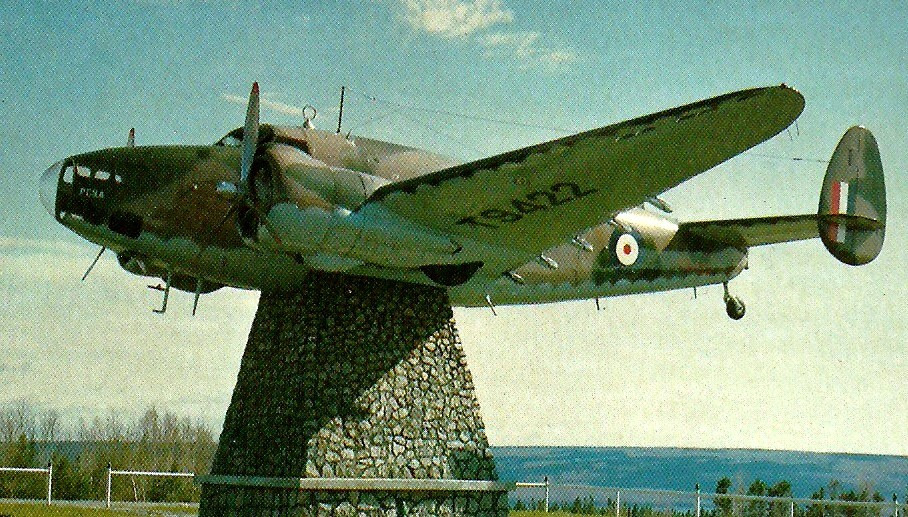
Brief: All three operator nations in the tree used Hudsons, there should be skins unlockable for all here. They are not special in any way to my knowledge, it would be essentially the same as the Mk V already in game as used by UK. There were multiple Marks to choose from, the IIIA seemed like the best option.
Top Speed: 418km/hr @ 1981m
Armament: 2x fixed 0.303 Browning machine guns in nose. 3x 0.303 Brownings in dorsal and ventral turrets
Secondary Armament: 250lb bombs, 100lb bombs, rockets, 1600lb total
Useful Links: Hudson Mk V (Great Britain) | War Thunder Wiki
Hurricane Mk X
Spoiler

Brief: A Canadian licensed production Hurricane.
Top Speed: 548km/hr
Rate of Climb: ~11m/s
Engine: 1300hp Packard Merlin 28
Armament: 8x .303cal (7.7mm) Browning mg
Useful Links: Hawker Hurricane - Wikipedia
P-40E Kittyhawk IA
Spoiler
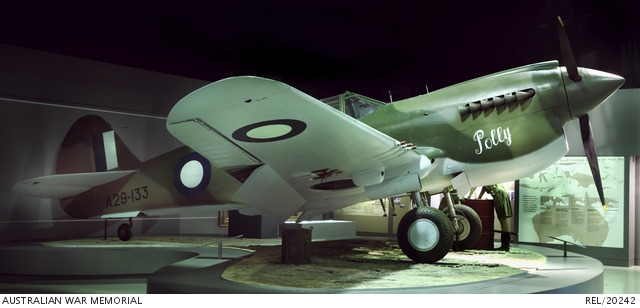
Brief: The P-40E, or Kittyhawk IA if you’re not American, saw extensive service with the RAAF. Australia’s highest scoring ace scored most of his kills flying P-40s in Africa. Clive Caldwell was the highest scoring P-40 ace of the entire war, and the highest scoring Allied pilot in the African theatre. P-40s also saw action defending the Australian mainland from Japanese bombing raids and throughout the Pacific theatre. Australian P-40Es are not special in any way though, it is the same as the P-40E we already have in game.
Top Speed: 560km/hr @ 3810m
Rate of Climb: 10.6m/s
Armament: 6x 0.50 M2 Browning
Secondary Armament: 1x 500lb bomb, 2x 100lb bombs
Useful Links: P-40E-1 | War Thunder Wiki
F4U-1D Corsair
Spoiler
Brief: New Zealand got fairly early access to Corsairs when RNZAF pilots were observed to be performing well in the field. In total they operated 424 Corsairs. This is NZ’s first representation in this suggestion (aside from where skins will be an option) mainly due to their lack of unique content for the WW2 era.
Top Speed: 672km/hr @ 7000m
Rate of Climb: 15.2m/s
Armament: 6x 0.50 M2 Browning
Secondary Armament: 2x 1000lb bombs, 8x HVAR rockets
Useful Links: http://www.adf-serials.com.au/nz-serials/nzcorsair.htm
Rank 3
Spoiler
CA-14A Boomerang
Spoiler
Brief: After initial trials with the CA-14, the designers set back to work to make necessary improvements which resulted in the CA-14A. Aerodynamic improvements and engine improvements are present, however flight data is hard to come by. There’s no indication armament would be different to the regular Boomerangs.
Top Speed: >570km/hr at 8534m
Rate of Climb: Same as CA-13 Boomerang below 10,000 feet, >7.1m/s at 8500m
Engine: Turbocharged Pratt & Whitney R-1830
Armament: 2x 20mm Hispano and 4x 0.303 Brownings
Secondary Armament: Likely none, the increased weight may have prevented fitting bombs, the prototype at any rate did not have them
Useful Links: CAC Ca-14 - The ultimate Boomerang
CA-17 Mustang Mk 20
Spoiler
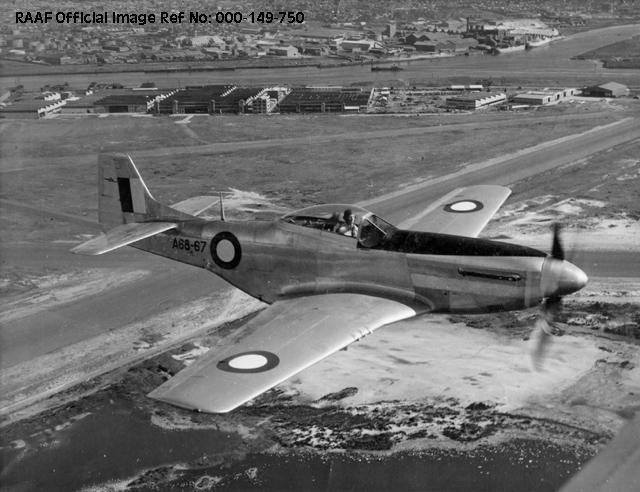
Brief: The first CAC Mustang was assembled from kits brought in from America. They also had a less powerful engine than the later versions that were built from scratch in Australia. So the CA-17 would have to be considered slightly worse than the P-51D-5 in game.
Engine: Packard Merlin V-1650-3
Top Speed: <698km/hr @ 7620m
Rate of Climb: <18.0m/s
Armament: 6x 0.50 M2 Browning
Secondary Armament: 2x 1,000lb bombs or 2x 500lb incendiary bombs, 10 x HVAR rockets
Useful Links: CAC CA-18 Mustang Mk 23 Merlin 66
CA-18 Mustang Mk 23 Merlin 70
Spoiler
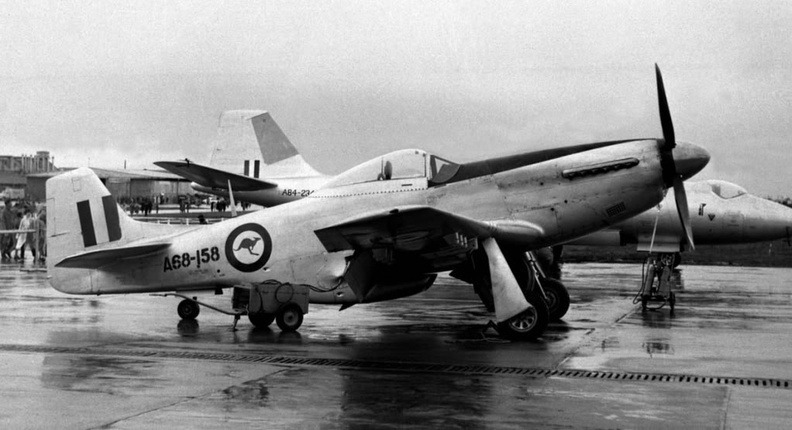
Brief: The Mk 23 Mustangs are built from scratch in Australia and use an actual Rolls Royce Merlin engine, as opposed to a Packard. They had either a Merlin 66, the low altitude engine found in Spitfire LF Mk VIII and IX, or the Merlin 70, the high altitude version found in the Spitfire HF Mk VIII and IX. The Merlin 70 version here would be interesting as it would have higher altitude capabilities than any P-51D in the game. Although Australia never used 150 octane fuel, so while this would be better than a P-51D 20 in game, it would still be worse than a P-51D 30. In addition, we all know the current meta is low altitude performance, so while the Merlin 70 would generally be considered better in real world conditions, in WT it would likely play worse than the Merlin 66.
Top Speed: >700km/hr @ ~8000m
Rate of Climb: ~20m/s
Armament: 6x 0.50 M2 Browning
Secondary Armament: 2x 1,000lb bombs or 2x 500lb incendiary bombs, 10 x HVAR rockets
Useful Links: CAC CA-18 Mustang Mk 23 Merlin 66
CA-18 Mustang Mk 23 Merlin 66
Spoiler
Brief: Brief: The Mk 23 Mustangs are built from scratch in Australia and use an actual Rolls Royce Merlin engine, as opposed to a Packard. They had either a Merlin 66, the low altitude engine found in Spitfire LV Mk VIII and IX, or the Merlin 70, the high altitude version found in the Spitfire HF Mk VIII and IX. From what I have read, the V-1650-7 in most P-51Ds is equivalent roughly to the Merlin 66, the Merlin 66 powered version being the one suggested here. Although Australia never used 150 octane fuel, so while this would be better than a P-51D 20 in game, it would still be worse than a P-51D 30.
Top Speed: >700km/hr @ 6400m
Rate of Climb: ~20m/s
Armament: 6x 0.50 M2 Browning
Secondary Armament: 2x 1,000lb bombs or 2x 500lb incendiary bombs, 10 x HVAR rockets
Useful Links: CAC CA-18 Mustang Mk 23 Merlin 66
Typhoon Mk Ib
Spoiler
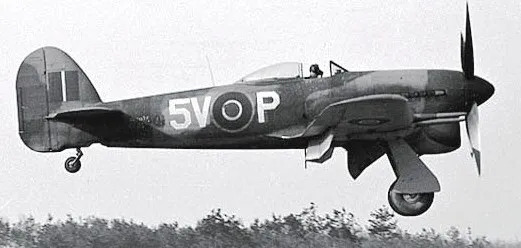
Brief: Canadian and New Zealand squadrons operated Typhoons, and Australia trialed them in tropical conditions. This Typhoon for Canada is one of the few vehicles in this tree with no modifications, it’s the same as the UK version.
Top Speed: 679km/hr @ 3800m
Rate of Climb: 19.5m/s
Engine: 2180hp Napier Sabre IIA
Armament: 4x 20mm Hispano Mk II
Secondary Armament: 2x 1,000lb bombs or 2x 500lb bombs, 8x RP-3 rockets
Useful Links: Hawker Typhoon - Wikipedia
Spitfire Mk Vc
Spoiler

Brief: All 3 operator nations flew Spitfires, the Canadian model represented in the tree here is not unique to the UK version already in game.
Top Speed: 609km/hr @ 3963m
Rate of Climb: 19.7m/s
Engine: Rolls Royce Merlin 45M
Armament: 4x 20mm Hispano Mk II, or 2x 20mm Hispano Mk II and 4x .303 Browning mg
Useful Links: Spitfire Mk Vc | War Thunder Wiki
CA-11 Woomera
Spoiler
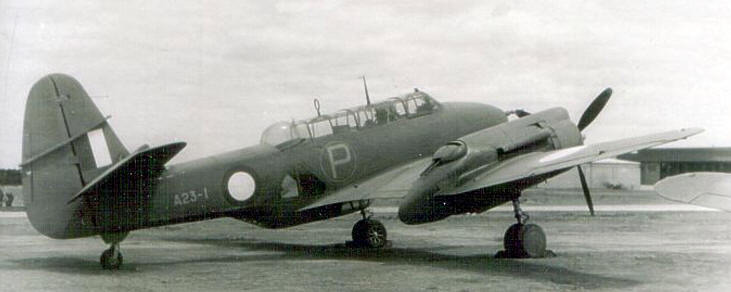
Brief: The Woomera took lessons from the CA-4 Wackett prototype and improved its shortcomings. Most notably, a new tail section, replacement of two 0.303 nose guns with 2x 20mm Hispanos, conventional self sealing fuel tanks and a new canopy design with a special sight for the tail gunner. The only difference between the CA-11 and CA-11A was an engine upgrade from 1200hp to 1350hp.
Top Speed: 454km/hr at 4700m
Rate of Climb: 10.6m/s
Engines: 2x Pratt & Whitney R-1830 Twin Wasps, 1200hp each
Main Armament: 2x 20mm Hispano Mk II, 2x 0.303 Browning machine guns in the nose, 4x 0.303 Browning machine guns in remote controlled barbettes (two on each engine nacelle), 1x 0.303 Vickers K machine gun in the ventral position
Secondary Armament: 4x 250lb bombs house internally in engine nacelles and
8x 25lb bombs mounted under the outer wings and
4x 500lb bombs under the fuselage or
2x Mk XII, Mk XV or Mk 13 aerial torpedoes under the fuselage or
1x torpedo and 1x 1330L fuel tank under the fuselage
Useful Links: https://forum.warthunder.com/t/ca-11-woomera-australias-answer-to-the-beaufighter/53276
CA-11A Woomera
Spoiler
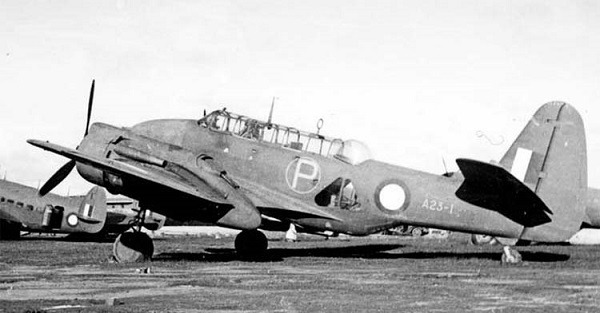
Brief: The Woomera took lessons from the CA-4 Wackett prototype and improved its shortcomings. Most notably, a new tail section, replacement of two 0.303 nose guns with 2x 20mm Hispanos, conventional self sealing fuel tanks and a new canopy design with a special sight for the tail gunner. The only difference between the CA-11 and CA-11A was an engine upgrade from 1200hp to 1350hp.
Top Speed: Slightly above 454km/hr at 4700m (CA-4 and CA-11 quoted performance)
Rate of Climb: Slightly above 10.6m/s (CA-4 and CA-11 quoted performance)
Engines: 2x Pratt & Whitney R-1830 Twin Wasps, 1350hp each
Main Armament: 2x 20mm Hispano Mk II, 2x 0.303 Browning machine guns in the nose, 4x 0.303 Browning machine guns in remote controlled barbettes (two on each engine nacelle), 1x 0.303 Vickers K machine gun in the ventral position
Secondary Armament: 4x 250lb bombs house internally in engine nacelles and
8x 25lb bombs mounted under the outer wings and
4x 500lb bombs under the fuselage or
2x Mk XII, Mk XV or Mk 13 aerial torpedoes under the fuselage or
1x torpedo and 1x 1330L fuel tank under the fuselage
Useful Links: https://forum.warthunder.com/t/ca-11-woomera-australias-answer-to-the-beaufighter/53276
Mosquito FB Mk.42
Spoiler

Brief: This is a tricky one, I have included it but it’s so hard to find any information on! Basically, one Australian Mk.40 was converted to a prototype using much more powerful Merlin 69 engines. The official De Havilland (BAE Systems) website mentions it, and I have found an Australian document supporting the presence of Merlin 69s for the Mosquito program. I can only assume that Mosquitos were declared obsolete before this variant entered production.
Engines: 2x Rolls Royce Merlin 69, 1710hp each
Top Speed: 656km/hr
Armament: 4x 20mm Hispano Mk II, 4x 0.303 Browning
Secondary Armament: 2x 250lb bombs or 2x 500lb bombs or 8x RP-3 rockets
Useful Links: https://www.baesystems.com/en/heritage/de-havilland-mosquito
https://recordsearch.naa.gov.au/SearchNRetrieve/Interface/ViewImage.aspx?B=164628
http://www.adf-serials.com.au/2a52.htm
https://recordsearch.naa.gov.au/SearchNRetrieve/Interface/ViewImage.aspx?B=25871363
Mosquito FB Mk.24
Spoiler
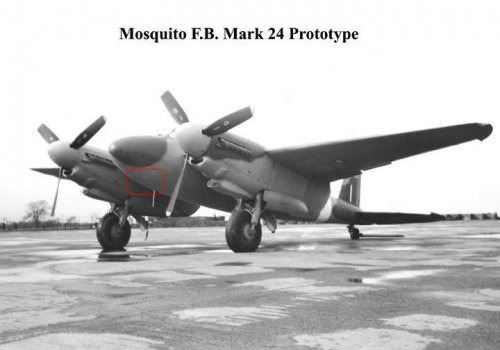
Brief: A Canadian licensed production Mosquito variant very similar to the Mk VI in game.
Engines: 2x Packard Merlin 301, 1620hp each
Top Speed: 618km/hr
Rate of Climb: 8.5m/s
Armament: 4x 20mm Hispano Mk II, 4x 0.303 Browning
Secondary Armament: 2x 250lb bombs or 2x 500lb bombs or 8x RP-3 rockets under the wings, 2x 250lb or 500lb bombs internally
Useful Links: De Havilland Mosquito - Wikipedia
Mosquito FB Mk.26
Spoiler
Brief: A Canadian licensed production Mosquito variant very similar to the Mk VI in game. The Mk.26 is an improved version of the Mk.21 using more powerful engines.
Engines: 2x Packard Merlin 225, 1620hp each
Top Speed: 618km/hr
Rate of Climb: 8.5m/s
Armament: 4x 20mm Hispano Mk II, 4x 0.303 Browning
Secondary Armament: 2x 250lb bombs or 2x 500lb bombs or 8x RP-3 rockets under the wings, 2x 250lb or 500lb bombs internally
Useful Links: De Havilland Mosquito - Wikipedia
CS2F-1
Spoiler

Brief: The CS2F is a Canadian production ASW aircraft based on the S-2 Tracker. The BR is hard to place, but the secondary weapons could be used to good effect in ground and naval battles. The CS2F-1 is the first production model.
Top Speed: 450km/hr @ sea level
Rate of Climb: 9.75m/s
Engine: 2x 1525hp Wright R-1820-82WA
Armament: None
Secondary Armament: 2x internal bays, 6x under wing pylons capable of using
6x CRV7 rocket pods
2x Mk 34, 41 or 43 torpedoes
Mk 54 depth charges
Naval mines
Useful Links: https://caspir.warplane.com/aircraft/serial-search/aircraft-no/200000450
https://en.wikipedia.org/wiki/Grumman_S-2_Tracker#
CS2F-2
Spoiler
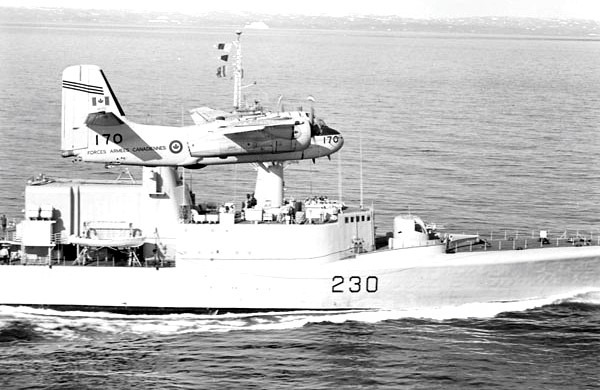
Brief: The CS2F is a Canadian production ASW aircraft based on the S-2 Tracker. The BR is hard to place, but the secondary weapons could be used to good effect in ground and naval battles. The CS2F-2 has new Litton Industries nav equipment.
Top Speed: 450km/hr @ sea level
Rate of Climb: 9.75m/s
Engine: 2x 1525hp Wright R-1820-82WA
Armament: None
Secondary Armament: 2x internal bays, 6x under wing pylons capable of using
6x CRV7 rocket pods
2x Mk 34, 41 or 43 torpedoes
Mk 54 depth charges
Naval mines
Useful Links: https://caspir.warplane.com/aircraft/serial-search/aircraft-no/200000450
https://en.wikipedia.org/wiki/Grumman_S-2_Tracker#
CS2F-3
Spoiler

Brief: The CS2F is a Canadian production ASW aircraft based on the S-2 Tracker. The BR is hard to place, but the secondary weapons could be used to good effect in ground and naval battles. The CS2F-3 is the final version, with further upgraded electronics.
Top Speed: 450km/hr @ sea level
Rate of Climb: 9.75m/s
Engine: 2x 1525hp Wright R-1820-82WA
Armament: None
Secondary Armament: 2x internal bays, 6x under wing pylons capable of using
6x CRV7 rocket pods
2x Mk 34, 41 or 43 torpedoes
Mk 54 depth charges
Naval mines
Useful Links: https://caspir.warplane.com/aircraft/serial-search/aircraft-no/200000450
https://en.wikipedia.org/wiki/Grumman_S-2_Tracker#
Mosquito B Mk.VII
Spoiler
Brief: A Canadian licensed production Mosquito variant based on the bomber Mk V version. These bomber variant Mosquitos forgo the primary armament for a bomber sight, as well as being able to carry heavier payloads.
Engines: 2x Packard Merlin 31, 1418hp each
Top Speed: ~610km/hr
Rate of Climb: ~8.0m/s
Armament: None
Secondary Armament: 2x1000lb or 4x 500lb bombs internally, 2x 500lb bombs underwing
Useful Links: De Havilland Mosquito - Wikipedia
Mosquito B Mk.XX
Spoiler

Brief: A Canadian licensed production Mosquito variant based on the bomber Mk IV version. These bomber variant Mosquitos forgo the primary armament for a bomber sight, as well as being able to carry heavier payloads.
Engines: 2x Packard Merlin 33, 1480hp each
Top Speed: 611km/hr
Rate of Climb: 12.7m/s
Armament: None
Secondary Armament: 2x1000lb or 4x 500lb bombs internally, 2x 500lb bombs underwing
Useful Links: De Havilland Mosquito - Wikipedia
Mosquito B Mk.25
Spoiler
Brief: A Canadian licensed production Mosquito variant based on the bomber Mk IV version. These bomber variant Mosquitos forgo the primary armament for a bomber sight, as well as being able to carry heavier payloads. The Mk.25 is a further improvement of the Mk.XX including more powerful engines.
Engines: 2x Packard Merlin 225, 1680hp each
Top Speed: ~657km/hr
Rate of Climb: ~14.0m/s
Armament: None
Secondary Armament: 2x1000lb or 4x 500lb bombs internally, 2x 500lb bombs underwing
Useful Links: De Havilland Mosquito - Wikipedia
B-25J Mitchell
Spoiler
Brief: Australia operated a total of 50 B-25s, most redirected to Australia from the NEI, some direct from USA. We already have B-25Js in the game, and Australian ones weren’t modified in any way that I know of.
Top Speed: 444km/hr @ 3049m
Armament: 6x 0.50 M2 Browning fixed in nose, 7x 0.50 M2 Browning in nose, tail, dorsal and beam turrets
Secondary Armament: 12x 100lb bombs or 8x 250lb bombs or 4x 500lb bombs or 3x 1000lb bombs
Useful Links: https://wiki.warthunder.com/unit/b_25j_20
Halifax B Mk.VII
Spoiler

Brief: A great number of Canadian squadrons operated numerous marks of the Halifax, as well as a few Australian squadrons. The Mk.VII has some improvements, but is largely going to perform the same as the Mk.III in game.
Top Speed: 454km/hr @ 4100m
Rate of Climb: 6.5m/s
Engine: 4x 1615hp Bristol Hercules XVI
Armament: 4x .303 Browning mg in dorsal turret, 4x .303 Browning mg in tail turret, 1x .303 Browning mg in nose turret
Secondary Armament: Up to 12000lb of bombs in 250lb, 500lb, 1000lb and 2000lb
Useful Links: https://en.wikipedia.org/wiki/Handley_Page_Halifax#
P-40N-40 Kittyhawk IV
Spoiler
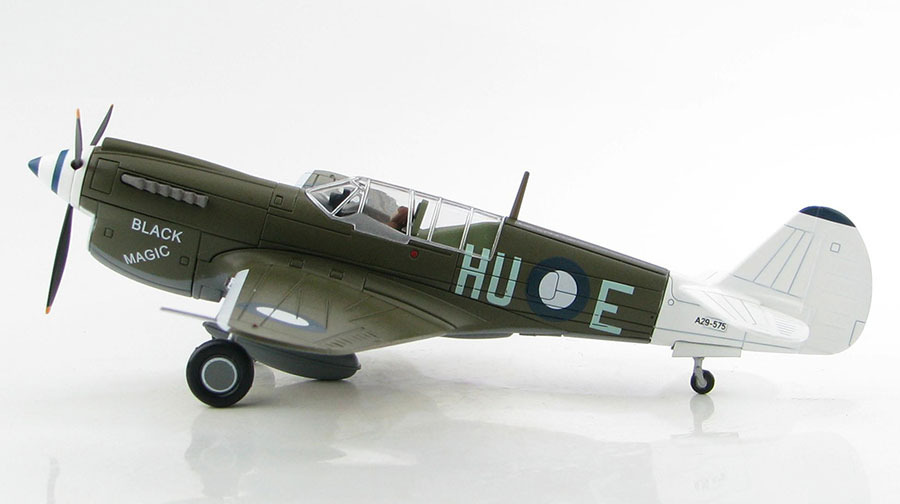
Brief: The P-40N was not only the most produced P-40 variant, it was the best one with numerous improvements over the E model currently in game. They were lighter, more powerful, more aerodynamically refined. I hope the USA tech tree also gets this P-40, but all 3 operators nations here had them, so hopefully we get unlockable skins for all. The -40 model suggested here has the more powerful V-1710-115 engine with 1360hp, while still having 6x 0.50 M2 Browning machine guns.
Australia’s highest scoring ace scored most of his kills flying P-40s in Africa. Clive Caldwell was the highest scoring P-40 ace of the entire war, and the highest scoring Allied pilot in the African theatre.
Top Speed: ~600km/hr at 5000m
Engine: Allison V-1710-115, 1360hp
Armament: 6x 0.50 M2 Browning machine guns, hopefully as this is a later P-40 variant it will have access in game to the AP-I belts
Secondary Armament: One rack under each wing, one under fuselage, 3x 500lb bombs
Useful Links: http://www.adf-serials.com.au/2a29.htm
http://www.wwiiaircraftperformance.org/P-40/P-40.html
Firefly FR Mk V
Spoiler

Brief: Both Canada and Australia operated a few variants of the Firefly off their aircraft carriers. Since we already have a Mk V in the game, it seemed most logical to make it the one selected.
Top Speed: 554km/hr @ 5181m
Armament: 4x 20mm Hispano Mk V
Secondary Armament: 2x 1000lb bombs or 16x RP-3 rockets or 2x 250lb/500lb bombs with 8 rockets
Useful Links: https://seapower.navy.gov.au/history/units/fairey-firefly-as5as6
Mustang IV
Spoiler
Brief: Canada purchased 150 P-51D Mustangs, as well as operating them in Article XV squadrons.
Engine: 1720hp Packard Merlin V-1650-7
Top Speed: 710km/hr @ 7620m
Rate of Climb: 18.9m/s
Armament: 6x 0.50 M2 Browning
Secondary Armament: 2x 1,000lb bombs, 10 x HVAR rockets
Useful Links: https://en.wikipedia.org/wiki/North_American_P-51_Mustang#Service_with_other_air_forces
A6M5 Model 52
Spoiler
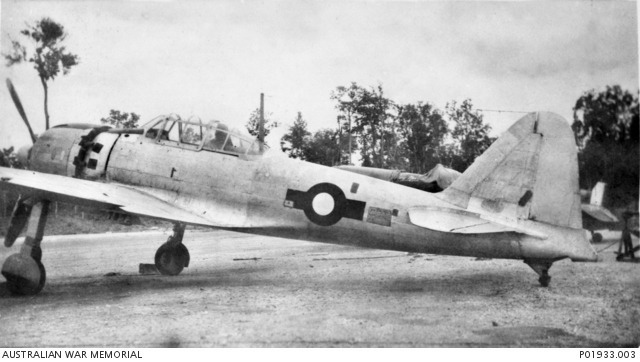
Brief: A captured Zero by Australian forces, and actually flown at the time. It even has RAAF roundels slapped on it. Makes for a solid premium option and a reminder of Australia’s involvement in the Pacific Theatre.
Top Speed: 565km/hr @ 6000m
Rate of Climb: 15.6m/s
Armament: 2x 20mm Type 99 Model 2, 2x 7.7mm Type 97
Secondary Armament: 2x 60kg bombs or 1x 250kg bomb
Useful Links: http://www.adf-serials.com.au/zero.htm
Rank 4
Spoiler
CA-15 Kangaroo 0.50cal
Spoiler
Brief: Australia’s own super prop design never saw production due to some bad luck, but it was by all reports a terrific aircraft. The wing design shares clear technological links with a P-51D, and the CA-15 has a similar weight to a P-51D but larger wings giving it lower wing loading so I expect it would turn a bit better than a P-51D. It also has a fair bit more horsepower than a P-51D so retention would undoubtedly be better. However it has higher wing loading and less WEP power than a P-51H so one would expect the H is still a better aircraft in most respects. Rip speed is definitely in excess of 808km/hr as this speed was achieved in the real aircraft in a shallow dive. Additionally, the design allowed for 3 different armament options, so I have given this tree a similar situation to what Japan has with the Ki-84, 3 identical aircraft at different BRs differing only in their guns. This one has the 6x 0.50cal machine guns.
Engine: Rolls Royce Griffin Mk 61, 2035hp
Top Speed: 720km/hr at 8047m, 592km/hr at sea level
Rate of Climb: 24.9m/s
Armament: 6x 0.50 M2 Browing machine guns, 3 in each wing, 250 rounds per gun
Secondary Armament: 2x 1000lb bombs or 2x 500lb bombs or 10x 5" T64 Rockets (HVAR)
Useful Links: https://forum.warthunder.com/t/cac-ca-15-kangaroo-australias-superprop/60018
CA-15 Kangaroo 0.50cal/20mm
Spoiler
Brief: Australia’s own super prop design never saw production due to some bad luck, but it was by all reports a terrific aircraft. The wing design shares clear technological links with a P-51D, and the CA-15 has a similar weight to a P-51D but larger wings giving it lower wing loading so I expect it would turn a bit better than a P-51D. It also has a fair bit more horsepower than a P-51D so retention would undoubtedly be better. However it has higher wing loading and less WEP power than a P-51H so one would expect the H is still a better aircraft in most respects. Rip speed is definitely in excess of 808km/hr as this speed was achieved in the real aircraft in a shallow dive. Additionally, the design allowed for 3 different armament options, so I have given this tree a similar situation to what Japan has with the Ki-84, 3 identical aircraft at different BRs differing only in their guns. This one has the 2x 0.50cal machine guns and 2x 20mm cannons.
Engine: Rolls Royce Griffin Mk 61, 2035hp
Top Speed: 720km/hr at 8047m, 592km/hr at sea level
Rate of Climb: 24.9m/s
Armament: 2x 0.50 M2 Browing machine guns, 1 in each wing, 250 rounds per gun, and 2x 20mm Hispano Mk II
Secondary Armament: 2x 1000lb bombs or 2x 500lb bombs or 10x 5" T64 Rockets (HVAR)
Useful Links: https://forum.warthunder.com/t/cac-ca-15-kangaroo-australias-superprop/60018
CA-15 Kangaroo 20mm
Spoiler
Brief: Australia’s own super prop design never saw production due to some bad luck, but it was by all reports a terrific aircraft. The wing design shares clear technological links with a P-51D, and the CA-15 has a similar weight to a P-51D but larger wings giving it lower wing loading so I expect it would turn a bit better than a P-51D. It also has a fair bit more horsepower than a P-51D so retention would undoubtedly be better. However it has higher wing loading and less WEP power than a P-51H so one would expect the H is still a better aircraft in most respects. Rip speed is definitely in excess of 808km/hr as this speed was achieved in the real aircraft in a shallow dive. Additionally, the design allowed for 3 different armament options, so I have given this tree a similar situation to what Japan has with the Ki-84, 3 identical aircraft at different BRs differing only in their guns. This one has the 4x 20mm cannons.
Engine: Rolls Royce Griffin Mk 61, 2035hp
Top Speed: 720km/hr at 8047m, 592km/hr at sea level
Rate of Climb: 24.9m/s
Armament: 4x 20mm Hispano Mk II
Secondary Armament: 2x 1000lb bombs or 2x 500lb bombs or 10x 5" T64 Rockets (HVAR)
Useful Links: https://forum.warthunder.com/t/cac-ca-15-kangaroo-australias-superprop/60018
Sea Fury FB.11
Spoiler
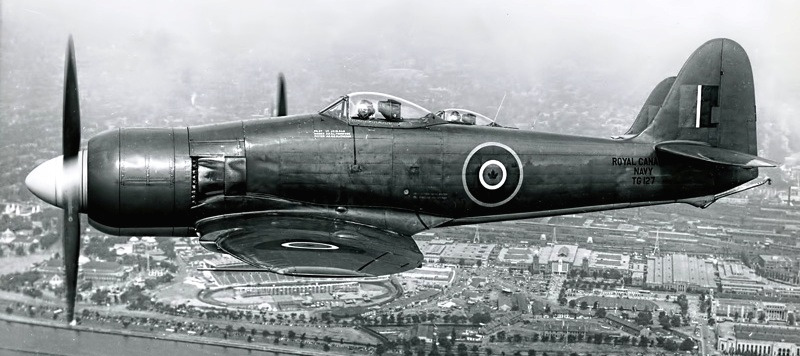
Brief: Both the Canadian and Royal Australian Navy operated the Sea Fury FB.11 from their aircraft carriers. Aside from having some really nice skin options, these are no different than the Sea Fury already in game.
Top Speed: 724km/hr @ 6096m
Rate of Climb: 22.0m/s
Armament: 4x 20mm Hispano Mk V
Secondary Armament: 2x 1000lb bombs or 8x RP-3 Rockets
Useful Links: https://wiki.warthunder.com/unit/sea_fury_fb11
Spitfire Mk XIV
Spoiler
Brief: Canada is one of the few nations that gets access to a Griffin powered Spitfire outside of the UK.
Top Speed: 726km/hr @ 6400m
Rate of Climb: 24.3m/s
Armament: 2x 20mm Hispano Mk II, 4x .303 Browning mg
Secondary Armament: 1x 500lb bomb
Useful Links: https://wiki.warthunder.com/unit/spitfire_mk14c
Strikemaster Mk.88
Spoiler
Brief: The RNZAF Strikemaster is already in game by way of a battle pass reward. It’s quite capable for its BR. Here it moves to a regular tech tree. While the in game secondary armament’s accuracy might be in question, I have gone with what it currently has in game.
Top Speed: 776km/hr @ 6096m
Rate of Climb: 26.0m/s
Armament: 2x 7.62mm FN 60.30
Secondary Armament: Bombs, rockets, gun pods, please refer wiki link below for details
Useful Links: https://wiki.warthunder.com/unit/strikemaster_mk88
CL-41R
Spoiler
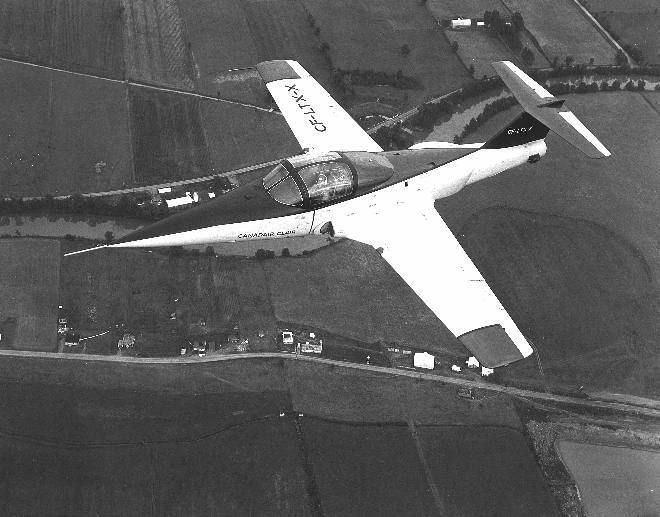
Brief: The CL-41 is a domestically designed jet trainer of Canada. The CL-41R was a modification to make a radar training variant for F-104 pilots.
Top Speed: 687km/hr @ 6096m
Rate of Climb: 17.3m/s
Engine: 1x Canadian Pratt & Whitney JTC-12A-2 turbojet engine, 2900lbf thrust
Armament: None
Secondary Armament: 2x 7.62 mm SUU-11/A gunpods with 3000 rounds total or
2x 12.7 mm SUU-12/A gunpods with 1500 rounds total or
2x 250 lb AN-M57A1 bombs or
2x 250 lb Mk.81 bombs or
2x 500 lb AN-M64A1 bombs or
2x 500 lb Mk.82 bombs or
2x 500 lb BLU-11/B napalm bombs or
38x 70mm Mighty Mouse rockets
Useful Links: https://forum.warthunder.com/t/canadair-cl-41r/214207
Lancaster Mk X
Spoiler
Brief: The Mk X Lancaster is a Canadian built Lancaster based on the B.III. Canada continued to use their Lancasters for various roles well after the war.
Top Speed: 462km/hr
Rate of Climb: 8.6m/s
Engine: 4x 1620hp Packard Merlin 224
Armament: 2x .303cal in nose turret, 2x .303cal in dorsal turret, 4x .303cal in tail turret
Secondary Armament: Up to 14000lb of bombs
Useful Links: https://forum.warthunder.com/t/victory-aircraft-lancaster-mk-x-its-maple-flavored/230653
Lancaster Mk XMR
Spoiler
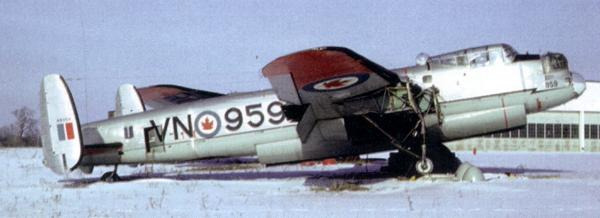
Brief: The Mk XMR Lancaster is a Canadian built Lancaster, a maritime patrol/ASW modification. Canada continued to use their Lancasters for various roles well after the war.
Top Speed: 510km/hr
Engine: 4x 1640hp Packard Merlin 224-5
Armament: 2x .303cal in nose turret, 4x .303cal in tail turret
Secondary Armament: 15 internal bomb bay stations carrying bombs, torpedoes, mines and depth charges
Useful Links: https://forum.warthunder.com/t/victory-aircraft-lancaster-mk-xmr-it-eats-subs-now/230654
Lancaster Mk X (Late)
Spoiler

Brief: The Mk X Lancaster is a Canadian built Lancaster based on the B.III. Canada continued to use their Lancasters for various roles well after the war. The Late version has the upgraded dorsal turret with heavier machine guns.
Top Speed: 462km/hr
Rate of Climb: 8.6m/s
Engine: 4x 1620hp Packard Merlin 224
Armament: 2x .303cal in nose turret, 2x .50cal in dorsal turret, 4x .303cal in tail turret
Secondary Armament: Up to 14000lb of bombs
Useful Links: https://forum.warthunder.com/t/victory-aircraft-lancaster-mk-x-martin-250ce-more-daka/230655
GAF Lincoln Mk.30A
Spoiler
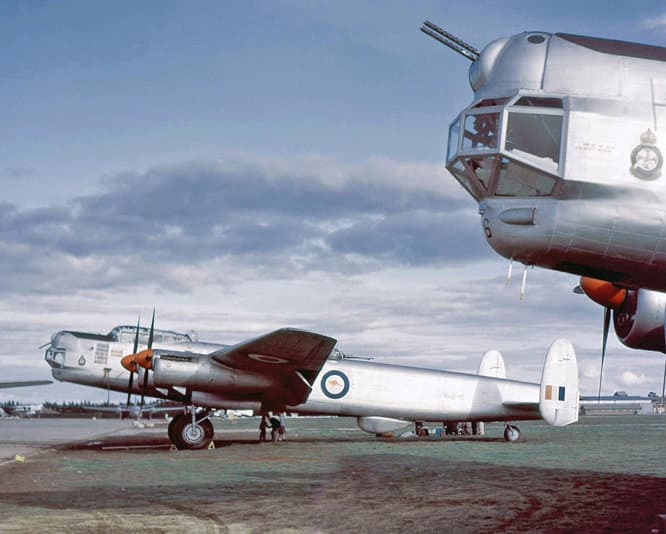
Brief: Post war saw Australia produce its own Lincoln bombers. Initially the Mk.30, later production improvements to structural strength and locally made Rolls Royce Merlin 102s were designated the Mk.30A. The improvements would not really be noticed in game, this Lincoln might fly fractionally different but really would perform the same as the Mk II already in game.
Engines: 4x Rolls Royce Merlin 102, 1780hp each
Top Speed: 513km/hr @ 5791m
Armament: 2x 20mm Hispano Mk V in dorsal turret, 2x 0.50 M2 Browning in nose and tail turrets
Secondary Armament: Up to 14000lb worth of 250/500/1000lb bombs
Useful Links: http://www.adf-serials.com.au/2a73.htm
GAF Lincoln Mk.31 MR
Spoiler

Brief: Australia produced a number of “long nose” Lincolns, a local derivative for use in maritime roles. The Mk.31 MR is a specialized Maritime Patrol model modified for anti submarine warfare and anti surface warfare. Unless the depth charges have more explosive mass than a 1000lb bomb, the newly available weapons might not have much use in War Thunder currently. The Mk.34 anti submarine homing torpedo is very slow and has a small explosive mass. I imagine it could be used against surface vessels but would be fairly ineffective. It does at least gain access to RP-3 rockets like a Shackleton has.
In addition, it is still a Lincoln operated by the same RAAF, I see no reason the equipment to mount the standard bombs wouldn’t still be available to it as well. And as we’ve seen in the past, custom weapon loadouts can give rise to loadouts not commonly if ever used in real life on aircraft. The specs list the same existing 15 stations in the bomb bay, with recommendations for a typical sortie. In WT it may be possible to load all the stations with the desired weapons.
Engines: 4x Rolls Royce Merlin 102, 1780hp each
Top Speed: 513km/hr @ 5791m
Armament: 2x 20mm Hispano Mk V in the dorsal turret, 2x 0.50 M2 Browning machine guns in the tail turret
Secondary Armament: 16x RP-3 rockets, 8 under each outer wing, and 15 stations in bomb bay, stations can use-
Depth charges, 1 station (stations 2 and 13 can mount two charges)
Standard bombs
Mk 34 homing torpedoes, 2 stations
It may have also been capable of carrying mines, I’m not sure if this was done
Useful Links: https://recordsearch.naa.gov.au/SearchNRetrieve/Interface/ViewImage.aspx?B=164778 (page 142)
Caldwell’s Spitfire LF Mk VIII
Spoiler
(image not Caldwell’s Spitfire, but a RAAF Spitfire still)
Brief: Many people are unaware that the Spitfire Mk VIII was actually the best Merlin Spitfire, better than the Mk IX. The Mk IX was a stopgap measure with the new engines while the Mk VIII was still being developed. As a result of aerodynamic improvements, the VIIIs were in fact faster. My BR estimate is however based on the fact that Australia did not use 150 octane fuel. And while the HF may have been considered better in real world conditions, the LF being higher in BR here is because of the current WT low altitude meta. Clive Caldwell meanwhile, was Australia’s top scoring ace of WW2. This was chosen as a premium due to its “copy paste” nature.
Top Speed: 650km/hr at 6400m
Engine: Rolls Royce Merlin 66, 1710hp
Primary Armament: 2x20mm Hispano Mk II, 4x 0.303 Browning machine guns
Secondary Armament: 1x500lb bomb centre fuselage, 2x 250lb bombs (one under each wing)
Useful Links: http://www.spitfireperformance.com/spitfire-VIII.html
Fw 190 F-8
Spoiler
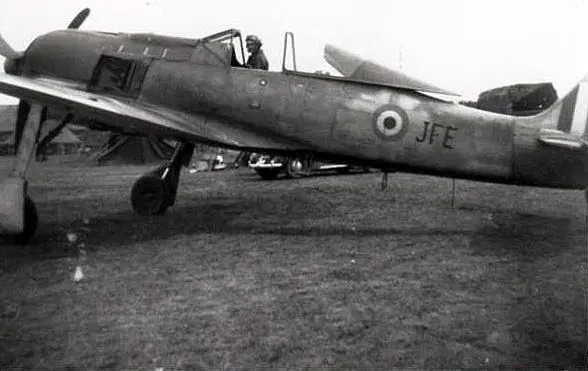
Brief: This Canadian captured Fw 190 F-8 was chosen for a premium here due to its “fit” in the tree, with rank 4 not having many strike aircraft options at this BR.
Top Speed: 635km/hr @ 5400m
Rate of Climb: 15.8m/s
Armament: 2x MG 151/20 20mm cannons, 2x 13mm MG 131 mg
Secondary Armament: 3 hardpoints, up to 1220kg, see below wiki link for details
Useful Links: https://wiki.warthunder.com/unit/fw-190f-8
Seafire Mk XV
Spoiler

Top Speed: 635km/hr @ 3962m
Rate of Climb: 24.2m/s
Engine: Rolls Royce Griffon VI, 1850hp
Armament: 2x 20mm Hispano Mk V, 4x .303 Browning mg
Secondary Armament: 4x Mk VIII rocket projectors or 1x 500lb bomb or 1x 250lb bomb
Useful Links: https://en.wikipedia.org/wiki/Supermarine_Seafire
P2V-5 Neptune
Spoiler
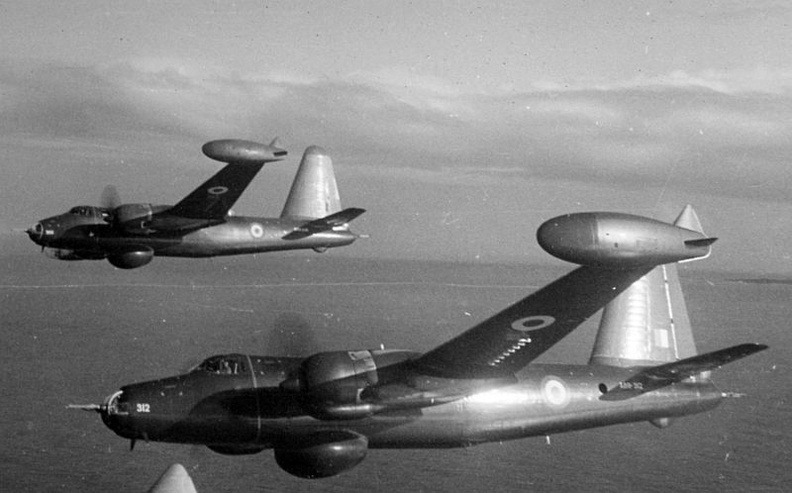
Brief: This tech tree suggestion is the early P2V-5 as introduced. The most comparable aircraft currently in game is possibly the A-26C or Tu-2S. Compared to the A-26C, speed is similar, the defensive guns and payload are stronger, but it doesn’t have all those 50cal for ground pounding and catching people off guard. I could be quite wrong about the BR here, but with pros and cons I gave it the same BR as the A-26C. I might also be wrong about the turrets, for sure the nose was 20mm, the tail and/or dorsal turrets may have been 50cal or 20mm, or both at differing times.
Top Speed: I found the top speed for early versions without the jet engine, and now I can’t find it again. I will update this if I find it again.
Engines: 2x Wright R-3350-26WA, 3200hp each
Armament: 2x 20mm cannon in nose turret, 2x 20mm cannon in tail turret, 2x 20mm cannon in dorsal turret
Secondary Armament: 16x HVAR rockets under wings, Up to 8000lb of bombs, torpedoes, depth charges or mines in bomb bay
Useful Links: https://radschool.org.au/magazines/Vol8/Page4.htm
https://www.warbirdsonline.com.au/2018/12/04/lockheed-neptune-a89-302-hars-parkes-aviation-museum/
Lancaster Mk X “Ruhr Express”
Spoiler
Brief: The Mk X Lancaster is a Canadian built Lancaster based on the B.III. Ruhr Express was the first one built to much fame and fanfare, so this named Lancaster is a premium option in our tree.
Top Speed: 462km/hr
Rate of Climb: 8.6m/s
Engine: 4x 1620hp Packard Merlin 224
Armament: 2x .303cal in nose turret, 2x .303cal in dorsal turret, 4x .303cal in tail turret
Secondary Armament: Up to 14000lb of bombs
Useful Links: https://www.warplane.com/ruhr-express.aspx
Rank 5
Spoiler
Vampire F.30
Spoiler
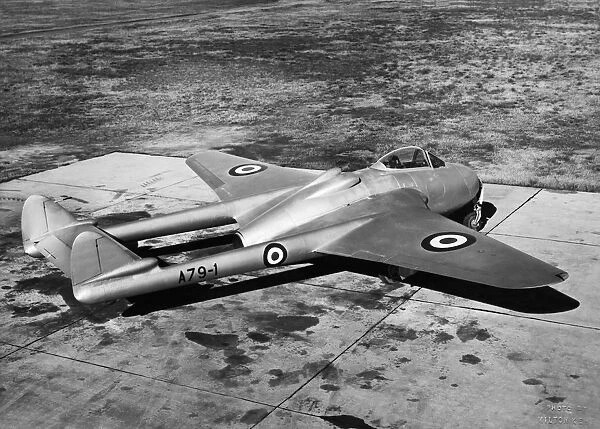
Brief: The Vampire was the first jet to enter Australian service. Local production began with the F.30 model. Australian Vampires were different to UK Vampires in that they used a more powerful Rolls Royce Nene engine. The additional power provided greater climb and acceleration however did not improve top speed due to mach limitations of the airframe. Due to the Nene engine requiring more air to feed it, additional intakes were placed on top of the fuselage, but this disrupted airflow to the elevator at high speeds, I believe this would manifest in War Thunder as more severe high speed compression compared to an FB.5. Additionally, the F.30 originally did not have the strengthened clipped wings of later FB models, so it has no access to secondary armament. Many F.30s were refitted as FB.31s later in life
Top Speed: 880km/hr or Mach 0.76
Rate of Climb: Please help me find this, I have searched and searched
Engine: Rolls Royce Nene 2-VH (CAC licensed production), 5,000lb thrust
Armament: 4x 20mm Hispano Mk V
Useful Links: https://www.radschool.org.au/magazines/Vol58/Page16.htm
Vampire FB.31
Spoiler

Brief: The Vampire FB.31 had improvements over the F.30 that included the “Fighter Bomber” strengthened clipped wings, allowing the use of bombs and rockets, and the moving of the dorsal air intakes to underneath the fuselage resolving the issues of airflow to the elevator. It still retained the Rolls Royce Nene engine. The FB.5 game is already quite a high BR for the what the airframe can offer, and the FB.31, while having greater climb and acceleration from the more powerful engine, is also slightly heavier, so I estimate it would be introduced at the same BR.
Top Speed: 880km/hr or mach 0.76
Rate of Climb: Please help me find this, I have searched and searched
Engine: Rolls Royce Nene 2-VH (CAC licensed production), 5,000lb thrust
Armament: 4x 20mm Hispano Mk V
Secondary Armament: 2x 1000lb bombs or 8x RP-3 rockets
Useful Links: https://en.wikipedia.org/wiki/De_Havilland_Vampire
Sea Venom FAW.53
Spoiler
Brief: The Royal Australian Navy operated the Sea Venom from 1956-1966. The FAW.53 is an Australian model but still built by UK. Compared to the FAW.20 currently in game, the FAW.53 has a more powerful engine and access to secondary armament.
Top Speed: 927km/hr at sea level
Rate of Climb: 30m/s
Engine: De Havilland Ghost 105, 5,300lb thrust
Armament: 4x 20mm Hispano Mk V, 150 rounds per gun
Secondary Armament: 2x 1000lb bombs or 8x RP-3 Rockets
Useful Links: https://seapower.navy.gov.au/history/units/de-havilland-sea-venom-faw-mk-53
Hawker P.1081
Spoiler

Brief: The Hawker P.1081 was built to a specification requested by the Australian government and was allocated serial numbers A86 but ultimately was not taken up. The fighter was even occasionally referred to as “The Australian Fighter”.
Top Speed: 1120km/hr @ sea level
Rate of Climb: 31m/s
Armament: 4x 20mm Hispano Mk V
Useful Links: https://forum.warthunder.com/t/hawker-p-1081-leading-the-way/17518
Vampire F.3
Spoiler
Brief: The Vampire was the first jet in Canadian service and was included for its historical significance as such. During its service life it received the stronger clipped wings allowing secondary ordinance. It is one of the few non-domestic aircraft in this tree.
Top Speed: 855km/hr @ 4572m or mach 0.76
Rate of Climb: 20m/s
Engine: 1x 3100lbf thrust de Havilland Goblin D.Gn.2
Armament: 4x 20mm Hispano Mk V
Secondary Armament: 2x 500lb bombs or 8x RP-3 rockets
Useful Links: https://forum.warthunder.com/t/de-havilland-dh-100-vampire-mk-iii-the-start-of-a-new-age-for-the-rcaf/198794
CF-100 Mk 3A
Spoiler

Brief: The CF-100 is a domestically designed and built jet fighter interceptor of Canada. It went through many iterations and multiple weapon layouts, the Mk 3A represented here is one of the earliest production models.
Top Speed: ~888km/hr (mach 1.1 dive limit)
Rate of Climb: ~40m/s
Engine: 2x Avro Canada Orenda 2, 6000lbf thrust each
Armament: 8x 12.7mm M3 Browning in ventral gun pack, 200 rounds per gun
Useful Links: https://canadianmuseumofflight.ca/2024/07/10/avro-canada-cf-100-canuck/
CF-100 Mk 3B
Spoiler

Brief: The CF-100 is a domestically designed and built jet fighter interceptor of Canada. It went through many iterations and multiple weapon layouts, the Mk 3B represented here is going to be functionally identical to the 3A, but with a more reliable engine model.
Top Speed: ~888km/hr (mach 1.1 dive limit)
Rate of Climb: ~40m/s
Engine: 2x Avro Canada Orenda 8, 6000lbf thrust each
Armament: 8x 12.7mm M3 Browning in ventral gun pack, 200 rounds per gun
Useful Links: https://canadianmuseumofflight.ca/2024/07/10/avro-canada-cf-100-canuck/
F2H-3
Spoiler
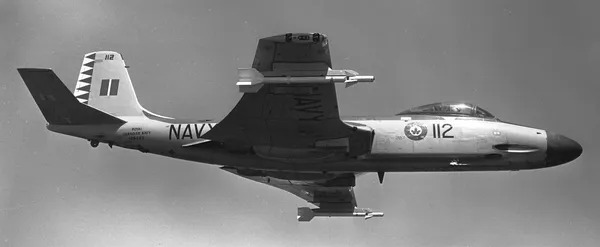
Brief: The F2H-3 was to be the last jet fighter in the Royal Canadian Navy, it is not a unique to Canada model but has been included for historical significance and for offering A2A missiles at this BR range.
Top Speed: 930km/hr @ sea level
Rate of Climb: 30m/s
Engine: 2x Westinghouse J34-WE-34, 3250lbf thrust each
Armament: 4x 20mm Colt Mk 12 cannons
Secondary Armament: 8x underwing pylons capable of
2x AIM9B or
6x 500lb or
16x 60lb HE rockets
Up to 3000lb max
Useful Links: https://en.wikipedia.org/wiki/McDonnell_F2H_Banshee#
Sabre Mk 2
Spoiler
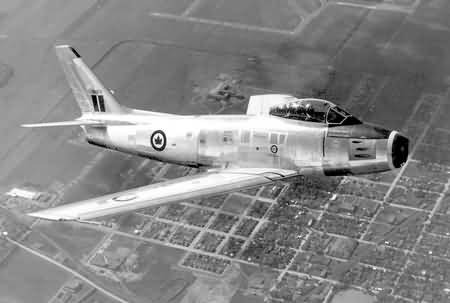
Brief: The Sabre Mk 2 was the first production model Sabre from Canadair in Canada. The original Mark did not yet use the Canadian Orenda engines, and only vary slightly from their American counterparts.
Top Speed: 949km/hr @ sea level
Rate of Climb: 38.1m/s
Engine: 1x General Electric J47-GE-13, 5200lbf thrust
Armament: 6x 12.7mm M3 Browning
Secondary Armament: 2x underwing hardpoints capable of
3" rockets
127mm Zuni FFAR
Mk77 Mod 1/2/3/4/5/6 500 lb incendiary bomb
Mk82 500 lb LDGP
Useful Links: https://forum.warthunder.com/t/canadair-sabre-mk-2-first-maple-used-sabre/246353
CF-100 Mk 5
Spoiler
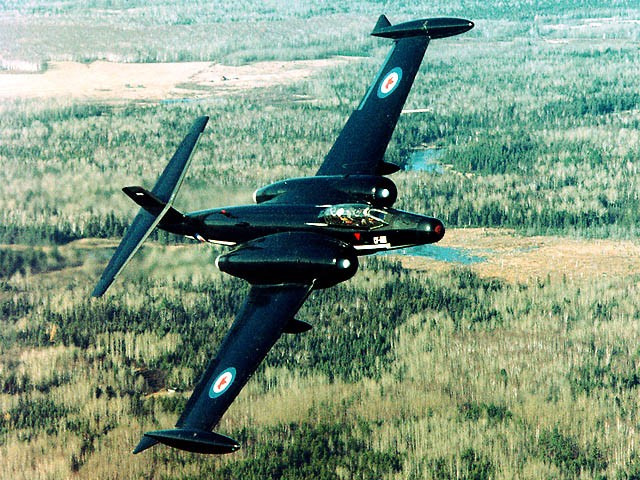
Brief: The CF-100 is a domestically designed and built jet fighter interceptor of Canada. It went through many iterations and multiple weapon layouts, the Mk 5 represented here has lost the ventral gun pack and instead using only the Mighty Mouse rocket pods. It does have more powerful engines than earlier Mk 3s as well.
Top Speed: 982km/hr (mach 1.1 dive limit)
Rate of Climb: 51.8m/s
Engine: 2x Avro Canada Orenda 11, 7275lbf thrust each
Armament: 58x 70mm Mighty Mouse FFAR in wingtips
Useful Links: https://forum.warthunder.com/t/avro-canada-cf-100-canuck-mk-5/158160
Aermacchi MB-339CB
Spoiler
Brief: The MB-339CB was acquired by the RNZAF in the early 1990s to replace their Strikemasters in the jet trainer role. It retains the ability to operate as a strike aircraft with some ordinance options.
Top Speed: 902km/hr @ sea level
Engine: Rolls Royce Viper 680-43, 4,400lb thrust
Secondary Armament: 6x hardpoints capable of 2x 12.7mm gunpods, Mk 82 500lb bombs, CRV7 rockets in 6-shot LAU 5002 pods
Useful Links: https://imgur.com/a/zVK6qXM
CL-41G
Spoiler

Brief: The CL-41 is a domestically designed jet trainer of Canada. The CL-41G is an up-armed variant. This specific version also saw service with the Royal Malaysian Air Force.
Top Speed: 791km/hr @ 4572m
Rate of Climb: 21.6m/s
Engine: 1x Orenda J85-CAN-40, 2700lbf thrust
Armament: None
Secondary Armament: 2 x 7.62 mm SUU-11/A gunpods, 3000 rounds total or
6 x 250 lb Mk.81 Snake eye bombs or
4 x 500 lb Mk.82 Snake eye bombs or
2 x 1000 lb Mk.83 bombs or
2 x 500 lb BLU-11 /B napalm bombs or
2 x 750 lb BLU-1/B napalm bombs or
2 x 500 lb Mk.20 cluster bombs or
52 x 70mm Mighty Mouse rockets or
8 x 127mm Zuni rockets
Useful Links: https://forum.warthunder.com/t/canadair-cl-41g/113099
CT-133 Mk 3AT
Spoiler

Brief: The CT-133 Silver Star is a domestically built and modified Canadian version of the T-33, itself a 2 seat training version of the P-80. One of the most notable changes includes an engine swap to a Canadian built British Rolls Royce Nene engine.
Top Speed: 920km/hr
Rate of Climb: ~24m/s
Engine: 1x Rolls-Royce Nene 10, 5000lbf thrust
Armament: 2x 12.7mm M3 Browning
Secondary Armament: 2x 1000lb bombs and/or 8x HVAR rockets
Useful Links: https://forum.warthunder.com/t/canadair-ct-133-mk-3at-silver-star/190931
P-3K2 Orion
Spoiler
Brief: The P-3K2 is an upgraded P-3C for New Zealand. An anti submarine and maritime patrol aircraft, the armaments available to it will lend itself well to War Thunder in air, naval or ground battles. While P-3C specifications are readily available for USA Orions, I found it difficult to find exactly what the RNZAF used on it. I think it’s important to consider what weaponry New Zealand had in their inventory. I have listed below what I believe the Orions had access to from various web pages I have read.
While considering its BR, I compared it to two other bombers without defensive armament, the Ar 234 B and the Canberra. The Orion is in between these two in terms of speed but with a much larger payload. Due to some of the weaponry, I suspect it would have a higher BR in ground and naval battles.
Top Speed: 760km/hr at 4600m
Engines: 4 x Allison T56-A-14 turboprop, 4600hp each
Rate of climb: 16m/s
Armament: 10 wing stations (3 under each wing, 2 under each wing root) and 8 internal bomb bay stations, total capacity 20,000lb
Capable of using 500lb Mk 82 bombs, 1000lb Mk 83 bombs, AGM-65 Maverick, Mk 46 torpedoes, depth charges, AGM-84 Harpoon anti ship missiles
Useful Links: https://www.nzdf.mil.nz/nzdf/our-equipment/aircraft/p-3k2-orion/
GAF Canberra Mk 20
Spoiler
Brief: Australia was the first export customer for the Canberra bomber, hence why it is named after our capital city. Government Aircraft Factory undertook production in Australia for the RAAF models. The type would see service in the Malayan Emergency and Vietnam. The Mk 20 is the Australian model designation, and is basically the same as a B Mk 2 we already have in game save for some local modifications like additional fuel tanks.
Top Speed: 880km/hr @ 3000m
Armament: 9x 500lb bombs or 6x 1000lb bombs
Useful Links: https://www.airforce.gov.au/community/event-participation/air-force-heritage-aircraft-fleet/english-electric-canberra
Canberra B(I).12
Spoiler

Brief: The Canberra B(I).12 is a B(I).8 modified slightly (autopilot and nav equipment) for New Zealand. And since the B(I).8 itself is a modified B(I).6, the performance/stats will be the same in game.
Top Speed: 880km/hr @ 3000m
Armament: 4x 20mm Hispano Mk V
Secondary Armament: 5x 500/1000lb bombs
Useful Links: http://www.adf-serials.com.au/nz-serials/nzcanberra.htm
Meteor F Mk 3
Spoiler

Brief: The RNZAF had one Meteor F Mk 3 which was used to train pilots on jet aircraft. This was the first jet in New Zealand service. However being a one off used for training I have used it as a premium here.
Top Speed: 755km/hr @ 6096m
Rate of Climb: 22.5m/s
Armament: 4x 20mm Hispano Mk II
Useful Links: https://airforcemuseum.co.nz/blog/meteoric-rise-new-zealands-first-jet-flight/
Meteor F Mk 8
Spoiler
Brief: The RAAF operated a number of Meteor F Mk 8, and the type saw action in the Korean War. They were not modified in any way that I know of, this would be the same as the Mk 8 already in game. Hence it was selected to be a premium option in this tree.
Top Speed: 962km/hr @ sea level
Rate of Climb: 40.2m/s
Armament: 4x 20mm Hispano Mk V
Secondary Armament: 2x 1000lb bombs or 8x RP-3 rockets
Useful Links: https://wiki.warthunder.com/unit/meteor_fmk8
Sabre Mk 4
Spoiler
Brief: The Sabre Mk 4 was a slightly modified Mk 2 Sabre from Canadair in Canada. In game it will largely be identical to the Mk 2 however, so we’ve chosen it as an event plane for this suggestion. The original Marks did not yet use the Canadian Orenda engines, and only vary slightly from their American counterparts.
Top Speed: 949km/hr @ sea level
Rate of Climb: 38.1m/s
Engine: 1x General Electric J47-GE-13, 5200lbf thrust
Armament: 6x 12.7mm M3 Browning
Secondary Armament: 2x underwing hardpoints capable of
3" rockets
127mm Zuni FFAR
Mk77 Mod 1/2/3/4/5/6 500 lb incendiary bomb
Mk82 500 lb LDGP
Useful Links: https://forum.warthunder.com/t/canadair-sabre-mk-4-kept-some-for-home/246354
Venom FB.1
Spoiler

Brief: In 1955 during the Malayan Emergency, the RNZAF took on board a strength of Venom FB.1 as part of their contribution. The FB.1 is very similar to the FB.4 currently in game, however had an earlier rudder design and did not yet have hydraulically power ailerons, so it could be expected that rudder and roll performance will be slightly worse.
Top Speed: 1030km/hr @ sea level
Rate of Climb: 34m/s
Engine: De Havilland Ghost 103, 4,850lb thrust
Armament: 4x20mm Hispano Mk V
Secondary Armament: 2x1000lb bombs or 8xRP-3 rockets
Useful Links: https://airforcemuseum.co.nz/blog/rumble-in-the-jungle-the-rnzaf-in-the-malayan-emergency/
Rank 6
Spoiler
CA-27 Sabre Mk 30
Spoiler

Brief: The CAC Sabre was an Australian production and modification of the North American F-86. It featured a more powerful Rolls Royce Avon engine that required a significant redesign of the fuselage. Notably it also had 2x 30mm ADEN cannons significantly improving the hitting power. The Mk 30 has the original Sabre wing design with leading edge slats for low speed maneuverability and only two hardpoints.
Top Speed: 1126km/hr
Rate of Climb: 61m/s
Engine: 1x Rolls-Royce/CAC RA.7 Avon Mk.26 axial flow turbojet, 7500lb thrust
Armament: 2x 30mm ADEN cannons
Secondary Armament: 2 underwing hardpoints capable of carrying AIM-9B Sidewinders, 24x HVAR rockets, bombs up to 1000lb, fuel drop tanks
Useful Links: https://www.airforce.gov.au/community/event-participation/air-force-heritage-aircraft-fleet/ca-27-sabre
CA-27 Sabre Blue Jay
Spoiler
Brief: A CA-27 Sabre Mk.30 was used for the acceptance trials of the Blue Jay missile (production name Firestreak). This trials aircraft would therefore be the same as the tech tree Mk.30 except instead of AIM-9Bs, it would have 2x Firestreaks.
Top Speed: 1126km/hr
Rate of Climb: 61m/s
Engine: 1x Rolls-Royce/CAC RA.7 Avon Mk.26 axial flow turbojet, 7500lb thrust
Armament: 2x 30mm ADEN cannons
Secondary Armament: 2 underwing hardpoints capable of carrying Firestreaks, 24x HVAR rockets, bombs up to 1000lb, fuel drop tanks
Useful Links: http://www.adf-serials.com.au/2a94.htm
CA-27 Sabre Mk 31
Spoiler
Brief: The CAC Sabre was an Australian production and modification of the North American F-86. It featured a more powerful Rolls Royce Avon engine that required a significant redesign of the fuselage. Notably it also had 2x 30mm ADEN cannons significantly improving the hitting power. The Mk 31 has the updated 6/3 Sabre wing design with leading edge slats removed and wing fences added and only two hardpoints. This wing design provided better performance at high speed.
Top Speed: 1126km/hr
Rate of Climb: 61m/s
Engine: 1x Rolls-Royce/CAC RA.7 Avon Mk.26 axial flow turbojet, 7500lb thrust
Armament: 2x 30mm ADEN cannons
Secondary Armament: 2 underwing hardpoints capable of carrying AIM-9B Sidewinders, 24x HVAR rockets, bombs up to 1000lb, fuel drop tanks
Useful Links: https://www.airforce.gov.au/community/event-participation/air-force-heritage-aircraft-fleet/ca-27-sabre
CA-27 Sabre Mk 32
Spoiler
Brief: The CAC Sabre was an Australian production and modification of the North American F-86. It featured a more powerful Rolls Royce Avon engine that required a significant redesign of the fuselage. Notably it also had 2x 30mm ADEN cannons significantly improving the hitting power. The Mk 32 has an updated 6/3 Sabre wing design now with 4 underwing hardpoints. Since the Mk 32 offers no tangible performance improvement over the Mk 31 save for additional hardpoints, I gave it the same BR as the Mk 31. Sabres are arguably over tiered as it is, but CAC Sabres are better than any Sabre in the game so they had to be a higher BR.
Top Speed: 1126km/hr
Rate of Climb: 61m/s
Engine: 1x Rolls-Royce/CAC RA.7 Avon Mk.26 axial flow turbojet, 7500lb thrust
Armament: 2x 30mm ADEN cannons
Secondary Armament: 4 underwing hardpoints capable of carrying AIM-9B Sidewinders, 24x HVAR rockets, bombs up to 1000lb, fuel drop tanks
Useful Links: https://forum.warthunder.com/t/commonwealth-aircraft-corporation-ca-27-sabre-mk-32-the-hunter-down-under/47254
Mirage IIIO (F)
Spoiler
Brief: The Mirage IIIO was the replacement in Australian service for the Sabre and their first supersonic aircraft in level flight. The “O” humorously stands for “Ostralia”, while the (F) stands for Fighter. The version being suggested here is the IIIO (F) as introduced in the 1960s. The first couple examples were built in France, production of components gradually shifted to Australia until the Mirages were being built entirely here.
Top Speed: Mach 1.14 (1390km/hr) at sea level, Mach 2.2 (2350km/hr) at 10,973m
Engine: SNECMA Atar 9C, 13,670lb thrust with afterburner
Armament: 2x30mm DEFA 552 cannon
Secondary Armament: 2x AIM-9B Sidewinder, one under each wing, and 1x Matra 530 under the fuselage. Up to 6x 500lb Mk 82 bombs
Useful Links: https://www.airforce.gov.au/sites/default/files/2023-07/A3-Dassault%20Mirrage%20III-%20%20pp418-423.pdf
CF-100 Mk 4A
Spoiler
Brief: The CF-100 is a domestically designed and built jet fighter interceptor of Canada. It went through many iterations and multiple weapon layouts, the Mk 4 is improved on the Mk 3, including a new, more powerful version of the Orenda engine. It also has arguably the most well rounded of the armaments, maintaining the gun pack while also having the rocket pods.
Top Speed: 1030km/hr (mach 1.1 dive limit)
Rate of Climb: ~45m/s
Engine: 2x Avro Canada Orenda 9, 6500lbf thrust each
Armament: 8x 12.7mm M3 Browning in ventral gun pack, 200 rounds per gun
Secondary Armament: 58x 70mm Mighty Mouse FFAR in wingtips
Useful Links: https://www.nationalmuseum.af.mil/Visit/Museum-Exhibits/Fact-Sheets/Display/Article/198077/avro-cf-100-mk4a-canuck/
CF-100 Mk 4B
Spoiler
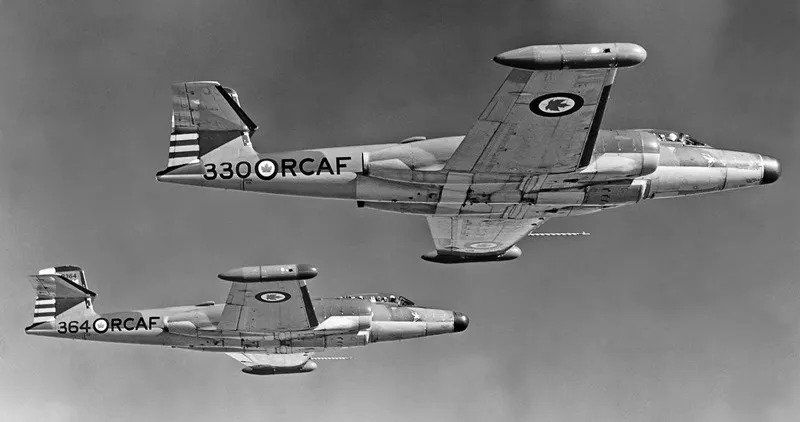
Brief: The CF-100 is a domestically designed and built jet fighter interceptor of Canada. It went through many iterations and multiple weapon layouts, the Mk 4B is improved on the Mk 4A, including a new, more powerful version of the Orenda engine.
Top Speed: 982km/hr (mach 1.1 dive limit)
Rate of Climb: 48m/s
Engine: 2x Avro Canada Orenda 11, 7275lbf thrust each
Armament: 8x 12.7mm M3 Browning in ventral gun pack, 200 rounds per gun
Secondary Armament: 58x 70mm Mighty Mouse FFAR in wingtips
Useful Links: https://forum.warthunder.com/t/cf-100-mk-4b-the-canuck/9605
CF-100 Mk 5M
Spoiler
Brief: The CF-100 is a domestically designed and built jet fighter interceptor of Canada. It went through many iterations and multiple weapon layouts, the Mk 5M is the final production variant, it has lost the gun pack but retained the rocket pods and gained 4 AIM-7 missiles.
Top Speed: 982km/hr (mach 1.1 dive limit)
Rate of Climb: 51.8m/s
Engine: 2x Avro Canada Orenda 11, 7275lbf thrust each
Armament: None
Secondary Armament: 58x 70mm Mighty Mouse FFAR in wingtips, 4x AIM-7 Sparrow II Mk.1
Useful Links: https://forum.warthunder.com/t/avro-canada-cf-100-canuck-mk-5m/235735
Sabre Mk 5
Spoiler
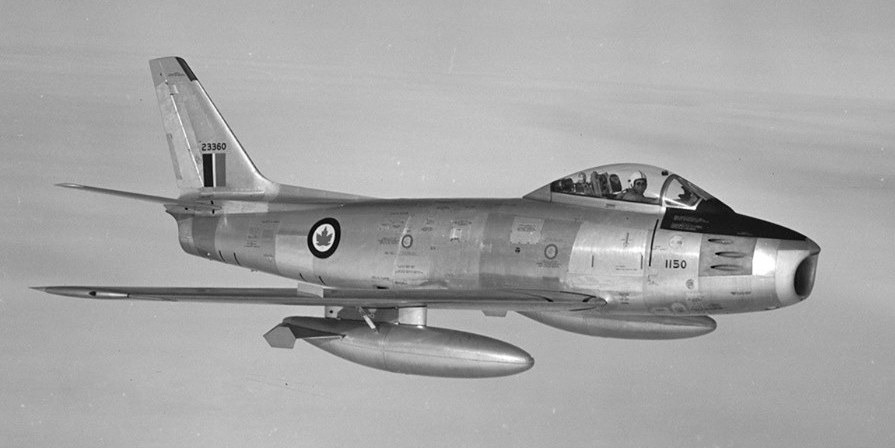
Brief: The Sabre Mk 5 is the first Canadair Sabre to use a Canadian made engine, along with other improvements such as the 6-3 wing design from the F-86F. This Sabre is currently found in game in the German tech tree.
Top Speed: 1114km/hr @ sea level
Rate of Climb: 49.3m/s
Engine: 1x Orenda 10, 6355lbf thrust
Armament: 6x 12.7mm M3 Browning
Secondary Armament: 2x underwing hardpoints capable of
3" rockets
127mm Zuni FFAR
Mk77 Mod 1/2/3/4/5/6 500 lb incendiary bomb
Mk82 500 lb LDGP
Useful Links: https://forum.warthunder.com/t/canadair-sabre-mk-5-now-with-a-maple-engine/237487
Sabre Mk 6
Spoiler
Brief: The Sabre Mk 6 is the final production variant of the Canadair Sabre, using the most powerful engine. It has often been debated if this or the CAC Sabres were the best Sabres ever built, but in truth they are remarkably similar despite their differences.
Top Speed: 1122km/hr @ sea level
Rate of Climb: 62.5m/s
Engine: 1x Orenda 14, 7275lbf thrust
Armament: 6x 12.7mm M3 Browning
Secondary Armament: 4x underwing hardpoints capable of
Rockets:
2 x Matra rocket pods with 18 SNEB 68 mm (2.7 in) rockets
16 x 5 inch (127 mm) HVAR rockets
Bombs:
1,000 lb (450 kg) bombs
Napalm bomb canisters
Tactical nuclear weapon
Useful Links: https://forum.warthunder.com/t/canadair-sabre-mk-6-maples-ultimate-sabre/246352
CF-116A
Spoiler
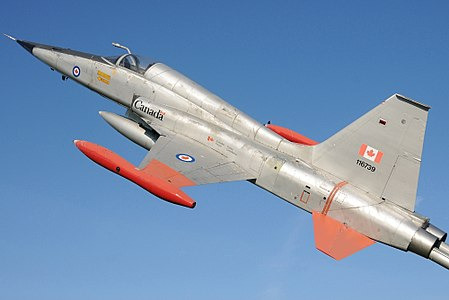
Brief: The CF-116 is a Canadian built F-5, with some minor modifications. This early version lacks any air to air missiles making it a gun fighter with some CAS capability.
Top Speed: 1575km/hr
Rate of Climb: 175m/s
Engine: 2 × Orenda-built GE J85-15 turbojet, 2,925lbf thrust each dry, 4,300lbf with afterburner
Armament: 2× 20mm Pontiac M39A2 cannons in the nose, 280 rounds/gun
Secondary Armament: 5 hardpoints, up to 7000lb total of
2 x CRV-7 rocket pods
2 x LAU-10 rocket pods with 4 x Zuni 127 mm FFARs
2 x Matra rocket pods with 18 x 68 mm SNEBs
Mark 80 series of iron bombs
CBU-24/49/52/58 cluster bombs
BL755 cluster bombs
Useful Links: https://forum.warthunder.com/t/canadair-cf-116a-freedom-fighter-the-unwanted-jet-forced-on-a-nation/186714
A-4G Skyhawk
Spoiler

Brief: The Australian version of the A-4 Skyhawk was modified to be capable of carrying 4 Sidewinders instead of the usual 2, to operate in the fleet defense role. It would not however have access to guided AGMs like other Skyhawks in the game.
Top Speed: 1085km/hr at sea level
Engine: Pratt & Whitney J52-P8A, 9300 lbs thrust
Armament: 2x 20mm Colt Mk 12 cannons
Secondary Armament: 5 hardpoints, 2 under each wing and 1 under the fuselage, up to 8500lb total. Capable of using 4x AIM-9B Sidewinder, 4x 127mm Zuni rocket pods (each with 4 rockets), FFAR rocket pods, Mk 80 series bombs up to 1000lb
Useful Links: https://seapower.navy.gov.au/history/units/douglas-a4g-skyhawk
A-4K Early
Spoiler
Brief: The A-4K Early is representative of an A-4K in early service with NZ, pre-1983.
Top Speed: 1085km/hr at sea level
Engine: Pratt & Whitney J52-P8A, 9300 lbs thrust
Armament: 2x 20mm Colt Mk 12 cannons
Secondary Armament: 5 hardpoints, 2 under each wing and 1 under the fuselage, up to 8500lb total. Capable of using 2x AIM-9G Sidewinder, Mighty Mouse rocket pods, Mk 80 series bombs up to 1000lb, Zuni rocket pods
Useful Links: https://forum.warthunder.com/t/a-4k-kahu-the-modernized-kiwi/161435/142
A-4K Skyhawk Kahu
Spoiler

Brief: The A-4K Kahu is a late life upgrade program for the RNZAF’s Skyhawk fleet. It was a comprehensive upgrade to its avionics and weapons suite, while also refreshing the airframes.
Top Speed: 1085km/hr at sea level
Engine: Pratt & Whitney J52-P8A, 9300 lbs thrust
Armament: 2x 20mm Colt Mk 12 cannons
Secondary Armament: 5 hardpoints, 2 under each wing and 1 under the fuselage, up to 8500lb total. Capable of using 4x AIM-9L Sidewinder, CRV7 rocket pods, Mk 80 series bombs up to 1000lb, 2x AGM-65B Maverick, GBU-16 Paveway II laser guided bombs
Useful Links: https://forum.warthunder.com/t/a-4k-kahu-the-modernized-kiwi/161435
CF-101B
Spoiler
Brief: The CF-101B was purchased from US F-101 stocks to serve as an interceptor replacement for the CF-100 in 1961. They remained in service for over 20 years.
Top Speed: 1825km/hr
Engine: 2x Pratt & Whitney J57-P-55, 12000lbf dry, 17000lbf with afterburner
Armament: None
Secondary Armament: 2x AIM-4D Falcon, 2x AIR-2A Genie nuclear rockets
Useful Links: https://forum.warthunder.com/t/cf-101-voodoo-unsung-guardian-of-the-north/64808
CF-104
Spoiler
Brief: The CF-104 is a licensed built Canadian F-104 based on the F-104G with some minor changes. While it’s believed technically possible to mount Sidewinders, this never seemed to have been done in Canadian service. It was often used in a strike and reconnaissance role.
Top Speed: 1844km/hr
Engine: Orenda GE J79-OEL7, 10000lbf dry, 15800lbf with afterburner
Armament: 1x 20 mm M61A1 Vulcan rotary cannon
Secondary Armament: 70 mm CRV-7 rockets, CBU 1 cluster bombs, BL-755 cluster bombs, Mk 82 500 lb bombs, MK28RE 70 kt nuclear weapon
Useful Links: https://forum.warthunder.com/t/canadair-cf-104-starfighter-following-the-trends/244692
CF-105 Mk 1
Spoiler
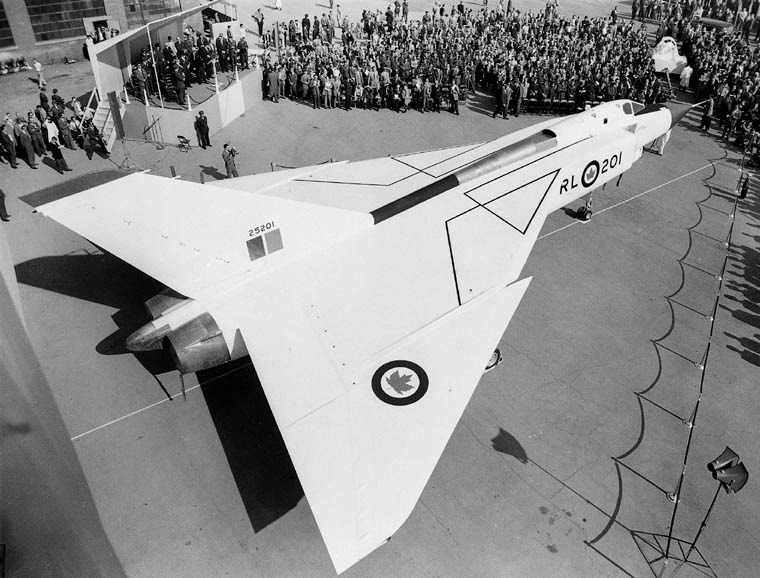
Brief: The CF-105 is often considered one of the greatest “what-ifs” of aviation history. A Canadian designed interceptor of the 1950s with mach 2+ potential may well have been one of the best fighter jets of its day. Sadly it was cancelled with no production orders.
Top Speed: 2104km/hr
Engine: 2x Pratt & Whitney J75, 16500lbf thrust dry, 23500lbf thrust with afterburner each
Armament: None
Secondary Armament: 2x AIR-2A Genie or 8x AIM-4 Falcon or 4x Canadair Velvet Glove or 2x AIM-7 Sparrow II D
Useful Links: https://en.wikipedia.org/wiki/Avro_Canada_CF-105_Arrow#
CP-107 Argus Mk.1
Spoiler
Brief: The CP-107 is a Canadian designed maritime patrol aircraft. The BR will probably vary wildly between air and ground battles due to the weaponry it could carry.
Top Speed: 507km/hr
Engine: 4x Wright R-3350 TC18EA1, 3700hp each
Armament: None
Secondary Armament: Maximum load of 8000lb
Rockets: 2.75 inch Folding-Fin Aerial Rockets (FFAR)
Missiles: AGM-12B Bullpup air-to-surface missiles
Torpedoes:
Mark 30
Mark 43 mod 0
Mark 44
Mark 46
Bombs: 350 lb (160 kg) Mark 54 depth charges
Useful Links: https://en.wikipedia.org/wiki/Canadair_CP-107_Argus#
CP-107 Argus Mk.2
Spoiler
Brief: The CP-107 is a Canadian designed maritime patrol aircraft. The BR will probably vary wildly between air and ground battles due to the weaponry it could carry. The Mk.2 difference is in the different navigation, communication and tactical electronic equipment fitted internally, and a new search radar under the chin.
Top Speed: 507km/hr
Engine: 4x Wright R-3350 TC18EA1, 3700hp each
Armament: None
Secondary Armament: Maximum load of 8000lb
Rockets: 2.75 inch Folding-Fin Aerial Rockets (FFAR)
Missiles: AGM-12B Bullpup air-to-surface missiles
Torpedoes:
Mark 30
Mark 43 mod 0
Mark 44
Mark 46
Bombs: 350 lb (160 kg) Mark 54 depth charges
Useful Links: https://en.wikipedia.org/wiki/Canadair_CP-107_Argus#
CF-101B IIP
Spoiler
Brief: The CF-101B was purchased from US F-101 stocks to serve as an interceptor replacement for the CF-100 in 1961. They remained in service for over 20 years. The main difference in the IIP is the addition of an IRST.
Top Speed: 1825km/hr
Engine: 2x Pratt & Whitney J57-P-55, 12000lbf dry, 17000lbf with afterburner
Armament: None
Secondary Armament: 2x AIM-4D Falcon, 2x AIR-2A Genie nuclear rockets
Useful Links: https://forum.warthunder.com/t/cf-101-voodoo-unsung-guardian-of-the-north/64808
A-4K (G)
Spoiler
Brief: The A-4K (G) is one of the RAN’s ex A-4G Skyhawks transferred to the RNZAF and upgraded to A-4K specs. However as a leftover of their service in Australia, they retained their ability to mount 4 Sidewinders.
Top Speed: 1085km/hr at sea level
Engine: Pratt & Whitney J52-P8A, 9300 lbs thrust
Armament: 2x 20mm Colt Mk 12 cannons
Secondary Armament: 5 hardpoints, 2 under each wing and 1 under the fuselage, up to 8500lb total. Capable of using 4x AIM-9G Sidewinder, Mighty Mouse rocket pods, Mk 80 series bombs up to 1000lb, Zuni rocket pods
Useful Links: https://forum.warthunder.com/t/a-4k-kahu-the-modernized-kiwi/161435/142
Mirage IIIC City of Hobart
Spoiler
Brief: During the marketing of the Mirage to Australia, a Mirage IIIC prototype was built with a Rolls Royce Avon engine as it was felt the Australians would be more interested if it had an engine they were already familiar with. Named “City of Hobart”, with a 36" afterburner it actually had better flight performance than a standard Atar 9C engined Mirage. Unfortunately the Atar engine was selected on grounds of initial cost. Although it has been postulated that this was a bad decision in hindsight. It’s important to remember this is an early 1960s prototype, it will not get access to the Matra 550 Magic.
Engine: 1x Rolls Royce Avon Mk 67 with 36" afterburner
Top Speed: 2160km/hr
Rate of Climb: >140m/s
Armament: 2x 30mm DEFA 552 cannon
Secondary Armament: 1x Matra 530, 2x AIM-9B Sidewinder, or 6x 500lb bombs
Useful Links: https://forum.warthunder.com/t/the-australian-mirage-draken-hybrid-the-city-of-hobart/104321
https://recordsearch.naa.gov.au/SearchNRetrieve/Interface/ViewImage.aspx?B=3185251
Rank 7
Spoiler
Mirage IIIO (A)
Spoiler
Brief: The Mirage IIIO was the replacement in Australian service for the Sabre and their first supersonic aircraft in level flight. The “O” humorously stands for “Ostralia”, while the (A) stands for Attacker. The version being suggested here is the IIIO (A). Out of the 100 Mirage IIIOs built, the second 50 were built to this standard which included an upgraded radar and instrumentation for use in the ground attack role and nearly all of the original 50 were upgraded to this standard. In addition, they gained access to the new Matra 550 Magic later in life, and could use 3x GBU-12 laser guided bombs with assisted laser targeting.
Top Speed: Mach 1.14 (1390km/hr) at sea level, Mach 2.2 (2350km/hr) at 10,973m
Engine: SNECMA Atar 9C, 13,670lb thrust with afterburner
Armament: 2x30mm DEFA 552 cannon
Secondary Armament: 2x AIM-9B Sidewinder or 2x Matra 550 Magic, one under each wing, and 1x Matra 530 under the fuselage. Up to 6x 500lb Mk 82 bombs or 3x GBU-12 Paveway bombs
Useful Links: https://www.airforce.gov.au/sites/default/files/2023-07/A3-Dassault%20Mirrage%20III-%20%20pp418-423.pdf
F-4E Phantom II
Spoiler
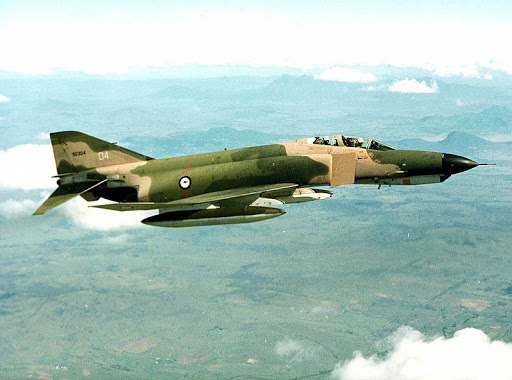
Brief: When Australia’s order for the F-111 was delayed due to concerns with the F-111 design and delays in its development, USA offered the F-4E to the RAAF as an interim measure. 24 served with the RAAF for 3 years when they were returned.
Top Speed: 2140km/hr
Rate of Climb: 190m/s
Armament: 1x 20mm M61A1
Secondary Armament: Bombs, rockets, AA missiles, please refer wiki link below
Useful Links: https://wiki.warthunder.com/unit/f-4e
CF-116A AUP
Spoiler

Brief: The CF-116A AUP is a late life major upgrade program to the Canadian built version of the F-5, with major airframe and avionics taking place.
Top Speed: 1575km/hr
Engine: 2x Orenda-built GE J85-15 , 2925lbf thrust each dry, 4300lbf with afterburner
Armament: 2x 20mm Pontiac M39A2 cannons in the nose, 280 rounds/gun
Secondary Armament: 5 hardpoints with a capacity of 7000lb
Rockets:
2 x CRV-7 rocket pods
2 x LAU-10 rocket pods with 4 x Zuni 127 mm FFARs
2 x Matra rocket pods with 18 x 68 mm SNEBs
Missiles: Provisions for 2 x AIM-9L/M Sidewinder
Bombs:
Mark 80 series of iron bombs
CBU-24/49/52/58 cluster bombs
BL755 cluster bombs
Useful Links: https://forum.warthunder.com/t/canadair-cf-116a-aup-it-wants-to-be-a-hornet/190957
BAE Hawk 127
Spoiler
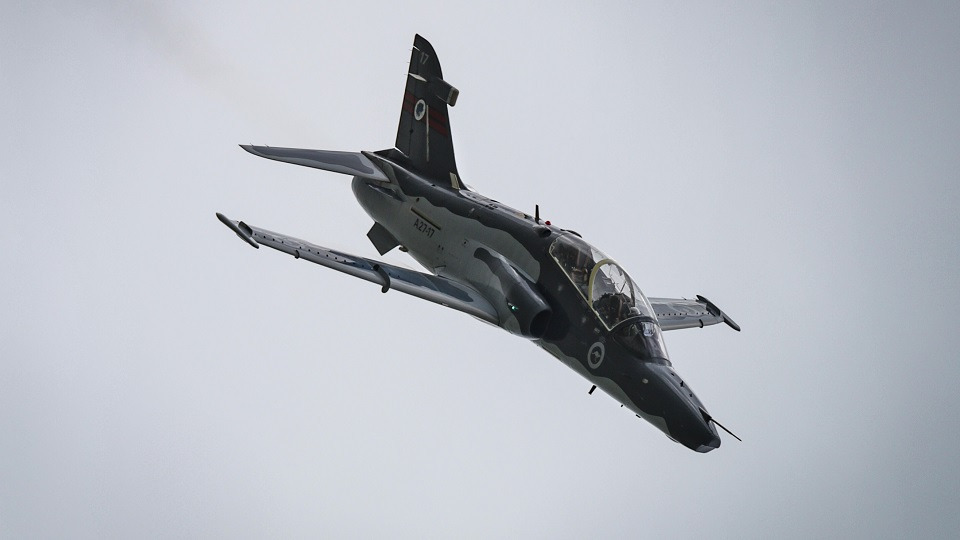
Brief: The BAE Hawk 127 jet trainer is also capable as a combat aircraft. It is the current jet trainer for the RAAF pilots before jumping in Hornets and F-35s.
Top Speed: 1065km/hr in level flight (Never exceed Mach 1.2)
Engine: 1x Rolls-Royce Turbomeca Adour Mk 871
Armament: 1x 30mm ADEN
Secondary Armament: 5 hardpoints capable of using 4x AIM-9M Sidewinder, conventional and laser guided bombs
Useful Links: https://www.airforce.gov.au/aircraft/hawk-127
CF-105 Mk 2
Spoiler
Brief: The CF-105 is often considered one of the greatest “what-ifs” of aviation history. A Canadian designed interceptor of the 1950s with mach 2+ potential may well have been one of the best fighter jets of its day. Sadly it was cancelled with no production orders. The Mk 2 offers a much more powerful Canadian designed engine.
Top Speed: 2964km/hr (mach 2.4)
Engine: 2x Orenda PS-13, 22000lbf dry, 30000lb thrust with afterburner each
Armament: None
Secondary Armament: 2x AIR-2A Genie or 8x AIM-4 Falcon or 4x Canadair Velvet Glove or 2x AIM-7 Sparrow II D
Useful Links: https://en.wikipedia.org/wiki/Avro_Canada_CF-105_Arrow#
CT-155
Spoiler
Brief: The CT-155 was the designation given to the BAE Hawk 115 in Canadian service. It served as Canada’s jet trainer from 2000-2024.
Top Speed: 1028km/hr (Never exceed Mach 1.2)
Engine: 1x Rolls-Royce Turbomeca Adour Mk 871
Armament: 1x 30mm ADEN
Secondary Armament: 5 hardpoints capable of using 4x AIM-9 Sidewinder, conventional bombs and rockets
Useful Links: https://forum.warthunder.com/t/bae-systems-ct-155-hawk-hawk-goes-maple/200181
CP-140
Spoiler
Brief: The CP-140 is a Canadian built maritime patrol aircraft based on the P-3 Orion airframe, with different internals and an electronics suite taken from the S-3 Viking. These aircraft will have very different BRs in air and ground battles due to their weaponry. The BR represented in this suggestion is more about the era it’s from rather than in game performance.
Top Speed: 732km/hr
Engine: 4x Allison T-56A-14-LFE, 4909hp each
Armament: None
Secondary Armament: 8 hardpoints in internal weapons bay, 10 under wing hardpoints. Conventional bombs, Mk 46 Mod V torpedoes, air to surface rockets
Useful Links: https://en.wikipedia.org/wiki/Lockheed_CP-140_Aurora#
CP-140M
Spoiler
Brief: The CP-140 is a Canadian built maritime patrol aircraft based on the P-3 Orion airframe, with different internals and an electronics suite taken from the S-3 Viking. These aircraft will have very different BRs in air and ground battles due to their weaponry. The BR represented in this suggestion is more about the era it’s from rather than in game performance. The CP-140M is the result of a modernization program focused on electronics and avionics.
Top Speed: 732km/hr
Engine: 4x Allison T-56A-14-LFE, 4909hp each
Armament: None
Secondary Armament: 8 hardpoints in internal weapons bay, 10 under wing hardpoints. Conventional bombs, Mk 46 Mod V torpedoes, air to surface rockets
Useful Links: https://en.wikipedia.org/wiki/Lockheed_CP-140_Aurora#Aurora_Incremental_Modernization_Project
F-111C Early
Spoiler
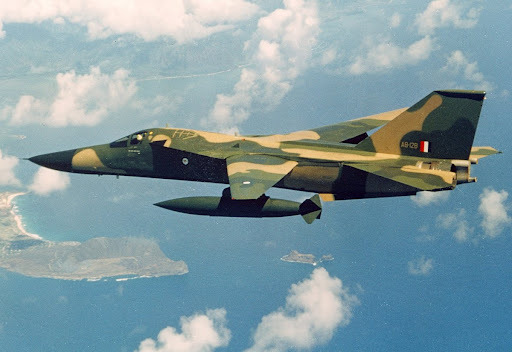
Brief: The F-111C is Australia’s version of the F-111, and during its lifetime achieved cultural icon status in our country. One primary difference is that it had longer wings from an F-111B. I have done a suggestion post on this aircraft before linked below. The version here in the tree is the Early version. Different to an F-111A but overall very similar in capability.
Top Speed: Mach 2.4
Engine: 2 × Pratt & Whitney TF30-P-103, 9,800 lbf thurst dry, 18,500 lbf with afterburner
Armament: (Optional) 1x20mm M61A1 in weapons bay
Secondary Armament: 9 hardpoints able to use AIM-9B Sidewinders, Mk 82/84 general purpose bombs, 31,500lb total
Useful Links: https://forum.warthunder.com/t/general-dynamics-f-111c-early-and-late-versions/49158
F-111C Late
Spoiler
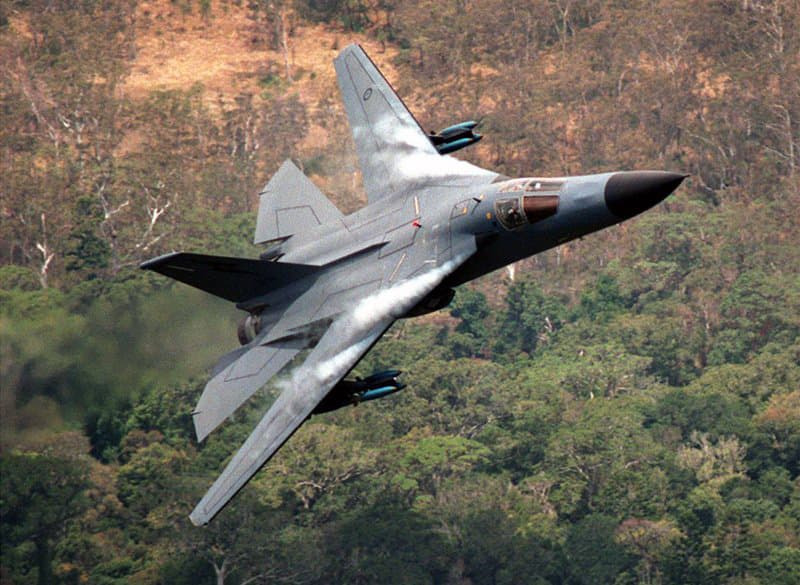
Brief: The F-111C is Australia’s version of the F-111, and during its lifetime achieved cultural icon status in our country. One primary difference is that it had longer wings from an F-111B. I have done a suggestion post on this aircraft before linked below. The version here in the tree is the Late version, with many upgrades to the weaponry and engines.
Top Speed: Mach 2.4
Engines: 2 × Pratt & Whitney TF30-P-109 with 20,840lbf thrust with afterburner
Armament: (Optional) 1x20mm M61A1 in weapons bay
Secondary Armament: 9 hardpoints able to use AIM-9M Sidewinders, Mk 82/84 general purpose bombs, AGM-142 Popeye, AGM-84 Harpoon, Paveway II laser-guided bombs, GBU-15 glide bombs, 31,500lb total
Useful Links: https://forum.warthunder.com/t/general-dynamics-f-111c-early-and-late-versions/49158
YF-17
Spoiler

Brief: The prototype fighter for the Hornet, Canada got access to testing during which time it was painted in RCAF livery.
Top Speed: 2120km/hr
Engines: 2x General Electric YJ101-GE-100, 9479lbf thrust dry, 15000lbf thrust with afterburner each
Armament: (Optional) 1x20mm M61A1 cannon
Secondary Armament: 2x AIM-9 Sidewinder, 2x drop tanks
Useful Links: https://en.wikipedia.org/wiki/Northrop_YF-17#
F-111G Aardvark
Spoiler
Brief: Australia acquired 15 F-111Gs to reduce the flight hour demand on their existing F-111C fleet. As far as I know, most of its capability was brought in line with the F-111C. If the RAAF F-111G in service has a difference that would be noticeable in game, I’d like to hear about it. But since it exists and is very similar to the F-111C Late, it becomes a premium offering in the vein of other nations’ strike aircraft premiums.
Top Speed: Mach 2.4
Engines: 2 × Pratt & Whitney TF30-P-109 with 20,840lbf thrust with afterburner
Armament: (Optional) 1x20mm M61A1 in weapons bay
Secondary Armament: 9 hardpoints able to use AIM-9M Sidewinders, Mk 82/84 general purpose bombs, AGM-142 Popeye, AGM-84 Harpoon, Paveway II laser-guided bombs, GBU-15 glide bombs, 31,500lb total
Useful Links: https://forum.warthunder.com/t/general-dynamics-f-111c-early-and-late-versions/49158
Rank 8
Spoiler
F/A-18A Hornet
Spoiler
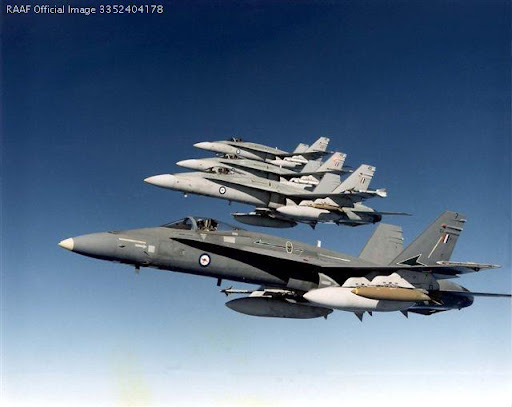
Brief: The Hornet was the replacement to the Mirage in Australian service. The majority of them were built in Australia. The initial specification however was almost identical to the USA Hornets. This Hornet in the tech tree is the A model, as introduced in the mid 80s.
Top Speed: 1915km/hr at 12000m (Mach 1.8)
Rate of Climb: 250m/s
Armament: 20mm M61A1 cannon, 578 rounds
Secondary Armament: 9 hardpoints (2 wingtip missile rails, 4 underwing, 3 under fuselage), able to use AIM-9M Sidewinder (underwing hardpoints with double racks, for 10 total Sidewinders), 2x AIM-7M Sparrow, Mk 80 Series general purpose bombs, Paveway II laser guided bombs, 1200L drop tanks
Useful Links: https://en.wikipedia.org/wiki/McDonnell_Douglas_F/A-18_Hornet_in_Australian_service
F/A-18A Hornet HUG 2.4
Spoiler

Brief: HUG (Hornet Upgrade Program) saw countless improvements to the Australian F/A-18A fleet. This latest of Hornets is similar in capability to an American F/A-18C. The AIM-9Ms have been replaced by ASRAAMs (unique to the Australian Hornets as other models would continue on with later model Sidewinders), and the AIM-7Ms have been replaced by AIM-120 AMRAAMs. AGM-158 JASSM and AGM-84 Harpoon Block II anti-ship missile have also been integrated. Improved radars, countermeasure systems, HMD and the addition of LITENING targeting pods are all now present as well.
Top Speed: 1915km/hr at 12000m (Mach 1.8)
Rate of Climb: 250m/s
Armament: 20mm M61A1 cannon, 578 rounds
Secondary Armament: 9 hardpoints (2 wingtip missile rails, 4 underwing, 3 under fuselage), able to use ASRAAM, AIM-120 AMRAAM, Mk 80 Series general purpose bombs, Paveway II laser guided bombs, 1200L drop tanks, AGM-158 JASSM, AGM-84 Harpoon Block II, AN/AAQ-28(v) LITENING targeting pod
Useful Links: https://en.wikipedia.org/wiki/McDonnell_Douglas_F/A-18_Hornet_in_Australian_service
F/A-18F Super Hornet
Spoiler

Brief: Australia selected the two seat F/A-18F Super Hornet to replace its F-111s. Physically larger with more ordinance capacity than the classic Hornet, it is more targeted to multi-role use.
Top Speed: 1960km/hr (Mach 1.6)
Rate of Climb: 228m/s
Armament: 1x 20mm M61A2, 412 rounds
Secondary Armament: 11 total (2 wingtip missile rails, 6 under wings, 3 under fuselage) capable of using AIM-9X Sidewinder, AIM-120 AMRAAM, JDAM bombs, Mk 80 series general purpose bombs, Paveway II laser guided bombs, AGM-154 JSOW, AGM-84 Harpoon, AGM-158C LRASM
Useful Links: https://www.airforce.gov.au/aircraft/18f-super-hornet
CF-188
Spoiler
Brief: The Hornet was the replacement to the CF-104, CF-101 and CF-116 in Canadian service. The CF-188 is partially built in Canada with some minor differences, but this early service model is largely identical to the F/A-18A.
Top Speed: 1915km/hr at 12000m (Mach 1.8)
Rate of Climb: 250m/s
Armament: 20mm M61A1 cannon, 578 rounds
Secondary Armament:
Rockets:
152 x 70mm CRV-7 rockets in 8x LAU-5003 pods (Dual racks on outboard and inboard pylons)
Missiles:
6 x AIM-9L/M Sidewinders (Wingtips & outboard pylons with dual racks)
4 x AIM-7F/M Sparrows (Fuselage recesses & outboard pylons)
4 x AGM-65 Mavericks (Unknown version, likely F or G), inboard and outboard pylons
Bombs:
10x Mk-20 Rockeye cluster bombs (Dual racks on outboard, inboard, and centreline pylons)
10x BL-755 cluster bombs (Dual racks on outboard, inboard, and centreline pylons)
10x Mk.82 500 lb bombs (Dual racks on outboard, inboard, and centreline pylons)
9x Mk.83 1000 lb bombs (Dual racks on outboard and inboard pylons, single bomb on centreline pylon)
4x Mk.84 2000 lb bombs (outboard and inboard pylons)
4x GBU-12 500 lb laser guided bombs (outboard and inboard pylons)
4x GBU-16 1000 lb laser guided bombs (outboard and inboard pylons)
2x GBU-10 2000 lb laser guided bombs (outboard pylons)
2x GBU-24 2000 lb laser guided bombs (outboard pylons)
Useful Links: https://en.wikipedia.org/wiki/McDonnell_Douglas_CF-18_Hornet
CF-188 IMP I
Spoiler
Brief: The Hornet was the replacement to the CF-104, CF-101 and CF-116 in Canadian service. The CF-188 is partially built in Canada. IMP (Incremental Modernization Program) phase I includes a slew of avionics and electronics upgrades as well as new weaponry, such as the AIM-120.
Top Speed: 1915km/hr at 12000m (Mach 1.8)
Rate of Climb: 250m/s
Armament: 20mm M61A1 cannon, 578 rounds
Secondary Armament:
Missiles and Rockets:
AIM-9M/X Sidewinder (2 x Wingtip Pylons, 2 x dual mounts on outboard Pylons)
AIM-7F/M Sparrow ( 4 x Wing Pylons, 2 x Fuselage Mounts)
AIM-120 AMRAAM ( 4 x LAU-115 Dual mounts on Wing Pylons, 2 x Fuselage Mounts)
Rockets:
AGM-65 Mavericks ( 4 x Wing Pylons)
CVR7 rockets ( 4 x Dual Mounts on Wing Pylons (152 Rockets in total)
Bombs:
Mk 80 series unguided/ retarded bombs (Centreline and Wing Pylons)
GBU-10, -12, -16, -24, -49 laser guided bombs (Wing Pylons)
JDAM GPS bomb guidance kits (Centreline and Wing Pylons)
Mk 20 Rockeye/ BL-755 Cluster Bombs (Centreline and Wing Pylons)
Useful Links: https://forum.warthunder.com/t/mcdonnell-douglas-cf-188-cf-18-hornet-imp-i-canadian-fury/37867
CF-188 IMP II
Spoiler
Brief: The Hornet was the replacement to the CF-104, CF-101 and CF-116 in Canadian service. The CF-188 is partially built in Canada. IMP (Incremental Modernization Program) phase II includes further electronics upgrades including the addition of a HMD.
Top Speed: 1915km/hr at 12000m (Mach 1.8)
Rate of Climb: 250m/s
Armament: 20mm M61A1 cannon, 578 rounds
Secondary Armament:
Missiles and Rockets:
AIM-9M/X Sidewinder (2 x Wingtip Pylons, 2 x dual mounts on outboard Pylons)
AIM-7F/M Sparrow ( 4 x Wing Pylons, 2 x Fuselage Mounts)
AIM-120 AMRAAM ( 4 x LAU-115 Dual mounts on Wing Pylons, 2 x Fuselage Mounts)
Rockets:
AGM-65 Mavericks ( 4 x Wing Pylons)
CVR7 rockets ( 4 x Dual Mounts on Wing Pylons (152 Rockets in total)
Bombs:
Mk 80 series unguided/ retarded bombs (Centreline and Wing Pylons)
GBU-10, -12, -16, -24, -49 laser guided bombs (Wing Pylons)
JDAM GPS bomb guidance kits (Centreline and Wing Pylons)
Mk 20 Rockeye/ BL-755 Cluster Bombs (Centreline and Wing Pylons)
Useful Links: https://en.wikipedia.org/wiki/McDonnell_Douglas_CF-18_Hornet
CF-188 HEP
Spoiler
Brief: The Hornet was the replacement to the CF-104, CF-101 and CF-116 in Canadian service. The CF-188 is partially built in Canada. HEP (Hornet Extension Program) is the latest set of upgrades, including later models of AMRAAMs and AESA radars.
Top Speed: 1915km/hr at 12000m (Mach 1.8)
Rate of Climb: 250m/s
Armament: 20mm M61A1 cannon, 578 rounds
Secondary Armament:
Missiles and Rockets:
AIM-9M/X Sidewinder (2 x Wingtip Pylons, 2 x dual mounts on outboard Pylons)
AIM-7F/M Sparrow ( 4 x Wing Pylons, 2 x Fuselage Mounts)
AIM-120 AMRAAM ( 4 x LAU-115 Dual mounts on Wing Pylons, 2 x Fuselage Mounts)
Rockets:
AGM-65 Mavericks ( 4 x Wing Pylons)
CVR7 rockets ( 4 x Dual Mounts on Wing Pylons (152 Rockets in total)
Bombs:
Mk 80 series unguided/ retarded bombs (Centreline and Wing Pylons)
GBU-10, -12, -16, -24, -49 laser guided bombs (Wing Pylons)
JDAM GPS bomb guidance kits (Centreline and Wing Pylons)
Mk 20 Rockeye/ BL-755 Cluster Bombs (Centreline and Wing Pylons)
AGM-154C
Useful Links: https://en.wikipedia.org/wiki/McDonnell_Douglas_CF-18_Hornet
E/A-18G Growler
Spoiler
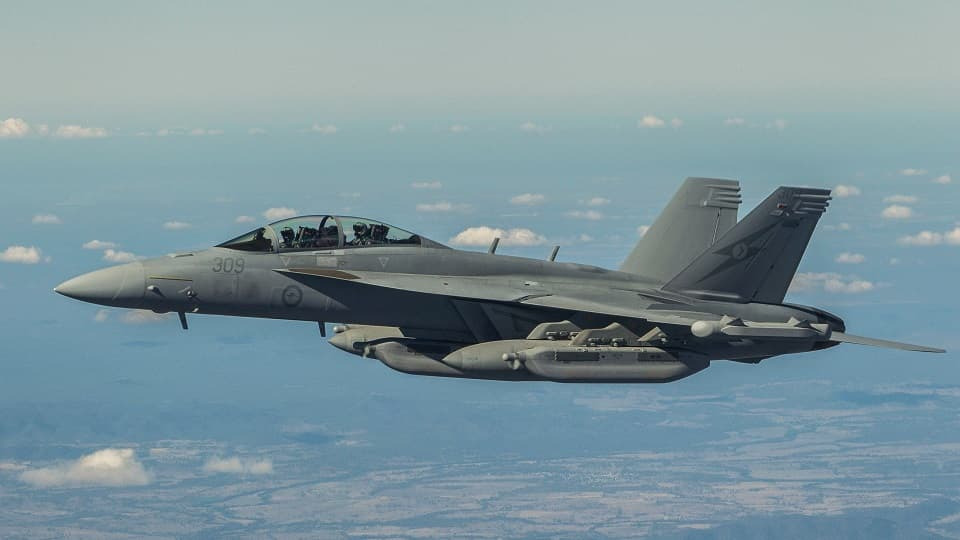
Brief: The Growler is an electronic warfare specialist version of the Super Hornet. Australia operates 12 of them making them the only current operator outside of USA. While much of the Super Hornets’ weapons suite is gone, what the Growler does have is easy to imagine these aircraft being very powerful in ground battles and useful in air battles. The Australian Growler was slightly unique in that it retained the capability to use AIM-9X Sidewinders, before USA were using them on theirs.
Top Speed: 1960km/hr (Mach 1.6)
Armament: ALQ-99 low band (centre hardpoint) and high band (mid-board hardpoint) jamming pods, ALQ-218 detection pods on wingtips
Secondary Armament: 2x AIM-120 AMRAAM on remaining fuselage hardpoints, and either AIM-9X or AGM-88 anti-radiation missiles on remaining 4 underwing hardpoints
Useful Links: https://www.airforce.gov.au/aircraft/ea-18g-growler
Higher Ranks
F-35s could come to both Australia and Canada in War Thunder in the future. Canada is additionally considering alternatives options to supplement the F-35, so what we see in the near future is up in the air. (Some pun intended)
We hope you appreciate the passion that went in to these projects, seeing better treatment of Australia, Canada and New Zealand in WT is something we care about.
Due to the closeness of our nations’ military history, many aircraft will get unlockable skins from all 3 nations save for where there is a direct representation of the equivalent model from the other nations.
This tree is far from an exhaustive list of “every aircraft” ever operated by these nations, so many additions could be made that would mostly to our knowledge be the so-called “copy paste”. The few copy paste options we used were either for a perceived gap in the tree or for historical significance. And we do see there is some redundancy in the Mosquito and Hornet models of both nations, they were nonetheless included for respect to both nations and the minor differences in these aircraft.

